




What can you find in Bermuda? Cotton candy skies. Pink sand beaches. Crystal-clear blue waters. The chance to disappear. Sway to the rhythm of island life as you discover the natural wonders, rich history and vibrant culture. Take the time to slow down and get lost in each moment, knowing that another will reveal itself all too soon. That’s the magic of Bermuda.




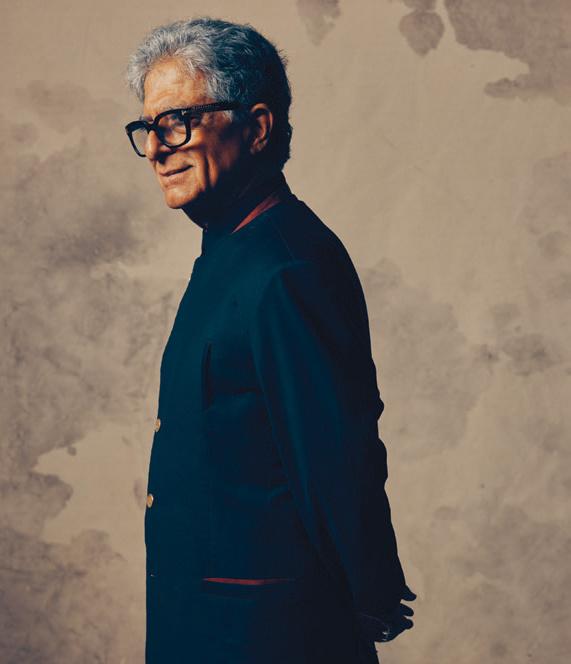

CHAIRMAN
Jim McCann
CHIEF EXECUTIVE OFFICER
Josh Kampel
PRESIDENT
Paul Stamoulis
EDITORIAL DIRECTOR
SENIOR EDITOR
STAFF EDITOR
CREATIVE DIRECTOR
CONTRIBUTORS
Dan Costa
Eva Crouse
Gabrielle Doré
Nicole Dudka
Jason Allen Ashlock, Alec Applebaum, Cait Bazemore, Alexis Buncich, Kirsten Cluthe, Bob Diamond, Deborah Grayson, Max Isaacman, Larry
Kantor, Jonathan Russo, Tim Stevens
VP OF PARTNERSHIPS & DIRECTOR, LEADING ADVISORS
VP OF PARTNERSHIPS
VP OF LEADING ADVISORS
VP OF ACCOUNT SERVICES
JEWELRY & WATCH SALES DIRECTOR
Greg Licciardi
Ron Stern
Kevin Haniffy
Kendall Wyckoff
Heather Hanson
HEAD OF MARKETING
MARKETING COORDINATOR
DIRECTOR OF HOSPITALITY
Clyde Lee III
Payton Turkeltaub
Kimberly Anderson-Marichal
Our Mission Is Building Worth Beyond Wealth
Worth helps our influential, successful community better invest their time and money. We believe business is a lever for social and economic progress. From practical financial advice to exclusive profiles of industry leaders, Worth inspires our readers to lead more purpose-driven lives. Through our conferences, digital channels, and quarterly print publication, we connect the people and companies that are building the future. We showcase products and services that are indulgent, luxurious, and sustainable.




































An unexpected friendship sparked a new book, transforming a weekly newsletter into a blueprint for living your best life through timeless self-help principles.
BY JIM MCCANN
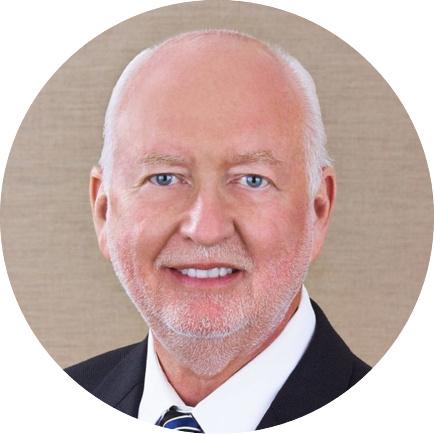
What’s the key to a happy and fulfilling life? Is it money or health? Intelligence or ambition? More friends or better friends? According to thousands of years of expert advice, the secret to improving your life is a mix of all the above.
Anyone seeking self-help ideas faces an overwhelming amount of sometimes conflicting information. You could spend a lifetime exploring advice in sources ranging from the Bible and Aristotle’s scrolls to Dale Carnegie’s lectures and the millions of books and websites available today.
What’s missing is a comprehensive guide that showcases the best advice and demonstrates how to apply it to your life.
I encountered this situation during the pandemic when I started writing the Celebrations Pulse letter to stay connected with 1-800-Flowers.com’s customers and brands. The goal of the weekly letter wasn’t to sell products; rather, I aimed to foster community and offer insights on building stronger relationships.
The letter became more popular than I ever imagined, prompting me to dig deeper into the self-help library for inspiration. I began questioning how anyone could untangle and benefit from all this information.
While researching for a Celebrations Pulse letter, I found a fascinating article in Psychology Today about the pandemic’s impact on connection. It was written by Dr. George S. Everly, Jr., an esteemed clinical psychologist and public health expert who holds faculty positions at the Johns Hopkins Bloomberg School of Public Health and School of Medicine.
Impressed by the article, I wrote to him asking if he’d like to chat. Soon after our first conversation, George and I started referring to ourselves as “COVID buddies.” Our friendship grew, and we discovered that we shared the desire to be the best versions of ourselves, help others do the same, and combat the epidemic of loneliness.
I invited George to join 1-800-Flowers.com’s Connectivity Council, a panel of experts who advised on topics and provided expertise for Celebrations Pulse. He introduced me to his community of psychologists while I extended introductions to my network of academic and business friends.
When he invited me to work on a book together, I was flattered. He suggested that writing a book would help focus our thoughts and share them with a wider audience. I immediately agreed.
Two years later, we’re publishing Lodestar, a self-help book unlike any other. It draws on themes from the most influential and credible self-help books of the last century— books that have collectively sold hundreds of millions of copies—and dives into those themes with insights and anecdotes from me, George, and other notable figures.
We began by conducting a factor analysis, comparing the content of each top book to determine which topics appeared most frequently. We then filtered the list through our own experiences and those of historical figures, celebrities, and our friends.
Lodestar explores key principles such as harnessing optimism, building resilience, improving time management, embracing happiness, and strengthening relationships. Most importantly, we show you how to make these top ideas work for you.
As we wrote in the introduction: “If you close this book feeling more equipped to find success—whether you want to make it on your own terms, make the world a better place, or simply make it through the challenges ahead—and to be kind to yourself and others along the way, our job here is done.”
Lodestar has been a labor of love for George and me. Working on this project deepened our bond, turning the process of research and writing into a journey of mutual growth and discovery.
Our collaboration was driven by a shared commitment to meaningful work that has the power to change lives. Partnering with someone who shares your vision adds a profound layer of satisfaction to a project. George’s friendship has been a true gift in my life.

We hope Lodestar becomes a beacon for those seeking to navigate their paths to success, happiness, and fulfillment. May this book serve as the starting point for your incredible journey toward becoming the best version of yourself.
— Jim McCann FOUNDER, 1-800-FLOWERS CHAIRMAN, WORTH MEDIA

Nestled in the heart of the Lowcountry, Palmetto Bluffs’ 20,000 acres and 32 miles of coastline are yours to explore. Roam through centuries-old live oaks canopied over Mother Nature’s inspired creations and historical landmarks. Here, the land pulls you towards something familiar and inviting – the discovery that home isn’t just a place to live; it’s a place that makes you feel alive.


Join us in celebrating the companies prioritizing sustainability and corporate responsibility.
BY JOSH KAMPELL
As we navigate the complexities of today’s global landscape, the role of leadership has never been more challenging or critical. Today, business leaders are tasked with balancing the diverse needs of their stakeholders—customers, employees, investors, and communities— while confronting the rapid pace of technological innovation, such as the rise of transformative AI.
In recognition of the companies successfully navigating this complex landscape, we are proud to introduce our inaugural Impact 150 list—a curated selection of companies that have made significant commitments to the United Nations Sustainable Development Goals (SDGs). These companies are not just leaders in their industries; they are mastering the intricate balance between profitability and purpose. In today’s environment, managing this balance
requires making difficult decisions prioritizing long-term sustainability over short-term gains, all while remaining agile enough to respond to rapidly evolving market demands. These companies are setting new standards for corporate responsibility in a world where the pressure to deliver financial performance must be aligned with the imperative to make a positive social and environmental impact.
This issue also features an interview with Deepak Chopra and the CEO of the Chopra Foundation, Poonacha Machaiah. Dr. Chopra has been a trusted advisor to countless leaders across various sectors. His insights on mindfulness, holistic well-being, and the power of consciousness have guided many CEOs, entrepreneurs, and public figures in their decision-making processes. We are proud to partner with the Chopra Foundation on their Sages & Scientists conference, which will bring together some of the bright-
est minds in science, technology, and spirituality to address the critical issues facing humanity. This collaboration underscores our ongoing commitment to fostering meaningful dialogue addressing today’s leaders’ challenges.
Within this same context, the theme of our upcoming Techonomy 24 conference will be Leading with Intelligence. Over three days, we will explore how leaders can harness human and artificial intelligence to drive meaningful progress. The conversation will extend beyond AI to examine the critical balance between technological advancement and the human capacity for empathy, understanding, and connection. Our Techonomy conference has been a platform for over a decade where technologists, business executives, academics, and government officials converge to explore the intersection of technology, business, and impact.
At Worth, we believe that spotlighting these extraordinary companies and collaborations can inspire our readers to lead with intelligence in their domains, leveraging technology and human insight to navigate complexity and drive positive change. Together, we can build a more sustainable, equitable, and prosperous future for all.
— Josh Kampel CEO, WORTH MEDIA josh.kampel@worth.com

See how the leading donor-advised fund can add flexibility and ease to your family foundation.
Worth found 150 companies pushing the boundaries of corporate responsibility.
BY DAN COSTA
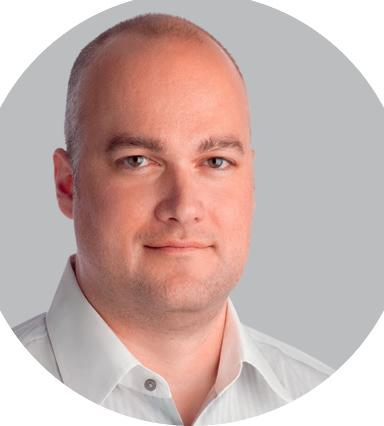
When the United Nations unveiled the Sustainable Development Goals (SDGs) in 2015, they were audacious, ambitious, and, to my cynical eyes, almost hopelessly idealistic. The collection’s 17 goals are a kitchensink wishlist for a dramatically better world where poverty and hunger are eradicated, good health and education are universally accessible, and climate action is not just an obligation but a priority. The SDGs are noble, inarguable, and undeniable. That is why they were adopted by a unanimous vote of all 193 member nations.
But are they truly attainable? Progress has been made, but the world still needs to achieve these ambitious goals. We have seen success in areas like renewable energy and health, but we face daunting challenges, particularly in combating hunger, reducing inequality, and preserving biodiversity.
As we approach the halfway mark of the 2030 deadline, the finish line is far from clear.
To be sure, there have been notable successes since the SDGs were launched. Take, for instance, Goal 3: Good Health and Well-being. Global efforts to combat diseases, improve maternal health, and provide vaccine access have saved millions of lives. The global under-five mortality rate has been cut by nearly half since 2000, largely thanks to these efforts. (Note,
the COVID pandemic was relatively benign for children under five.) In Goal 7: Affordable and Clean Energy, we’ve seen renewable energy capacity more than double in the last decade, with solar and wind power leading the charge in reducing reliance on fossil fuels.
But for every step forward, there are areas where progress has stalled or even reversed. Goal 2: Zero Hunger is a stark example. Despite early gains, global hunger is again rising, driven by conflict in regions like Yemen and South Sudan. As of this writing, 1.5M people are at risk for starvation in the Darfur region. The number of undernourished people in the world has increased from 624 million in 2014 to over 800 million today.
Goal 15: Life on Land also presents a sobering picture. Despite increased awareness and conservation efforts, the rate of biodiversity loss remains alarming. We are losing species at a rate unprecedented in human history, and this decline is directly linked to human activities, from deforestation to climate change.
The SDGs were not just a set of guidelines—they were a call to action for governments, businesses, and individuals alike. Although I have been skeptical from the beginning, I have been impressed by the willingness of some businesses to commit to these lofty goals.
Worth’s Impact 150 is our way of highlighting companies moving the needle. These companies are not perfect—they are still businesses—but they are committed to making a difference. They understand that in today’s world, businesses can no longer afford to operate in a vacuum. We built the list in partnership with Karma Wallet, which aggregates data from over 30 trusted third-party sources to evaluate companies’ social and environmental performance.
The Impact 150 businesses are not merely responding to market pressures or regulatory requirements—they are driven by a genuine desire to effect change. Here are just a sample:
n Apple: It is on track to become carbon neutral across its entire business by 2030, having already achieved 100% renewable energy usage across its global corporate operations.
n Bank of America: BoA has committed $1 trillion by 2030 towards sustainable investments, already achieving carbon neutrality in its operations and procuring 100% renewable electricity by 2019.
n L’Oréal: It has reduced the carbon emissions of its production sites by 81% since 2005, while production volumes have increased by 37%.
n Nike: Since 2015, Nike has reduced its carbon emissions per unit of revenue by 30%, and 100% of its North American facilities are powered by renewable energy.
By spotlighting these trailblazers, we can inspire others to follow suit.
I first saw the multi-colored wheel that is the Sustainable Development Goals pin on the lapel of David Kirkpatrick, the founder and former editor-inchief of Techonomy. I bought one shortly after that. Since then, I have seen them worn by tattooed hipsters in the East Village and captains of industry in Davos. Much as a flag pin is part of the standard politician’s uniform, the SDG pin seems to signify a particular global citizenship. This is virtue signaling, no doubt, but at least these are virtues common to 196 nations. That alone is worth celebrating.
— Dan Costa EDITORIAL DIRECTOR dan.costa@worth.com

Oliver Rist is a long-time journalist specializing in all kinds of technology. Though he lives in Connecticut, he’s traveled the world, usually astride a motorcycle. Riding like this, he’s motored up and down Route 66, negotiated an ocean of switchbacks across the Alps touching Germany, France, and Italy; whizzed through the Andalusians; traveled the length of the Pacific Coast Highway down to Cabo San Lucas in Baja; even dragged a modified Norton up the Tribhuvan Highway in Nepal back when he was younger, dumber, and didn’t yet suffer from altitude sickness. His current rides are a Ducati Diavel and an aging, but nevertheless awesome, BMW K1200S. Since seeing Curtiss Motorcycles’ electric flagship, however, he’s started dreaming about one of those and maybe figuring out how to EV restomod a ‘69 Mustang Mach 1.

Cait Bazemore is a New York City-based journalist with over a decade of experience working with content in the luxury space. In recent years, Cait has specifically honed in on her passion for luxury watches and jewelry. She’s contributed to both print and digital publications including Worth Magazine, Robb Report, The New York Times, Gear Patrol, Watchonista, HODINKEE, The Hour Glass, Revolution, Modern Luxury, and Watches & Culture Forum as well as podcasts like Beyond the Dial and The Deep Track.
In her spare time, Cait writes poetry and completed a residency in Paris working on her debut collection (forthcoming 2024). Most recently, Cait began her journey to becoming an enameller with an apprenticeship under one of the world’s few Grand Feu enamellers, Vanessa Lecci.
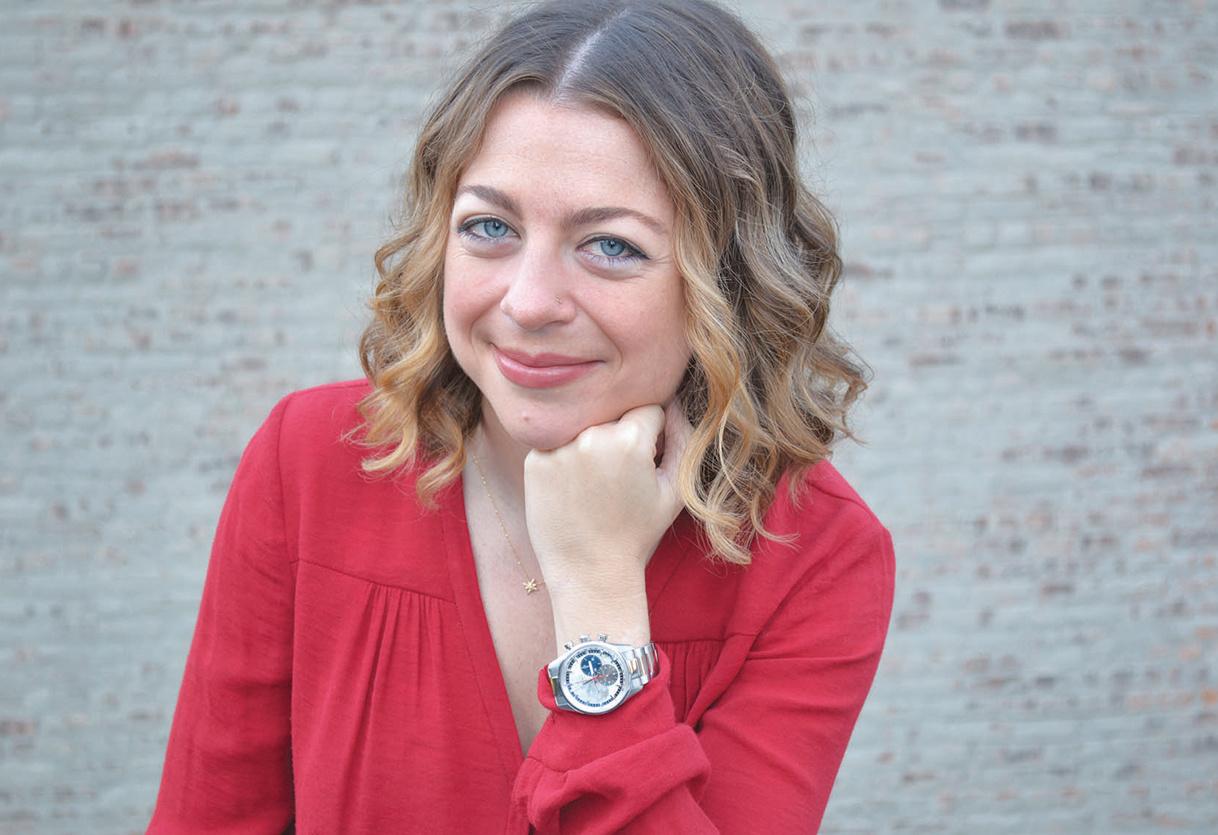
Alexis Buncich is a freelance writer and producer based in New York City. She graduated from Columbia University with a Bachelor of Arts in English Literature. She especially loves writing travel and coming-of-age stories. You can find her work at alexisbuncich.com.


HOST & CURATOR
DEEPAK CHOPRA Founder & Director
CHOPRA FOUNDATION
FEATURED SPEAKERS & MEMBERS INCLUDE:

Sam Altman
Diane von Furstenberg
Gary Vaynerchuk
Kenneth Cole Dava Newman, PhD
Poonacha Machaiah
Carme Artigas
Rudy Tanzi, PhD
Rachel Gerrol
WELL-BEING | HUMANITY | COSMOS
Deepak Chopra hosts global luminaries at the forefront of their fields to unite in conscious collaboration. Sages & Scientists fosters a unique and vibrant community where an unparalleled assembly of visionaries—including worldrenowned entrepreneurs, philosophers, medical experts, scientists, celebrated musicians, and influential artists—converge. Together, they collaborate and unlock innovative pathways to address the most pressing global challenges related to well-being, humanity, and the cosmos.
The Chopra Foundation invites you to join this transformative movement.
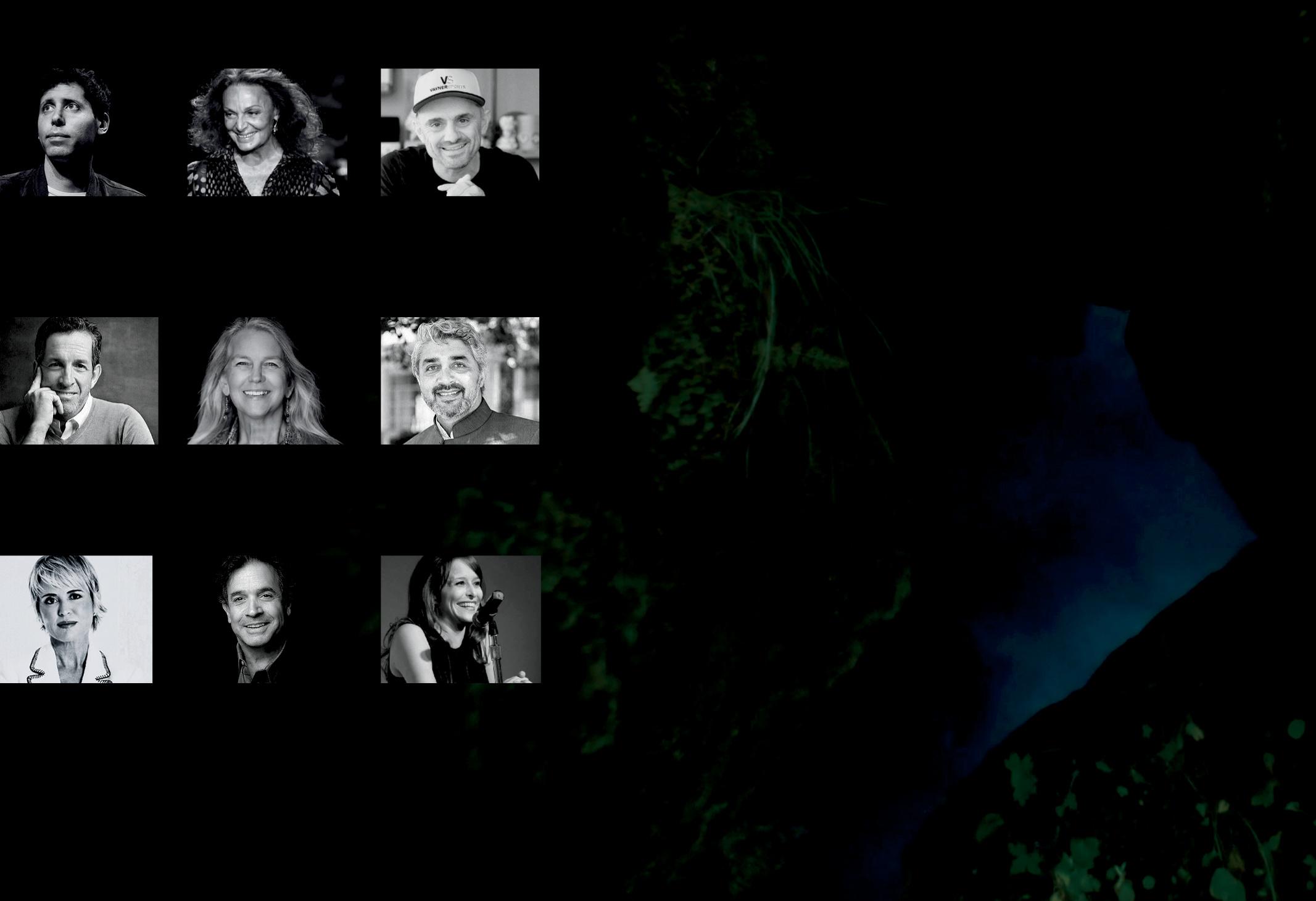
Learn more about becoming a member or sponsoring our upcoming global programs: sagesandscientists.org
But don’t worry, CEO Peter Rawlinson has a plan to fix that.
BY TIM STEVENS
Peter Rawlinson is sick of the industry not taking his company and its cars seriously.
“Back in 2020, when I said we’re going to have the best car in the world, everyone said it’s vaporware. They really did! When I said we’re going to have over 500 miles range. That was laughed at. They said it was impossible. Then, in ‘21, we brought it out. EPA range? Five hundred twenty miles for our very first model, the Air Dream,” he told me, getting increasingly animated as he recounted each successive slight.
The Air is Lucid’s first effort, and Rawlinson, the company’s CEO, certainly has plenty to be proud of. A long, low, lithe, and luxurious all-electric sedan with unmatched range and power, the Air gives an impression of what a next-generation Tesla Model S might be like. Before Lucid, Rawlinson was chief engineer of the Model S, Tesla’s top sedan.
The Lucid Air entered the market in 2021, selling just a handful that year. Its sales are still slight,

less than 9,000 annually, but the company is proud to point out that this figure bests the annual sales of luxury EV heavyweights like the Porsche Taycan or Mercedes-Benz EQS.
Of course, those manufacturers have plenty of other cars to bolster their numbers and keep them afloat. For Lucid, selling 9,000 cars a year is not sustainable. But Rawlinson has big goals: over a million cars sold per year within a decade.
A primary challenge in driving that kind of growth is retail presence. Lucid has fewer than 30 so-called Studios nationwide, but they’re not dealerships, so you can’t buy cars there in many states. You must order online. Likewise, Lucid
has fewer than 50 service locations in the U.S.
I’ve been lucky enough to drive every flavor of the Air since its inception, and every time, I’ve been impressed. It’s not only a big car; it’s a heavy one, weighing roughly 4,500 and 5,500 pounds, depending on configuration.
It’s not a car that hides its weight. When cruising down a busted and broken stretch of asphalt, which is all-too-common near my home in Upstate New York, the Air seems barely affected. It telegraphs confidence as if to say you’d need to find more aggressive terrain to threaten its poise.
That stately composure would seemingly translate into a blasé
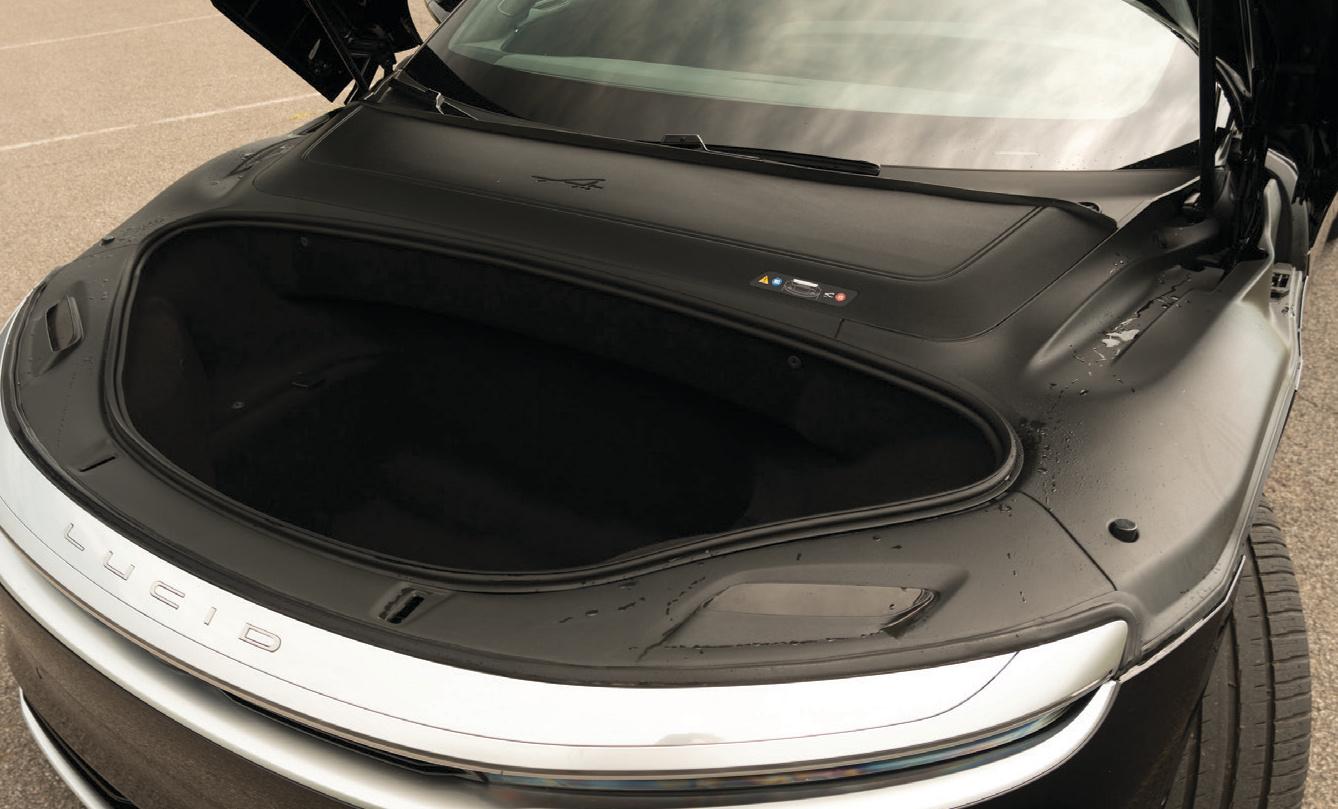

feel on twistier stretches of road. Amazingly, the Air shines here, too. Though the Lucid’s steering is a bit muted, it is swift, resulting in a car that eagerly darts through corners. As you step up through the Air lineup, that willingness increases. On the low end is the basic Pure, the rear-wheel-drive, single-motor flavor, which makes do with 430 horsepower. From there, you can pay $8,000 more for a dual-motor Touring model with 620 horsepower and all-wheel drive or continue up to the Grand Touring model, with 819 hp plus a range-topping 516 miles of range and a $109,900 starting price.
At the pinnacle of the Air lineup is the three-motor, $249,900 Sap-
phire. It looks the same as the rest but is on another planet performance-wise. With 1,234 horsepower, it accelerates from zero to 60 mph in 1.89 seconds. Put your foot on the accelerator, and you’re immediately treated to the sort of starfielddistortion view that Disney’s effects gurus spend months rendering for the Star Wars spinoff du jour. Forget impressing your friends; experiencing a launch in the Sapphire is borderline terrifying.
Despite this, the car still delivers the calm composure and poise of the rest of the Airs. You still get the same acres of legroom inside. You still get the giant trunk and frunk for a combined 32 cubic feet of cargo space (more than twice that offered
in a Mercedes-Benz S-Class).
THE CATCH
Good as it is, the Air has one crucial flaw: It’s a sedan, a dying species of car. The market demands SUVs, and Lucid finally has one of those coming. It’s called Gravity, and it will seat seven across three rows. Thanks to its compact electric powertrain, the second and third rows quickly and easily fold flat into the floor, creating an open space with acres of room.
“I’d like to actually provide an inflatable mattress in the back as well because you actually can go camping in the thing,” Rawlinson said.
Where the Air could be seen as a passion project, an opportunity to trump Tesla’s halo car, the Gravity is a more logical volume play. “If you look at the total addressable market for Gravity, it’s six times that of Air, and we’ve guided for the manufacture of 9,000 Airs this year,” Rawlinson said. “Six times nine is 54. That should be a reasonable production number.”
Producing 54,000 cars is a big step up for the company, but far from the million vehicles per year that Rawlinson wants Lucid to make by the early 2030s. They’ll need something more affordable than Gravity, starting at around $80,000 to do that.
Cue a new series of smaller, more affordable Lucid machines meant to directly target Tesla’s Model 3 and Model Y, offering a variety of crossover SUV shapes for different purposes -- some more sporty, some more lifestyle—with a starting price of around $45,000.
The first more affordable options will not enter production until 2026. Gravity, however, will hit the road this year. Just like with Air, Rawlinson is talking big ahead of its launch, saying Gravity will be quicker than a Lamborghini Urus with the comfort of a Cadillac Escalade.
“I think it’s going to be the best SUV in the world. Nothing less will suffice,” he said. Those are some serious promises; this time, we’d be wise to take them seriously.
Discover the art of transforming heirloom stones into cherished jewelry pieces with insights from two expert designers, Anthony Robert and Jean-Paul Xavier.
BY GABRIELLE DORÉ
Every morning, I follow the same routine: brush my teeth, do my skincare, take supplements, apply makeup, and put on jewelry. But unlike adding 50 SPF, when I put on the diamond ring that ordains my left pinky, apply the back to each diamond stud post, and snap shut the miniature hoops, or “huggies” as they are often referred to, I feel a sense of comfort.
Not because of the stones themselves but rather because each one used to be my grandmother’s. When she passed, she made a point that my mother, sister, and I keep and reuse each stone we inherited. Understanding the unique experience of working with a jewelry designer to create a custom piece, Worth decided to sit down with two expert designers, Anthony Robert and Jean-Paul Xavier, who combined have over 60 years of experience. Together they outline their unique processes and how to create a piece that is promised to be cherished for generations to come.
Anthony Robert, a seasoned jewelry designer with over four decades of experience, began his journey in the jewelry industry serendipitously. “I was an engineer for General Motors for 13 years,” stated Robert. “[I] went to their college of engineering called ‘General Motors Institute’ [but] engineers weren’t paid that well back in the late 70s and early 80s due to the gas crisis [and] I needed extra money to buy Christmas
gifts for my [family], so I started doing jewelry on the side, selling to the 5,000 employees we had working at the GM. I did that for about five years before I made the decision to quit and go into a flea market,” he explained.
Marked by a dedication to creating timeless pieces using both natural and lab-grown diamonds, Robert’s approach to jewelry is deeply rooted in engineering principles, ensuring that every piece is as durable as it is beautiful.
Jean-Paul Xavier, a former industrial designer and mechanical engineer, transitioned into the jewelry industry after moving from Australia to New York. His career took a significant turn when he joined David Yurman, where he worked for a decade, ascending to the research and development director role. During his tenure, Xavier honed his skills in developing innovative jewelry materials and techniques. In 2019, he established his own brand, JPX, focusing on bespoke jewelry that intertwines personal stories with exquisite craftsmanship. His unique approach involves a deep understanding of clients’ narratives, integrating cultural and emotional elements into each custom piece.
ROBERT’S APPROACH
Robert emphasizes a balance between traditional craftsmanship
and modern technology in creating heirloom jewelry. His process begins with a thorough consultation to understand the client’s preferences regarding the type of jewelry (ring, necklace, bracelet) and their inclination towards diamonds or colored stones. “Most of my customers prefer diamonds, but we can work with a combination of colored stones and diamonds,” he explained when speaking with Worth
If a client chooses to incorporate heirloom stones, Robert explained, “We [then] take your stones and try to create from the stones you have. It’s not just about the value of [them] but the memories and the sentimental value they hold. When we work with heirloom stones, we are preserving those memories in a new piece that can be passed down for generations.”
ROBERT’S STEP-BY-STEP PROCESS:
1. Initial Consultation: Identify the type of jewelry and stone preferences.
2. Sketching: Create initial sketches based on client discussions.
3. CAD Drawing: Develop detailed computer-aided designs (CAD) for precision.
4. Stone Selection: Source and approve stones, whether natural or lab-grown, ensuring quality and matching characteristics.
5. 3D Printing and Casting: Use 3D printing to create a model, then cast the piece in the chosen metal.
6. Setting and Polishing: Set the stones and perform final polishing to complete the piece.
Robert is meticulous about uniformity and quality. “If a stone is visibly flawed, I recommend replacing it with something that matches better,” he noted.
XAVIER’S APPROACH
Xavier takes a highly personalized approach, focusing on the emotional

and narrative aspects of each piece. His process is deeply collaborative, involving clients in every step to ensure the final product resonates with their personal stories and cultural heritage.
XAVIER’S STEP-BY-STEP PROCESS:
1. Personal Narrative: Begin with an in-depth conversation about the client’s story, cultural background, and significant life events.
2. Live Sketching: Sketch initial ideas during consultations, often on napkins or paper towels for an immediate visual representation.
3. Design Integration: Integrate meaningful symbols and elements into the design, such as incorporating motifs from the couple’s favorite places or cultural heritage.
4. CAD Modeling and Prototyping: Develop detailed CAD models and prototypes, ensuring every detail is meticulously planned.
5. Custom Craftsmanship: Employ master jewelers to bring the design to life, using techniques suited to the specific materials and design intricacies.
Xavier believes in the power of symbolism and detail. Especially in his specialty—engagement rings. He often incorporates elements that reflect the client’s journey, such as specific cuts of stones that resonate with their personality, life experiences, or important relationship locations.
“We leverage our creativity to make each piece meaningful,” Xavier explained. “For example, one client had a waterfall splash incorporated into their [engagement] ring because they met at a waterfall in Puerto Rico, [Inspiration] comes from anywhere, and our job is just to listen and then provide guidance.”
When asked specifically about the use of heirloom stones in any of Xavier’s designs, he explained, “We do that a lot. We do a lot of heirloom pieces. I think it’s becoming a bit of a trend. People are thinking, ‘Okay, well let’s reuse mum’s diamonds,’ and that way [they] get a natural stone, and we also have this sentimental component.”
Designing jewelry with heirloom stones is a deeply personal and meticulous process, as evidenced by the approaches of Robert and Xavier. While Robert emphasizes precision, quality, and durability, Xavier focuses on the narrative, emotional, and symbolic aspects of jewelry design.
Both methods offer unique pathways to creating timeless pieces that not only preserve family history but also embody the wearer’s personal story and values ensuring each piece is cherished for generations to come.
Today’s tech moguls sail in the wake of yesterday’s Gilded Age robber barons.
BY JONATHAN RUSSO
If cultural historians were asked to freely associate with the prompt: “The Gilded Age” (roughly 1870-1890), they might say, ‘corpulent men, cigars, huge houses furnished with booty from European castles, lavish parties with elegantly dressed attendees, and lots of servants.’ To be historically accurate, their lists should include enormous yachts crewed by scores of mariners.
Take, for example, Kanawha, a 471-ton, 200-foot-long steam yacht built in 1899 for Baron Henry Rodgers, whose fortune was from the extractive industries of oil and coal mining. Kanawha required a 39-man crew.
Or Coronet, a 131ft sailing vessel launched in 1885 for Rufus T. Bush. The yacht had a marble staircase and a grand piano in the main salon. The New York Times covered this beauty front page when she won a trans-Atlantic crossing.
The super-rich owned hundreds of other epic steam-powered and sailing yachts. Their yachts were a socially necessary symbol of wealth, and membership in the NY Yacht Club required inclusion in the upper crust.
This love of fast, luxury yachts did not end with the demise of the Gilded Age. The Roaring Twenties saw the building of scores of commuter boats—sleek, high-speed vessels that transported tycoons in New York, Chicago, and Boston from their country homes to their downtown offices. Their upkeep required legions of mechanics, carpenters, and captains.
That legacy of fantastic wealth and unlimited budgets lives on in today’s yachting world.
There must be something compelling about having your own floating palace; it unites people across the ages, like Rodgers and Bush with Jeff Bezos and Mark Zuckerberg. The latter two recently built yachts worthy of the Gilded Age. In these endeavors, they have put aside their high-tech toys (spaceships) to engage in an ageold passion…man at one with the sea. While Bezos and Zuckerberg are not in the old extractive industries of oil, coal, and minerals, numerous
cultural observers contend they are in the new ones, i.e., by capturing attention and impressions, selling data, and fueling the hyper-consumerism machine.
Bezos’ Koru (Māori for new beginnings) is a 417ft, three-masted vessel. Built by top Dutch yard Oceanco, she is reported to have cost $550 million. Her numerous decks belong more on a mid-size cruise ship than a private craft. Estimated running costs are $25 million a year, some of which pay a crew of 40. On a recent flight to the Caribbean, I met one of her captains,
“There is something so powerful about yachting that its popularity spans centuries and cultural dimensions.”
who, due to the NDA she had signed, could only offer, “There’s nothing like Koru afloat anywhere in the world. If you can think of an amenity, she has it. There’s splendor everywhere, from the engine room to the master stateroom.”
As the largest sailboat in the world, Koru requires a support vessel to store the helicopter, water toys, extra food, relief crew, and support gear. The Albeona vessel is only 246ft and operates with just a 20-person crew. Running costs are around $10 million.
Not to be outdone, Zuckerberg’s $300 million Launchpad just came out of build. He went for power over sails. Like Bezos, a Dutch shipyard, the world-renowned Feadship was commissioned. Zuckerberg did not have to wait the usual four years as a now-sanctioned Russian oligarch began the yacht. At 387ft, she can accommodate 29 guests, who will be cared for by a crew of 49. A key feature is her helicopter landing pad near the lavish swimming pool. To relax from the journey, there is a jacuzzi and movie theater. There’s also a gym.
Her support vessel is the $30 million Wingman, which stores the submarine. Using the standard yachting rule of thumb, the estimated running costs for Launchpad will be $30-40 million, with an additional $7 million for Wingman. Both have been spotted in the usual nautical haunts—the Mediterranean and the Caribbean.
Despite the cost, these yachts will not prevent prying eyes, as, ironically, the privacy-breaching technologies that have made Bezos
and Zuckerberg rich also make them susceptible to all sorts of privacy violations. Telephoto lenses, drones, and speedboats with tracking devices enable paparazzi to supply us with endless photos of them and their mates in bathing suits and at dinner parties with boldface-named guests. Frankly, they would have more privacy on a Wyoming ranch.
There is something so powerful about yachting that its popularity spans centuries and cultural dimensions. The Gilded Age tycoons, in their suited finery, have nothing in common with the hoodie and jeans wearing Bezos and Zuckerberg. And there is little resemblance between the social register, private-club-going, ultra-snobs of the past and their everyman persona heirs of today. Save for the lure of the biggest and boldest luxury yachts afloat.


Nell Diamond discusses the challenges and triumphs of building Hill House Home and the Nap Dress phenomenon.
BY EVA CROUSE
Nell Diamond, founder of the exploding fashion, home, and lifestyle brand, Hill House Home, sat down with Worth to discuss her company’s expansion, including new collections and locations, and capitalizing on going viral. Famous for their Nap Dress, which combines comfort with elegance at a fair price-point, Hill House tapped into a coveted market—the intersection of Millennial and Gen-Z fashion. Worn by new moms and cottagecore trend lovers alike, the Nap Dress is a feminine, structured, and flattering piece that has found universal appeal. After the dress went viral during the pandemic, Diamond adjusted quickly, responding to the demand for a strong social media presence and meeting increased order volumes. The Nap Dress is now offered in 24 different styles and innumerable prints, winning Hill House an avid and loyal customer base and solidifying the brand as a new leader in the luxury space.


When did you know you wanted to be involved in fashion, design, and entrepreneurship?
I knew I loved retail from a very early age. I grew up in London, and I loved shopping. I loved seeing stores. I loved going to little flea markets. I loved seeing the big stores of the era, like Top Shop, and exploring all of the amazing small brands that they had in their space. I didn’t know how to connect the dots on that interest until much later.
I worked in finance right after undergrad, and I loved the experience, but I wanted something more. So I went to business school with the idea of pursuing a future in retail. I didn’t know whether that future in retail was going to be for somebody else or for myself. But I had an inkling that I wanted to at least try the entrepreneurship route. I only applied to Yale because I loved their entrepreneurship program…I worked for the Louis Vuitton U.S. group, and loved that experience, too. But [I] ended up realizing that if I didn’t try this entrepreneurial thing, I would never do it. So I spent the whole second year at Yale focusing on incubating the business, getting everything from our trademark to our bank account to our operations set up, and then I launched the business about six months after I graduated.
What was the biggest challenge you faced when launching Hill House Home, and how did you deal with it?
I was a solo founder and the only employee for quite a bit. I found the loneliness of launching something really challenging at the beginning. It wasn’t until I started to develop a team of people who were also really excited about the business that I began to feel a little bit more at ease. At the start, I was sitting in every role, so I had a fake name to do our customer service emails, “Charlie.” I responded to all the emails. I had a fake name to do our finance, a fake name to do our marketing, but it
was really just one person sitting in a lonely office on Canal Street. And I think even now, with this scale, entrepreneurship can still be lonely, but significantly less so now that we have a team.
How do you measure success?
I think we have a varied list of markers of success. There’s no one perfect metric. Some of the metrics that I track are extremely quantitative. We obviously track to a fiscal plan that’s related to gross revenues and net revenues. And then we have margin targets and profit targets, and those are all pretty specific and quantitative. So those are pretty clear markers of success—if we’re meeting our plan or not.
And then we have more qualitative markers of success. Those really come from things like customer feedback, from things like our retail stores’ teams’ feedback. It can come from sitting next to somebody at a restaurant who’s wearing our clothing and them coming over and sayin g, “Hey, I really love this dress, because it made me feel really confident, and I wore it to XYZ.”
We also have internal markers of success. Retention rate is a big one for our employees. We’re super proud to still have the original five employees that were at the company back in 2017, 2018.
What keeps you awake at night?
How do you prepare for those possible challenges?
I used to have some magical view that a lot of the worries that I had on day one would go away, but they don’t. They just change. Even though we’ve hit every revenue target that I could have imagined, I’m still constantly thinking about things like cash flow and inventory management and how we get to that next revenue hurdle. What keeps me motivated is probably the thing that was most difficult for me in year one, which was one of the reasons I didn’t hire many people
right at the start. It felt like a tremendous responsibility to be in charge of other people’s livelihoods. And I’m glad I took that really seriously. It’s one thing to fail for yourself. It’s another thing to fail for other people who are relying on you and whose families are relying on you. Because of that, I was very slow to hire. I couldn’t sleep at night if I didn’t feel like I could offer people true, real job security.
Now, eight years later, that idea of doing things to ensure my team has job security still keeps me motivated.
You have been commemorated for your brand’s adaptation to the nap dress’ virality. What were some of the key decisions you made to capitalize that popularity?
I always say, going viral is the easy part in this day and age. What’s difficult is actually taking a minute, and thinking about that virality, and bringing it forward into something that’s meaningful to the original mission of your brand. We’re really lucky that we went viral for a product we feel incredibly passionate about internally, and that we genuinely think deserves to go viral.
For us, it wasn’t virality by accident. We had all the pieces in place, and it was really product led. People got excited and told their friends about the Nap Dress because they loved it, and they loved to wear it. And I think the reason that happened was because it was really organic virality, right? It wasn’t like we were putting money towards something, making it go viral. I think the important steps to take in in those moments were to really think about, ‘what was it that made this product naturally create a flywheel of excitement?’ And for us, it was this combination of style, comfort and price...[And beyond that,] we have amazing, amazing partners. So, when we started suddenly selling out of shipments that we thought would last us a year in a day, we were able to call up our factories and say, ‘Hey, we’re so excited. Can you believe this?’ And because they trusted us and
knew us, they were like, ‘Oh my god, we can’t believe it either. What can we do to help?’
Can you tell me more about the creative process behind your seasonal collections? How do you stay inspired? What is your personal favorite print + style?
The business started as a home business. So, bedding and home products were our first foray into the world of retail, and that’s been a guiding inspiration for us in fashion. We’re super inspired by interiors, everything from iconic [architecture] to paintings that we love. The world of interiors continues to inspire us.
Looking ahead, what are your goals and vision for the future of Hill House Home?
I’m super excited about retail. Our stores have been performing so well. We opened a store in Charleston a couple of months ago, and that’s become one of our top-performing stores. We’re also opening in Dallas in a few months. Bringing it back to basics and back to that retail experience that I grew up loving is just really exciting for me and continues to be a primary goal for the brand.
Our motto at Worth is “worth beyond wealth.” Does that resonate with you, and if so, in what capacity?
Absolutely. I like that that can be taken in a million different ways. I’m a mom to three young kids, and I think one of the greatest parts of having kids has been the perspective it’s offered me at the end of every day. No matter how big or exciting or monumental a sales day we have, at the end of the day, I come home to my role as a mother. And that really gives me perspective and grounds me in a really beautiful way. It reminds me of my worth outside of work.
Under the conservation-minded ownership of South Street Partners, the South Carolina coastal community is adding appealing new amenities, like an 18-hole golf course coming next year. But the imperative of preserving natural beauty remains.
Palmetto Bluff, a 20,000-acre expanse of land nestled along the May River between Savannah, Georgia, and Beaufort, South Carolina, is a place of singular beauty, where live oaks, pines and palmettos dominate the landscape, while the spartina-lined river and its tributaries twist through the land, attracting a diverse assortment of coastal birds, sea creatures like dolphins and blue crabs, and countless species of fish.
It’s also a place where history is embedded in the community. Archeologists from Palmetto Bluff have found artifacts in its soil dating from the Civil War era back to 10,000 BC. Prior to the 19th century, Native Americans used to fish for redfish, trout and flounder in the May and hunt deer, fox and rabbit on the land. Inhabitants left behind records of their cultures and toils—ceramics, pipes, tools used for harvesting oysters. Sometimes painful and sometimes beautiful, sometimes surprising and always powerful, the layered stories of human history reveal themselves in the earth of Palmetto Bluff.
So, when South Street Partners, the Charleston, South Carolina- and Charlotte, North Carolina-based private equity real estate investment firm that bought the community in 2021, decided to add a new golf course at Palmetto Bluff, they knew they had to respect the land and its history. They were already working closely with the Palmetto Bluff Conservancy, a non-profit organization founded in 2003 to protect the land and wetlands throughout Palmetto Bluff. With the Conservancy’s support, South Street asked Bill Coore, co-founder of the golf course design firm Coore & Crenshaw—his partner is legendary golfer Ben Crenshaw—to design the new course.
In the golf community, Coore is renowned for designing courses that seem to emerge organically from the environment, as if they were always there, just waiting to be recognized. He was a natural to design the course—he even had a history with the land: Decades before, Coore had walked the very same acreage when a previous owner was considering

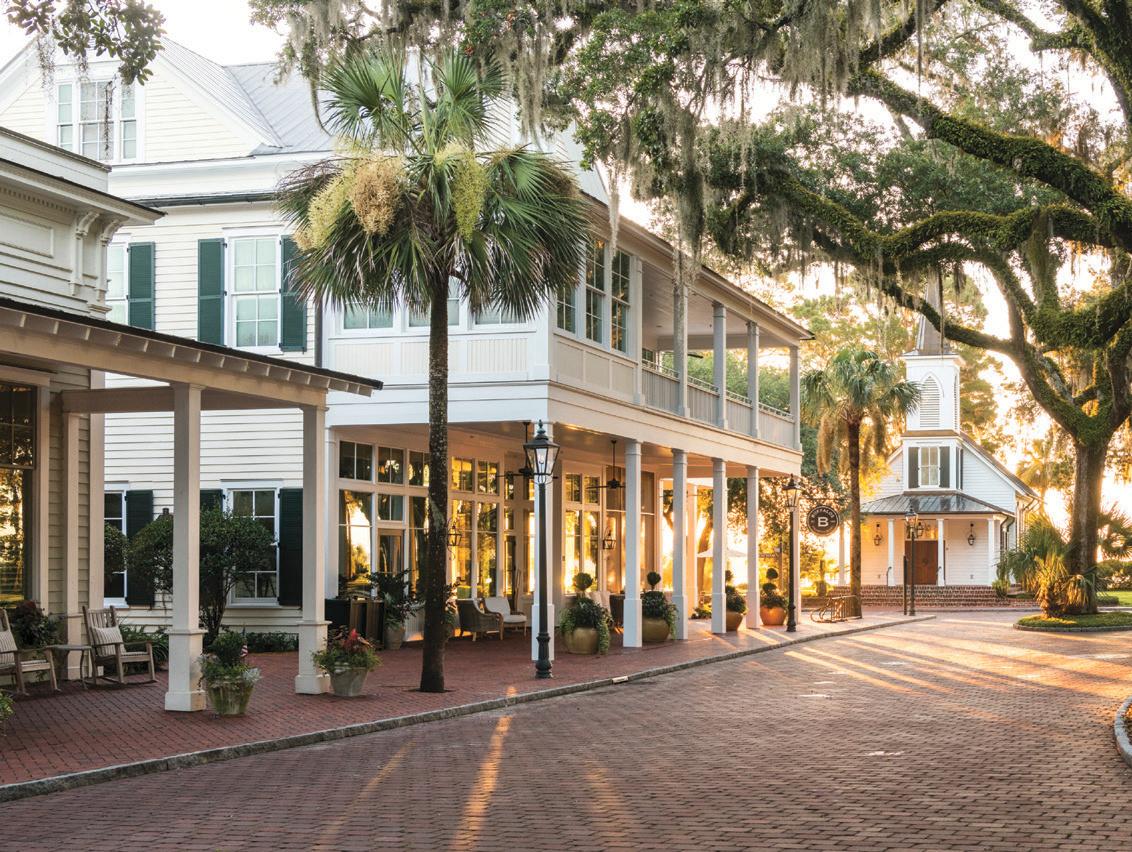
building a golf course. That project had never come to fruition. This one would.
“The site here—first of all, it’s sandy,” which is helpful for drainage, Coore, now 78, said recently. “Second of all, the vegetation—the big oak trees, the big pine trees, the understory trees and the magnolia, the hollies . . . is extremely attractive.”
South Street agreed. They assured Coore that they didn’t want the course surrounded by real estate, even though the sale of homesites around a Coore & Crenshaw course would be lucrative. The ethos of a Coore & Crenshaw golf course is that it’s a pristine experience, a world unto itself. No matter how tasteful they might be, homes around the course would dilute that magic. “South Street said, “Choose the site to



best showcase the ideal course routing,” Coore recalled. “It’s not meant to sell real estate.” That was exactly what Coore needed to hear.
The currently unnamed Coore & Crenshaw course is estimated to open winter 2025-2026. Its debut will mark a compelling new phase in the growth of Palmetto Bluff. But it also represents continuity, an appropriate and seamless evolution in a long and eventful history. To understand why, it’s helpful to know just a little about that history.
The story of Palmetto Bluff—the modern story, anyway— begins in 1902, when a New York financier named Richard T. Wilson Jr. bought 10,000 acres of land in the town of Bluffton. The land was inexpensive then, and for a New Yorker weary of cold and snow, the idea of a mild winter was allur-
ing. Over the next two decades, Wilson would acquire an additional 10,000 acres. Naming his estate Palmetto Bluff, Wilson built an enormous four-story mansion on the land. Surrounded by stables, barns, kennels, and gardens, it contained an estimated 40 bedrooms. Wilson’s wife, Marion, enjoyed the company of society, and the couple’s numerous friends from New York would come to visit and stay for weeks. For the Wilsons, the beauty of South Carolina and the sophistication of New York meant the best of both worlds.
But Wilson’s romantic tenure in South Carolina would come to a tragic end. On March 2, 1926, a fire of unknown origin consumed the house. Legend has it that, though the occupants safely evacuated, a distraught Richard Wilson twice attempted to reenter the inferno to rescue valuable art, books and other possessions, fortunately restrained by onlookers. The fire raged for three days—a mansion that big took time to burn—and reduced the grand building to ashes. An emotionally devastated Wilson, too overwhelmed to consider rebuilding, sold the land to J.E. Varn of the Varn Turpentine and Cattle Company. Wilson returned to New York and died three years later, never seeing Palmetto Bluff again. Today, the ruins of the Wilson Mansion—a few stone columns, a section of brick wall, a five-step stairway ending in mid-air—still linger in an area now aptly named “Wilson Village,” a poignant reminder of the grand dreams of a bygone era.
In 1937, Varn sold the land to the Union Bag and Paper Company, which originally planned to harvest timber there to make, as one might guess, bags and paper. But company executives came to believe that this land was too special to be turned into a tree farm. Instead, in the 1970s, Union Bag built a hunting and fishing lodge on Palmetto Bluff at which they hosted their biggest clients.
All of which meant that, for most of the 20th century, the great majority of the 20,000 acres at Palmetto Bluff had been left untouched—a stroke of good fortune. Had it been developed in the 1970s and 1980s, Palmetto Bluff might not have enjoyed the benefits of America’s evolving appreciation of its increasingly scarce coastal beauty. Not until the year 2000 did a Charlotte, North Carolina-based developer purchase the land. The tasteful homes built were designed to blend in with the landscape. Palmetto Bluff’s first community center, Wilson Village, was built, as well as the Palmetto Bluff Club and the Wilson Lawn and Racquet Club. A Montage Palmetto Bluff luxury resort opened in 2014.
The original land planners were supported in their work by the then-new Palmetto Bluff Conservancy. Intended to help build in compliance with local, state and federal guidelines, the Conservancy forged a balance between development and conservation. “We were set up to make sure that development and our natural environment can coincide in harmony,” says Conservancy director Jay Walea. Since the land of Palmetto Bluff had been privately held for centuries,
it was unlikely that it would be preserved indefinitely, left alone and untouched. The key was to steward the land with a spirit of gratitude for its beauty, reverence for its history, and concern for its future: Everyone who experienced its forests, pathways and waterways would want generations to come to be able to share that experience. Palmetto Bluff was too magical to risk it falling into the hands of another cattle farmer or paper company that might not be as wellintentioned as its prior owners.
“I fell in love with this place from day one,” says Walea, who’s been involved with Palmetto Bluff for over 30 years. “From the time my feet hit it, I knew that there was no other place like it in the world.”
The Conservancy has an expansive mission. It identifies land for conservation; ensures that developers comply with regulations; pursues ecological research; and promotes outreach, education, and community engagement such as naturalist camps for kids. The results are tangible. Palmetto Bluff’s healthy, mixed-pine hardwood forest provides shelter and food for, among others, wild turkey, white-tailed deer, rabbits, fox and quail. The deer population is surveyed and culled so that it’s healthy, and every year the Conservancy donates hundreds of pounds of venison to local charitable organizations. Its land management also includes controlled burning, to create wildlife corridors and prevent more severe fires. The burns work to boost species variation and ground cover. More than 200 varieties of birds, ranging from bald eagles to Baltimore orioles, have been documented on Palmetto Bluff.
South Street was founded in 2009 by four friends who worked in the industry. They had made a name for themselves as an innovative group of investors and planners who think about their purchases not in terms of an exit strategy, but in terms of generations. As a result, South Street has earned a reputation as a firm that believes in “designing with nature,” an approach to development that prioritizes conservation not just as a moral imperative but as a means of enhancing stakeholder value—which further incentivizes homeowners to conserve the land. It’s the most effective way, the firm believes, to ensure a balance of environmental beauty with human activity.
South Street’s first big purchase, in 2013, was Kiawah Partners, which made them the master residential developer of the 10-square-mile Kiawah Island, a barrier island south of Charleston, and owner of the Kiawah Island Club. At Kiawah, South Street demonstrated the thoughtful development strategies that it would bring to Palmetto Bluff. The firm added amenities—new restaurants, more activities, enhanced shopping—that made homeowners want to spend more time at their vacation homes, which translated into longer visits, out-of-season visits, even full-time residency. They paid attention to all the different generations of families, creating camps and classes that parents could share with children—and activities that allowed parents

to spend time with each other while their children played and learned. South Street even donated the land for a leading-edge health center, creating access to top-notch medical care for both Kiawah homeowners and local area residents. The MUSC Health Kiawah Partners Pavilion is not only a moral good—before, locals had to drive an hour to Charleston for comparable care—it’s an economic enhancement: The previous lack of medical care had meant that Kiawah property owners spent less time at their homes on the island. Now that obstacle to greater enjoyment of their homes was removed.
South Street’s stewardship has meant an active four years for Palmetto Bluff. The Covid epidemic saw current homeowners spending more time in their homes alongside increasing demand from potential buyers who wanted to change their way of life. When they purchased Palmetto Bluff, South Street first focused on the completion of Moreland Village, the community’s second vibrant center. A third, Anson Village, is in the works. “As with every Palmetto Bluff neighborhood that’s preceded it,” South Street says, “the developmental dictate remains to preserve and protect one of America’s treasured landscapes while creating a human settlement.” Crossroads, a nine-hole golf course designed by King-Collins and intended to make the sport more accessible and inclusive, opened in early 2024. There are now seven restaurants, a coffee and ice cream shop, an art gallery, a Montage hotel, and even a speakeasy. Activities include fishing, kayaking, hiking, horseback riding, biking, birdwatching, waterway tours, and a sporting and shooting club. And there’s the 18-hole Coore & Crenshaw golf course coming soon.
All of this, of course, is against the backdrop of rare and singular natural beauty—of water winding its way through land, of wildlife free to roam, plants and trees growing as they did centuries ago. Even as so many things have changed at Palmetto Bluff, the wonder of nature’s creations stays the same.

Dr. Mostafa Waziri
One of Egypt’s Heads of Antiquities

World’s Most Famous Archaeologist
Dr. Khaled El-Enany
Egypt’s First Minister of Tourism & Antiquities
VIP tour of the Grand Egyptian Museum, the largest archaeological museum in the world
Private visits to the Giza Pyramids and Luxor Temple for a crowd-free experience
A chance to stand between the paws of the Great Sphinx instead of seeing it from a distance
Private entry to the Great Pyramid of Khufu, with a visit to chambers closed to the public
Private entry to the Valley of the Kings and King Tut’s Tomb
Tours of active excavation sites, including the newly discovered Lost Golden City
Special access to Taposiris Magna Temple, the likely long-lost resting place of Cleopatra
And many more once-in-a-lifetime experiences!
Travel
START YOUR EXTRAORDINARY TOUR OF EGYPT TODAY Enjoy exclusive VIP access to Egypt’s greatest wonders











Discover the companies leading the charge in sustainability and social responsibility with Worth Magazine’s inaugural Impact 150 list.
BY OLIVER RIST
Since their inception in 2012, the United Nations Sustainable Development Goals (SDGs) have become a global blueprint for achieving a better and more sustainable future. Throughout its history, Worth has been at the forefront of recognizing and celebrating companies that embrace these goals and demonstrate leadership in sustainability and social responsibility. Our commitment to highlighting these exemplary organizations has been unwavering, and we are proud to continue this tradition with the launch of the inaugural Impact 150 list.
The Impact 150 list represents diverse companies, from innovative growth-stage businesses to some of the largest publicly traded corporations, all united by their dedication to addressing the U.N. SDGs. In partnership with Impact Karma, we have evaluated and selected companies that excel in their industries and make significant strides in creating positive societal and environmental impacts. This list is a testament to the incredible work done by businesses worldwide to drive meaningful change and set new standards for corporate responsibility.
At Worth, we believe in the power of recognizing those who are doing well and doing good. By shining a light on these trailblazing companies, we hope to inspire others to follow suit and amplify their sustainability and social impact efforts. The Impact 150 list is more than just a recognition; it celebrates the innovative and impactful initiatives shaping our future and demonstrates that business success and social responsibility can go hand in hand.
At first glance, you might think 4ocean is an environmental nonprofit rather than a for-profit corporation, but it’s a fully profitable jewelry maker. Still, part of its original mission is working towards cleaner oceans, so it’s easy to make that mistake. Over the past year, it’s done some incredible work. It removed 35 million pounds of trash from the world’s oceans, from plastic bottles to discarded toothbrushes. Much of this resulted from partnerships with several for-profit organizations like the U.S. Polo Association, which accounted for 215,000 pounds of trash removed from rivers, oceans, and coastlines over the past year.
Abbott, a medical manufacturer and research company, recently released an impressive Sustainability Report. In it, the company highlights its work to help three billion people get affordable healthcare by 2030.
Abbott also focuses on environmental sustainability (something we always welcome from big research facilities). It’s working the gamut there, looking to reduce waste, water usage, and emissions. Its Future Well Kids program educates children on healthy choices, while partnerships like the one in Tanzania build important healthcare infrastructure.
In its third annual ESG report, Adore Me detailed several adoring commitments to sustainability. For one, it launched the Adore Me Sustainability Accelerator to collaborate with startups like EverDye and Carbonfact. Its eco efforts led to a 12% drop in its product-level carbon footprint since 2021. On the social side, it’s vetting suppliers and pushing for size inclusivity. And it’s now a fully Certified B Corporation, which means it delivers stringent governance requirements. All in all, it’s a good candidate for the Worthy 150.
Accenture is known for its consulting expertise across various industry sectors. However, it’s also been recognized as a leader for its efforts in global sustainability, particularly the market impact those initiatives are having, as well as Accenture’s vision for the future.
Today, Accenture’s contributions to sustainability revolve around the consulting services it offers to companies on their journeys to protect our environment and natural resources. In particular, it has a large team of experts who have developed a solid strategy for different global regions, including EMEA and North America. They’ve also acquired companies to help them, like Green Domus and Carbon Intelligence.
For companies looking to tackle global sustainability challenges, Accenture’s Sustainability Services cover everything from strategy and performance measurement to net zero transitions and sustainable customer experiences. This has helped its clients boost their competitiveness while creating a more sustainable future for all of us.
Aday’s latest impact report describes a company quickly developing a more sustainable consciousness. Last year, it became a certified B Corp. We also like that it acknowledged a setback with its Tailored Stretch items, but picked itself up and continued its goal of using 85% sustainable materials by 2024. It’s promised to ensure fair wages and safe environments for its employees and works with 22 partners worldwide, all of whom it vets to be sure they’re responsible suppliers. Plus, 1% of all its sales go to non-profits that customers can choose at purchase time.
Allbirds describes the fashion industry as a major polluter, basing that conclusion on the 2.1 billion tons of carbon monoxide the industry spews into the world every year—a figure that, according to Allbirds, is the same as what comes out the back of more than 456 million cars. To fight this, the company launched the Allbirds Flight Plan in 2021, aiming to cut its carbon footprint in half by 2025 and reduce it to nearly zero by 2030. They’re already more than halfway to their goals. In 2022, they reduced their average product carbon footprint by 19% compared to 2021.
The company is focused on driving emissions to zero through a data-driven approach, investing in projects, systems, and tools that maximize positive impact. They measure emissions, reduce their footprint, and support carbon removal projects. Allbirds is also focusing less on competition and more on sustainability by partnering with Adidas so both companies can build shoes based on the lowest possible carbon footprint.

L’Oréal acquired hair care and cosmetic maker Aesop in August of 2023. And just like the rest of the L’Oréal Groupe, it’s working towards radical sustainability and social impact goals. By 2030, it aims to align with the Science-Based Targets, ensuring its activities respect the planet’s limits. They’re also committing € 150 million to support vulnerable women and fight environmental issues. It did so well here that it rose to ninth place in the 2024 Equileap Gender Equality Report and Ranking, an independent expert on gender equality, diversity, and inclusion metrics. It is an excellent record for just one year.
Alphabet is making sure the world knows it is walking the walk to impact the environment positively, and they’ve got a solid plan to do it. Given that its biggest subsidiary is a major player in AI and that the average AI query takes up more than 10 times the electricity of a regular Google search, we’re glad to hear it. Their sustainability strategy is built on three main pillars: economic efficiency, environmental sustainability, and social responsibility.
First up is economic efficiency. Alphabet is all about making your life easier with sustainable and cost-effective mobility solutions. It’s pushing for electric mobility, aiming to integrate electric vehicles into fleets seamlessly and support companies that use its technology by making sure they hit their cost targets.
Next is environmental sustainability. Alphabet makes no bones about its activities impacting the environment, so it’s committed to conservation and governance. The company has embedded sustainability into its corporate values and processes, which boils down to a commitment to helping its customers hit their CO2 reduction goals, too.
Lastly, social responsibility. Alphabet believes in the power of diversity and inclusion. It’s dedicated to supporting its employees’ authentic selves and driving societal change. Sure, that’s a common statement among large companies these days, but somehow, we think Alphabet is going to make the effort.
Ando launched several years ago with the unusual mission of becoming a bank with climate change as part of its core mission. Ando’s customers’ funds are invested only in green projects like clean energy and sustainable infrastructure. You might think that this approach would hurt profitability, but so far, it’s doing great. The service offers no fees, a vast ATM network, and interest rates over three times the national average. And if you want to know where your money is going, its Impact Center shows exactly where the funds are, so you can see the difference you’re making. That’s a very cool concept and certainly deserving of the Impact 150.

Lisa Jackson Vice President of Environment, Policy and Social Initiatives, Apple
Pretty soon, your iPad will be good for the environment. That’s because in 2020, Apple came out with an ambitious plan: It wants to become carbon neutral across its entire business, manufacturing supply chain, and product life cycle, and it wants to do that by 2030. A tall order, but Apple was already well on its way since it was carbon-neutral for its global corporate operations even before the announcement. The new commitment will still be a toughie, however, since it extends to all other aspects of its business.
When he announced the initiative, Tim Cook, Apple’s CEO, emphasized the importance of businesses in building a sustainable future. He highlighted that the innovations driving Apple’s environmental journey benefit the planet, make their products more energy-efficient, and bring new sources of clean energy online globally. Apple’s 2020 Environmental Progress Report outlines its plan to reduce emissions by 75% by 2030 and develop innovative carbon removal solutions for the remaining 25%.
Apple also established an Impact Accelerator to invest in minority-owned businesses that drive positive outcomes in its supply chain and communities disproportionately affected by environmental hazards. This initiative is part of Apple’s $100 million Racial Equity and Justice Initiative.
Aspire Technology is making some very excellent efforts to increase environmental sustainability in the telecom industry, specifically by making Open RAN networks more energy efficient. As detailed in a white paper on the subject, it’s using 3rd Gen Intel® Xeon® Scalable processors to slash power consumption and reduce its carbon footprint. By using features like C-States, this solution not only saves energy but also boosts network performance. Geek environmentalists—we like!
Athleta is something of a sustainability veteran. It’s been making strides in sustainability since it announced its commitment to bettering the planet back in 2019. Since becoming a certified B Corporation, the brand has increased the use of sustainable fibers to 60% of its materials. It uses recycled polyester, nylon, TENCEL Modal, TENCEL Lyocell, and organic cotton, which has diverted over 38 million plastic bottles from landfills since 2014. The company’s swimwear collection is made with 85% sustainable fabrics, including H2Eco and AquaRib, which use ECONYL, a regenerated nylon fiber sourced from abandoned fishing nets. Athleta’s target is to reach 80% use of sustainable fibers across its product line.

Autodesk is committed to advancing sustainability through its operations and products. The company aims to achieve net-zero carbon emissions by 2030, leveraging renewable energy and enhancing energy efficiency. Autodesk’s software solutions empower customers to design and build sustainably, focusing on reducing environmental impacts across various industries. The company also emphasizes waste reduction and responsible sourcing, ensuring materials are sustainably procured. Autodesk’s social initiatives include supporting education and training in sustainable design and engineering, fostering a new generation of professionals equipped to address global challenges. These comprehensive efforts highlight Autodesk’s dedication to sustainability and social impact.

Aveda has demonstrated a deep commitment to sustainability, and we’ve seen it in every aspect of the business It uses 100% vegan ingredients and ensures its suppliers meet strict social, ethical, and environmental standards Aveda also guarantees that its products are free from harmful substances, including animal-derived ingredients, phthalates, parabens, and more If you want to dig into its ingredient list you can, since it keeps an online glossary of every ingredient used in its products
One of the standout features of Aveda’s sustainability strategy is its use of blockchain tracing This technology helps them track and ensure ingredient quality and responsible sourcing practices throughout the supply chain. Mobile phones and QR codes create a tamperproof record, tracing ingredients from farmers to processors to Aveda’s primary manufacturing facility This not only lets Aveda work with suppliers to achieve organic certification, it’s also a way to make sure workers are paid a fair wage
Finally, like many of the companies on this list, Aveda is a certified B Corp, which means it meets high standards of verified social and environmental performance, transparency, and accountability It’s been using 100% renewable electricity for over 20 years, powered by its onsite solar array and wind power credits The primary manufacturing facility has achieved Zero Industrial Waste to Landfill status
In addition, Aveda is committed to minimal packaging with maximal recyclables, challenging suppliers to innovate their packaging using a sustainability lens
According to Avocado Green Mattress’ 2023 Impact & Sustainability Report, it’s made significant progress towards being more eco-friendly in the past year. It’s always made high-quality organic mattresses and bedding, but part of its core mission is to fight climate change and promote social equity. It’s got the certs to prove it, too. Not only is it a Certified B Corporation, it’s also a Climate Neutral Certified brand and holds additional certifications from the Global Organic Textile Standard (GOTS) and Global Organic Latex Standard (GOLS). That’s a pretty high bar for transparency and sustainability and a perfect fit for the Impact 150.


BBen & Jerry’s is surprisingly vocal about protecting our planet. Then again, the company is rather dependent on dairy farmers, who probably feel the impact of climate change more than anyone. The company has publicly committed to reducing its carbon footprint. It carefully measures its greenhouse gas emissions to understand where it can make the most significant impact.
Dairy ingredients are a significant contributor, accounting for around 53% of Ben & Jerry’s carbon footprint. To tackle this, it’s exploring solutions like changing cow feed to reduce emissions and using manure digesters to generate renewable energy. It’s also working with farmers on regenerative agriculture practices to improve soil health and mitigate synthetic inputs.
Ben & Jerry’s also uses sustainable packaging. The company says it loves cones because they’re plastic-free, and you can eat them! But for those pints we all ingest so guiltily, it’s working on reducing single-use plastics and creating more sustainable packaging options.
Though I’m leery of moving away from my favorite ice creams, Ben & Jerry’s is challenging all its customers to try out new things like its new lowcarbon product options including Non-Dairy ice cream. All that work is paying off, too, since it’s nearly at its goal of 100% renewable electricity for its global manufacturing operations and Scoop Shops.
In short, Ben & Jerry’s is committed to sustainability through sciencebased targets, innovative solutions, and a focus on reducing their environmental impact at every step.
Banyan Botanicals resolves its sustainability mission by working to uplift people’s well-being through Ayurveda while also caring for the planet. In 2023, it served over 459,000 customers and boosted its certified B Corp score to 107.8. It introduced sustainable packaging and certified 38 new Fair Trade products. Though it acknowledged some supply hiccups, it still managed to donate over 39,000 products to nonprofits and supported community projects. Its farm partners even installed water systems in local schools! In the future, Banyan says it plans to certify more products and host a Sustainable Herbs Learning Lab.
The big sustainability news for 3D printer maker, Bambu Labs, in 2023 is that it achieved the Climate Neutral Certified label. That means it’s demonstrated a quantifiable commitment to reducing its greenhouse gas emissions. To get this label, companies need to measure their emissions, create action plans to cut them, and invest in verified carbon credits. For its part, Bambu is redesigning packaging, recycling more, and eliminating air freight. It is also supporting projects like sustainable forest management and wind energy.
Financial institutions may not immediately jump to mind when you think about environmental protection, but Bank of America (BoA) is making big moves in sustainability. It’s publicly committed to improving the environment through a global business strategy, partnerships, and sustainable operations. It also announced that it aims to achieve net zero greenhouse gas emissions in its financing activities, operations, and supply chain by 2050.
BoA’s Environmental Business Initiative represents a mammoth $1 trillion investment the company intends to make by 2030 to accelerate the transition to a low-carbon, sustainable economy. Its success here focuses on low-carbon energy, energy efficiency, and sustainable transportation, as well as other areas like water conservation and waste management.
Bank of America achieved carbon neutrality and procured 100% renewable electricity in 2019, which was a year ahead of schedule and beat many other folks on this list to the punch. It offers programs and benefits to help employees become better environmental stewards. One of those is its Environmental and Social Risk Policy Framework, a company-wide resource that outlines how employees can identify, measure, monitor, and control environmental risks.
Sustainability is a difficult corporate goal for any business, but BoA, especially among financial institutions, truly deserves credit for the effort.
Benevity Inc. released its 2024 State of Corporate Purpose report just in time to make the Impact 150. Part of what gets it here is that sustainability and social impact aren’t just a value for the company; it’s what they do. Benevity makes social impact software that lets customers implement and track progress on their sustainability initiatives. Its report compiles data from nearly 1,000 companies and highlights a survey of 400 CSR leaders who aren’t required to be Benevity customers, just sustainability movers and shakers. Buy the software or not, Benevity is a good way to see how your organization’s efforts match up with the rest of the corporate world.
In 2023, Bi-Rite continued on its mission to become a Zero Waste company that wants to reuse or recycle 90% of its products and materials. An example is how it repurposes ‘imperfect’ produce into treats like Balsamic Strawberry and Roasted Banana ice creams. On an annual basis, it diverts around 800,000 pounds of waste from landfills and saves over 63,000 kilowatts because it switched entirely to LEDs. Currently, it already reuses 85% of its materials, so that 90% goal is tantalizingly close. We hope they hit it in the next 12 months.
Birdies Inc. is a female-founded footwear company that aims to support women through collaborations and giving back. An example is its partnership with Angel City FC. Together they launched The Soar Internship Program, offering paid opportunities to 11 high school girls from under-resourced communities since 2021. Birdies also partnered with Step Up for the Fly Together Mentorship Program, helping over 100 girls and gender-expansive teens. Plus, its partnership with Soles4Souls has donated over 54,000 pairs of shoes, reducing its carbon emissions and textile waste while still creating business opportunities for women globally.
Blueland describes itself as and eco-friendly maker of household and beauty products. The trick is that every product it sells sends you a single bottle that you can refill when you reorder the product—for the rest of your life. That’s a great ecological strategy and its let the company keep over a billion plastic bottles out of landfills and saved more than 488 billion square feet of plastic packaging since 2019. With an ecological core mission and results like that, Blueland is definitely part of the Impact 150.
Blueair, a leading air purifier brand, made its sustainability mark in 2023 by achieving its B Corp Certification. That means it had to prove that it meets very high standards for social and environmental impact. Blueair’s selfdeclared mission is to provide clean air while minimizing environmental impact. It’s worked to ensure that its air purifiers are highly energy-efficient, using no more power than a lightbulb, and that they remove up to 99.97% of airborne particles. Plus, it instituted a “Clean Air for Children” initiative is providing better to children globally; and its Freedom to Breathe campaign, in partnership with NGO Global Action Plan, resulted in the UN acknowledging a child’s right to clean air after receiving 30,000 signatures from children worldwide.
Bombas realizes that every piece of clothing it produces has an environmental footprint, so it’s committed to making its production process as sustainable as possible.
The company focuses on creating essential clothing items like socks, underwear, and t-shirts, the most requested items in homeless shelters. As a brand, it understands the importance of these items and is very dedicated to producing them responsibly.
And to ensure it’s on the right track, Bombas has teamed up with experts to evaluate its environmental impact. It received B Corp certification in 2017, which means it meets high social and environmental performance standards. Bombas has also partnered with South Pole and Watershed to measure and reduce its greenhouse gas emissions.
Finally, like the other fashion businesses on this list, Bombas is paying particular attention to the materials used in its products. The company aims not just for more environmentally responsible options but also for products that last longer. There’s even a Take Back Bag program so customers can easily recycle their old clothing.
Bombas is on this list because it is thoughtful about its production, uses responsible materials, and works on innovative solutions that benefit the planet.

Brand Fuel makes high-quality, sustainable branded merchandise The company doesn’t just want its products to tell a story; it also wants them to make a positive impact Recently certified as a B Corp, Brand Fuel has quantifiably shown that it’s committed to maintaining high standards in performance, accountability, and transparency. It says it plans to disrupt the industry by using responsible sourcing, sticking to a strong code of conduct, and engaging in significant corporate giving.
Boody is a clothing maker that was founded with eco-friendliness in mind.
A big boost to that mission was when it joined the #ClimateTogether Alliance, which is all about sustainability If you’re part of the Alliance, you’re teaming up with 22 likeminded brands to make a real impact Over the last few years, it’s planted 15,000 trees in Madagascar and removed 150,000 plastic bottles from the ocean. It also means that Boody is committed to the same annual improvements in sustainability results as the alliance and continues working with the Eden Reforestation Projects and Plastic Bank to restore forests and clean up the oceans. All that and you can buy a comfortable socks from them, too.

Burton Snowboards is a company with customers that want something I not only can’t do anymore, but can barely get away with saying, namely ‘shred the slopes.’ To keep that business plan on track, it’s not a shock that Burton is trying to make some fairly big waves in sustainability. First off, Burton is all about using eco-friendly materials. They’ve swapped out traditional plastics for recycled ones and are even using sustainable wood in their boards, meaning lumber that’s being replanted even as it’s being harvested.
Burton says it’s also sharply focused on reducing its carbon footprint— something every winner on this list has prioritized. It’s set ambitious goals to cut down on greenhouse gas emissions and it’s also investing in new, renewable energy sources.
Bookshop.org has made its bones as a place you can support local indie bookstores. Founded in 2020, it’s been a real boon to independent bookstore not just helping them fend off the sales pressure from retail giants like Amazon, but also to help them survive the loss of foot traffic during the early years of the pandemic. The site connects buyers to local stores, handling inventory and shipping and giving back a chunk of the revenue. They even have cool events like Anti Prime Day to rival Amazon. So, while it’s not yet overly focused on ecological contributions, it’s nevertheless an Impact 150 member for its sustainability efforts on behalf of local shops and the book enthusiasts (like me) who really need them.
Beyond the great outdoors, Burton is also working to improve another aspect of its business, like diversity and fair labor practices. Burton ensures that everyone in their supply chain is treated fairly and works in safe conditions.
Burton says it’s all about giving back, and based on its performance numbers from 2024-2025, those efforts are paying off, which is why it’s made this list.
If you like cheese, and who doesn’t, Cabot Creamery is probably on your shopping list. Dairy farmers own it and has been a certified B-Corp for some time. But it’s not sitting on its laurels when it comes to sustainability. Last year, it completed a study funded by a Northeast Dairy Business Innovation Center grant. Based on the study’s findings, Cabot is making a big change in 2024: Its 8-ounce cheese bars will now come in packaging made from 30% postconsumer recycled (PCR) materials. This change will cut greenhouse gas emissions and save water during manufacturing.
Cariumia makes sneakers, but it’s been doing so in an eco-friendly way since it was founded. The company uses bio-diverse materials like organic cotton, natural rubber, bamboo, and sugarcane to keep things green. Its factories are safe and ethical, and it takes pains to ensure its workers are well-treated. Over 2 million trees have been planted in the Brazilian rainforest to help restore some much-needed biodiversity in the region. Finally, it uses recycled materials for packaging and shipping. Cariuma is looking to make the planet a better place, one
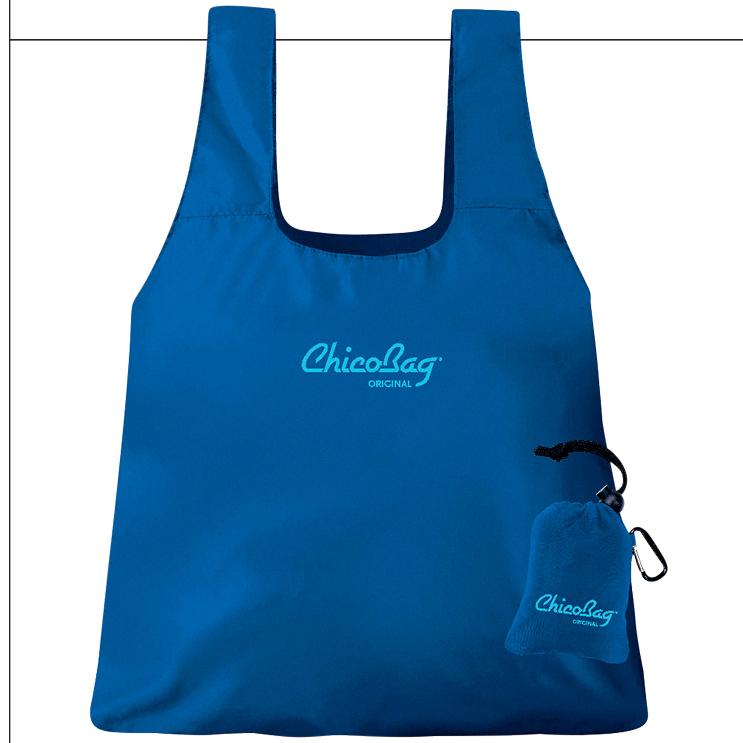
ChicoBag Company has been a leader in promoting reusable products to reduce single-use plastic waste since its inception. ChicoBag has prevented over 25 billion single-use items from entering landfills and waterways through its eco-friendly products ChicoBag is a Certified B Corporation, which signifies its adherence to high standards of social and environmental performance, accountability, and transparency. It is Climate Neutral Certified, measuring, reducing, and offsetting its carbon footprint. ChicoBag donates a minimum of 1% of its sales to environmental causes as a member of 1% for the Planet, and its rePETe line uses recycled materials.
Chloé isn’t just the girl who turned me down for the senior prom; it’s also a luxury fashion company with a serious focus on sustainability. Beyond creating cutting-edge, stylish pieces, Chloé is committed to uplifting women everywhere by promoting inclusivity. The brand is undergoing a transformation, revamping everything from material sourcing to community involvement, with women driving the push towards a fairer and more sustainable future.
Chloé prioritizes social and environmental sustainability, emphasizing transparency and accountability. Their leadership understands that change takes time but keeps everyone informed via their website. Retail sales support gender equality initiatives, and many products are made from lower-impact materials. Fair Trade, social enterprises, and social sourcing are also key focuses in their Ready-To-Wear collections.
Cisco Systems has company-wide initiatives aimed at sustainability and helping the planet, but one of the standouts is The Cisco Foundation. This organization has pledged $100 million to combat climate change, and they’re not joking. This commitment, made in 2021, aims to support innovative startups and non-profits working on climate solutions. When asked about it, Cisco’s Chief Sustainability Officer, Mary de Wysocki, emphasizes the urgency of addressing climate change, rightly pointing out that 2023 was the warmest year on record. Ever. Period.
The Foundation focuses on early-stage ideas, especially those that intersect with climate change’s impact on the needs of underserved communities. It invests in non-profit and for-profit companies—basically anyone with real innovations to help create a sustainable economy and environment. According to de Wysocki, one notable success is the Foundation’s support for Vesta, which uses a mineral called olivine to sequester carbon dioxide. Another is Canopy, which partners with brands to protect forests by providing alternatives to wood pulp.
Cisco’s site has loads of performance numbers, which show that its approach is holistic and integrates social equity and economic opportunities with climate solutions. They’re putting a bundle behind powering public and private partnerships for measurable, evidence-based actions that drive meaningful change.
Look around, and you’ll almost certainly find at least one Colgate product in your home. With that kind of market penetration, it’s only right that Colgate make sustainability a priority, which it does publicly in its 2025 Sustainability & Social Impact Strategy report. In it, Colgate points out several drivers for its sustainability focus.
Colgate’s 2025 sustainability strategy includes critical initiatives, like Bright Smiles and the Bright Futures oral health program, which is working to transition toothpaste packaging to recyclable tubes.
Finally, Colgate is also working on getting to net zero carbon emissions across its entire business, which it hopes to do by 2040. To help, it’s got interim targets that it wants to hit, like working off 100% renewable electricity by 2030, using solar energy from a farm in Texas, and meeting LEED certifications for any new sites it builds. It’s all good work, which is why Colgate-Palmolive made the list.


CCotopaxi is a self-billed adventure brand that makes and sells outdoor clothing and gear. So it’s only natural that the company also focuses on sustainability and brings some innovative ideas.
It’s a Certified B Corporation™, which means it helps the environment and fights extreme poverty globally. Since its founding in 2014, Cotopaxi has donated over $3.3 million to the Cotopaxi Foundation, which uses those bucks to support education, healthcare, climate solutions, and employment in impoverished communities.
The company’s 2023 impact report highlights several key achievements. First, Cotopaxi has transitioned to a more circular business model with the launch of the e-commerce platform, a product trade-in program that’s part of its Guarantee for Good Repair and Warranty Program expansion. Cotopaxi offset 9.9k lbs. of landfill waste and 1.2k gallons of water in just two months. Its deadstock program has kept over 2.7 million yards of fabric from landfills.
On the people front, the Cotopaxi Foundation has helped over 4.25 million impoverished people around the globe. The company diligently maintains its B Corp certification and 1% for the Planet status, with charitable giving of over $1.4 million in 2023. Cotopaxi aims to support over 5 million people in poverty by 2028 and become net zero on carbon emissions by 2045.
Damien Huang, the company’s CEO, nicely sums up Cotopaxi’s attitude towards sustainability: “We were founded on the belief that we should see the world and also make it better. “Being recognized for the continued work we do to not only positively impact our community and the world but also inspire other companies to pursue tangible philanthropic programs is a great honor.”
If you work in HR, odds are your company has considered providing employees with online learning and training resources from Coursera. This is good since that’s its mission, and it’s become successful at it, with over 140 million learners and 1,300 partners. However, it also focuses on sustainability as a company. CEO Jeff Maggioncalda summarized Coursera’s 2023 ESG report, highlighting initiatives such as extensive learner outcomes research, platform innovation (including Generative AIpowered virtual learning assistants), environmental impact reduction, and expanding the courses focused on sustainability
No, there’s not another AI assistant out there named Credo. This company is focused on AI governance—providing companies with internal resources to control their use of AI so everyone stays safe and there’s always a need for humans. Since it was founded it’s become the leading AI governance platform for enterprises and governments worldwide. You might call it a company making social impact on digital issues. But it’s also working towards some human goals, like the “Women in AI” roundtable it recently hosted with EU AI Office Director, Lucilla Sioli, during her visit to Washington, D.C.
Downeast Home & Clothing is committed to sustainability and social responsibility, integrating various initiatives to enhance its environmental and social impact. The company has been certified as a B Corporation, demonstrating adherence to rigorous standards of social and environmental performance, accountability, and transparency. Downeast Home focuses on sustainable sourcing, ensuring that the materials used in their products are responsibly sourced and environmentally friendly.
Additionally, the company is dedicated to reducing waste and improving energy efficiency across its operations. Downeast Home has implemented various programs to minimize its carbon footprint, including using renewable energy sources and promoting recycling and waste reduction practices. These comprehensive efforts highlight Downeast Home & Clothing’s commitment to sustainability and corporate responsibility, making it a strong candidate for the Impact 150 list.
Dr. Bronner’s is another member of the Impact 150 that was founded with sustainability and social impact goals right from the outset. The ecofriendly soap brand’s version of an ESG report is called the 2023 All-One! Report, and it’s celebrating the company’s 75th year of operation and is all about. “taking care of Spaceship Earth.” It’s well in that area, with over $8.6 million in donations to causes like animal advocacy, drug policy reform, and regenerative organic agriculture. It’s also making strides in sustainability with new refill stations and ecologically minded packaging. The company’s social outreach programs have expanded over the last couple of years, too, including support for education in Ghana where it helped build a new school.
Drizzle Honey achieved B Corp certification, demonstrating its adherence to rigorous standards of social and environmental performance, accountability, and transparency. Drizzle Honey focuses on creating safe habitats for bees in Alberta, Canada, ensuring diverse, pesticide-free food sources for healthier bee populations. Additionally, Drizzle Honey partners with local beekeepers to maintain high-quality honey production while reducing its carbon footprint. The company donates 1% of its profits to pollinator research and educates the public on the importance of pollinators. These efforts highlight Drizzle Honey’s commitment to sustainability and social impact

Dropps has been making eco-safe cleaning products for the last 25 years. As one of the older B-Corps, it has experience making smart biobased products, which is why it also has certifications from the USDA and Leaping Bunny. Dropps made prioritizing health and safety part of its original mission statement and continues to work on designing products with a low carbon footprint and minimal waste. Additionally, it advocates for social impact by promoting inclusivity and diversity in its workforce and partner relationships. It’s an all-around sustainability leader, which is why there’s no way I’d make a ‘Dropp the soap’ joke here. No way.
This year, DYPER launched its charcoal-enhanced diapers, which got it named Product of the Year by the 2024 Baby Innovation Awards. DYPER is holding that trophy because the diapers aren’t just absorbent and protective; they’re made from 55% USDA-certified biobased materials. That makes them mostly plant-based diapers enhanced with bamboo and using charcoal for odor control and moisture locking. The company goes a step further in that it now offers a free composting program, REDYPER, that turns used diapers into nutrient-rich topsoil. Along the same vein, it’s piloting BYOCHAR, another program intended to convert diapers into biochar, which reduces landfill impact.
EarthHero isn’t your average online store. It’s a deserving Worthy 150er on a mission to save the planet, and it’s got the credentials to prove it. As a Certified B Corp, it meets rigorous social and environmental standards. Plus, it’s part of 1% For The Planet, which means it donates 1% of sales to sustainability initiatives. But it’s also Climate Neutral Certified, meaning it offsets its carbon footprint and is constantly working towards zero emissions. The B Corp certification requires transparency, so EarthHero shares its wins and goals in annual impact reports you can find online. It’s really a company that also acts as a community looking to make a positive impact any way it can.
Eileen Fisher Inc. is a bit of a sustainability standout even among fashion companies. It’s not only committed to using 100% organic cotton in their line, it’s working to use only Regenerative Organic Certified® cotton, which nurtures soil health and promotes better biodiversity.
The company is also among the seniors in the environment protection conversation because Eileen Fisher started her company way back like forty years ago, and had a focus on natural fibers even then. But she soon realized that just using ‘natural’ materials wasn’t enough. In 2004, the company launched its first organic collection, and by 2014, it doubled down on sourcing organic materials, particularly organically grown cotton which it uses today across its entire product line.
In its regular updates on the company’s sustainability efforts, it reports that Regenerative Organic Certified cotton is completely traceable from the fields to the factory and is grown without hazardous pesticides or herbicides. It supports the well-being of farmers and surrounding communities, making it a holistic way of thinking that puts the health of people and the planet first.
Eileen Fisher Inc. also introduced responsibly dyed silk in 2012, a process that reduces the pollutants associated with dying, a first for the fashion industry.
Lastly, there’s Eileen Fisher’s buy-back program, known as Renew. It reached a significant milestone in 2023 by collecting two million garments since its inception in 2009. Via Renew, customers can return their used purchases in any condition in exchange for a gift card. The program focuses on reselling, donating, or remaking these garments.
With forty years of history as an environmentally and socially responsible business, Eileen Fisher Inc. is a deserving member of this list.
EO Products, a personal care company, has been around for 27 years and is known for making everything it sells in-house, from formulating to bottling. In 2012, it became a Certified B Corporation and pledged to remain a zero-waste manufacturer, which means it recycles over 90% of its refuse and use only solar power. Its BPA-free bottles are made from 25%-100% post-consumer recycled plastic. That sounds like an almost standard corporate eco laundry list, but what sets EO apart from most of even the Impact 150 is that it’s been doing all of this for the past quarter century.
If you’re wondering what a website might do to improve the environment the answer is ‘plenty.’ In its 2024 Environmental Impact report, Etsy wants to show that it’s heavily focused on sustainability and building a resilient future both for itself and the millions of entrepreneurs who rely on its platform. The company’s mission to Keep Commerce Human is built to align with its environmental commitments, with which it seeks to contribute to the health of the planet and its people.
Etsy says it made significant strides towards some ambitious goals in 2023. The company focused on running sustainable operations, serving eco-conscious consumers, and achieving Net Zero carbon emissions. It also continued to source renewable electricity for Etsy.com’s computing load in Google Cloud, as well as for its offices and employees working from home, the latter being a particular challenge.
Some highlights from Etsy’s 2023 Integrated Annual Report show impact metrics using the Sustainability Accounting Standards Board (SASB) and Task Force on Climate-Related Financial Disclosures (TCFD) frameworks. It’s pretty dry reading, but dig in and you’ll see that Etsy really has done significant work to make itself a more socially and environmentally conscious company.


From the look of things, I’d say Erewhon is what Whole Foods wanted to be. It’s not just a grocery store, it’s a full-on sustainability community devoted to customer health. It’s been around since the 60s, during which time the company has always used organic and ethically-sourced foods— even before it was cool. It’s publicly stated its commitment to organic, regenerative, and biodynamic farming and supports non-GMO, grass-fed, and cage-free agriculture. It’s a proponent of animal welfare and likes working mostly with local and family-owned brands. It also uses lowimpact packaging and goes to great lengths to stock eco-conscious products.
This British skincare company has set ambitious goals to protect biodiversity, address climate change, and empower communities. By 2030, Elemis aims to halve its carbon emissions and achieve net-zero emissions by 2050. The company requires its key suppliers to pass a comprehensive Corporate Social Responsibility (CSR) assessment, ensuring adherence to high environmental and ethical standards.
Elemis also focuses on employee wellness, implementing diversity, equity, and inclusion (DE&I) training and supporting various volunteering programs. Moreover, the company has pledged to donate 1% of its revenue to philanthropic causes by 2030, demonstrating a strong commitment to social impact. These initiatives reflect Elemis’s dedication to sustainability and corporate responsibility, making it a deserving candidate for the Impact 150 list.
Ethique is all about setting new standards for responsible business practices. It’s on a mission to minimize waste, uphold ethical standards, and contribute positively to nature and communities. From eco-friendly packaging to fair trade practices, Ethique says it’s fully committed to making a difference, and it’s got the stats to make that stick, like how it’s saved more than 35 million plastic bottles and replanted over 660,000 trees. But it acknowledges that no one entity can do sustainability alone. That’s probably why its packaging is fully home compostable—so you’ll have to step up a bit, too.
Bedding company ettitude’s CleanBamboo® is a recent gamechanger in fabric tech. Co-founders Phoebe Yu and Kat Dey have manage to craft a sustainable, luxurious material that outperforms traditional fabrics. CleanBamboo® uses 100% organic bamboo, processed in a closed-loop system, which significantly reduces CO2 emissions. Even better for those of us with sensitive skin, it’s hypoallergenic, and since bamboo is considered a pretty much unkillable weed in most global geographies we aren’t in danger of running out anytime soon. It’s already sold over 500,000 units and shows no signs of slowing down. It’s great when sustainability and business goals succeed at the same time.
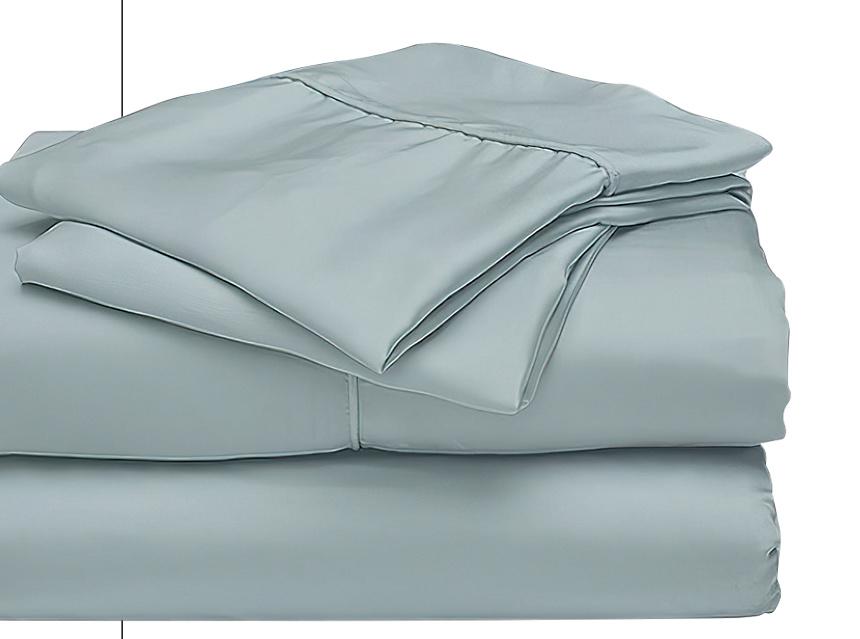
Everpress is a retail company that wants to change how retail gets done, so it’s been working on its sustainability efforts since 2019. They’re a series of ambitious goals, like becoming climate and “water positive” by 2025. They’ve made a good dent in both of those having already saved over 336 million liters of water and rescued more than 124,000 tees from ending up in landfills. By 2022, over 80% of the clothes it sold came from ethically-accredited suppliers and they recently switched to recyclable packaging. And it wants to keep improving in all these areas as any Impact 150er would.

Fair Harbor is a truly innovative sustainability standout and a swimwear company founded by siblings Jake and Caroline Danehy. It’s innovative because, to date, it’s turned over 30 million recycled plastic bottles into trendy clothing. Which means those surfing shorts or cozy sweater you’re wearing may once have been a water bottle. Even better—for the siblings—since 2020, its revenue has skyrocketed from $2 million to an impressive $53 million. That makes them a business success story powered by a strong sustainability commitment; a win-win in anyone’s book and a sure entry into the Impact 150.
Its name may not be as ubiquitous as other national banks, but Fifth Third Bank has been around a long time. It was founded in 1858 and provided my car loan in 2015. In much of that time, it’s worked to make some big strides in sustainability and community support, as it’s showcased in its 2023 Sustainability Report.
The report shows the bank has surpassed its goals in promoting equity, inclusion, and in financing affordable housing. It’s also made significant progress in protecting the environment and in financing social initiatives and suppliers that place an emphasis on diversity.
Executive Vice President and Chief Corporate Responsibility Officer Kala Gibson described the what she calls the bank’s relational approach. It highlights the importance of personal connections with shareholders, customers, communities, and employees. There’s also a Chief Sustainability Officer, Pratik Raval, who echoed this sentiment, stating that the bank’s purpose is to improve lives and community well-being through sustainable practices.
In 2023, Fifth Third received recognition from several national organizations, including being named one of the World’s Most Ethical Companies by Ethisphere and one of America’s Most Responsible Companies by Newsweek. The bank also published its sustainability data, aligning with industry standards to ensure transparency for all stakeholders.
Founded in 2009 by Audrey McLoghlin, Frank & Eileen works to reinvent the button-up look for women (Audrey’s Irish grandparents inspire the name). It’s a woman-owned, woman-led company that maintains an iron-willed focus on sustainability and ethical practices. Its fabrics can all be traced to their origins, and it meets the Oeko-Tex® Standard 100 for safety in manufacturing, too. It’s pledged to donate $10 million over the next 10 years to help educate the female leaders of tomorrow. And in a quirky move we couldn’t fail to mention, it’s built a life-size, two-story, fully-stocked dollhouse in its headquarters for new mothers to breastfeed, pump, or spend time with their babies.
Fully is a furniture and lifestyle store owned by Herman Miller, a company that’s known for being committed to making a positive impact on the planet. It’s part of NextWave Plastics, which recycles ocean-bound plastics and ses only 100% renewable electricity. That and ditching plastic water bottles has allowed it to reduce its environmental footprint enough to garner certifications like Cradle to Cradle and AFRDI Green Tick.
Ask a GitHub executive about the company’s sustainability efforts and they’ll likely refer you to the The GitHub Social Impact team. These guys are dedicated to leveraging GitHub’s products, brand, and employees to empower nonprofits and the broader social sector. Their mission is straightforward: make a positive and lasting contribution to the world.
To help wrap your head around that, the team breaks it down into four key areas: skilling, accessibility, sustainability, and humanitarian response. Essentially, they’re driving change by fostering partnerships between the private and social sectors. They’re also empowering GitHub employees to contribute to causes they care about, which includes things like empowering women-intech through open source, launching the second cohort of the DPG Open Source Community Manager Program, and leveraging technology in emergency response.
GitHub offers free Team accounts to qualifying nonprofits, which can give such organizations a significant leg up in their drive to succeed. Basically, GitHub’s Social Impact team is committed to creating a better world through technology and collaboration. Sure, nothing is easier, right?

Gardener’s mission is to make the world a better place through…well, gardening. Its founders believe that healthy, productive gardens can change the world. To back that up, they donate 8% of the company’s profits to programs and organizations that use gardening for positive change – and there are more of those than you might think. It’s also focused on employee engagement and volunteerism programs, including the garden outside their headquarters. Over the past year, employees grew more than 300 pounds of potatoes and donated them to people in need.
You might say that Givergy makes bucks both off and for non-profits. It’s one of the leading platforms for non-profits that want to build up their fundraising efforts. It offers a suite of services to help, including online fundraising, mobile bidding, and live event support. The company is also committed to environmental sustainability. It’s operationally carbon neutral and wants to go even further down this road, which is why it partnered with the aptly named Climate Partner in 2023.
GE has committed to achieving carbon neutrality across its global operations by 2030 and net-zero emissions by 2050. The company is investing $10 billion in clean technology research and development over the next decade, focusing on renewable energy solutions like wind, hydrogen power, and grid modernization. GE’s sustainability initiatives include a 30% reduction in greenhouse gas emissions since 2011 and a 20% reduction in water use since 2011.
GE’s “Ecomagination” initiative aims to drive both economic and environmental performance. In 2023 alone, it generated $300 billion in revenue through sustainable products and services. Additionally, GE’s efforts in renewable energy are highlighted by securing the largest-ever wind order in the U.S. for the SunZia project and multiple significant projects in Europe. GE also emphasizes diversity, equity, and inclusion, aiming to increase female representation in technical roles by 30% and reduce the gender pay gap.
As behemoth financial giants go, Goldman Sachs is at the top of the heap. And though it’s got basic internal sustainability goals, the primary way it’s trying to help the world is by, well, being itself but with a socially responsible focus. It’s an investment bank, asset manager, corporate issuer, and risk manager, and when it wants to, it can do a lot to help its many clients achieve their sustainability goals, which makes its efforts something of a force multiplier in the sustainability space.
With over two decades of experience, the firm has built a still-growing suite of sustainable finance services. Not the least of which is the One Goldman Sachs commercial model, which has contributed an eye-popping to a $750 billion in sustainable finance commitments.
Goldman Sachs can make such a sizeable impact because it supports clients across a wide variety of sectors all of which are working on innovative solutions for decarbonization and sustainable growth. When it comes to assigning investment dollars, Goldman focuses on three thematic opportunities: developing blended finance structures to attract commercial capital for sustainable projects, investing in community development, and supporting emerging decarbonization technologies.
An example of a sector where Goldman has made some really impactful changes is transportation. Here, it’s helped build more sustainable value chains via enhancements like battery recycling and grid-scale battery storage.
Goldman will probably always be a major financial force in the U.S. economy, at least in our lifetimes, so it’s good to know that the company is focused as much on helping as it is on maximizing client and shareholder value.
Goodee sells household, décor, and craft goods but with a strong, Impact 150-style focus on not just sustainability but also preserving endangered forms of crafting. Its products are made from natural materials, and it donates a portion of every sale to disenfranchised groups trying to keep traditional crafting styles alive. Internally, it reports annually on its impact and ensures a living wage for all its workers as well as a diverse leadership. The products it makes itself are created in an eco-friendly process that’s helped it cut carbon emissions and save water. And if that weren’t enough for a Impact 150 stamp (it was), it also contributes to wildlife and habitat preservation.
Surprisingly, Grain is another company devoted to traditional crafting techniques (who knew there were so many?). The company is a design studio founded by Chelsea and James Minola in 2008, located on Bainbridge Island, WA. It’s got a way-cool mission: creating products that blend modern manufacturing techniques with traditional craft methods. The company produces all kinds of products this way, like furniture, lighting, and textiles, and it’s also a majority woman-owned family business. As far as ecological sustainability goes, Grain has been Climate Neutral certified since 2022 and is also a B Corp.
Grant Blvd isn’t your typical fashion brand. Its mission goes beyond stylish clothing and seems to be more about social change than fashion. Based in Philadelphia, it’s committed to reducing recidivism and supporting women who’ve faced incarceration or homelessness. It wants to do that by providing fair-wage jobs and creating vending opportunities for women-owned and BIPOC-owned brands. And it’s succeeding. Since 2022, it’s expanded its divisions and even extended its mission to fighting ecological wastefulness. It now uses only recycled paper for its extensive mailings and makes sure they’re compostable and biodegradable as well.
Grove Collaborative says it’s the world’s first plastic-neutral retailer, and it recently updated its Plastic Free by 2025 commitment to prove it. It’s launched the Beyond Plastic™ Impact Tracker to help customers visualize their plastic savings. Although it won’t be 100% plastic-free by 2025, it’s already diverted 7.8 million pounds of plastic from landfills since 2020. Grove intends to improve on that, upping that result to 15 million pounds of diverted plastic waste by 2030, which is roughly the equivalent of saving 495 million water bottles

Jeff Yurcisin CEO, Grove Collaborative Holdings
There are very small companies, and then there’s Haptic Lab. It’s a crafts seller that has just two fulltime employees yet it’s still making some waves in climate justice and plastic waste reduction. In 2023, its B Corp recertification saw a 12.6-point improvement, which puts it in the top 20% of all B cert holders. The key projects it’s working on this year include lobbying for recycled materials in PA toy laws and phasing out GOTS-certified cotton due to fraud concerns. It may be a David but its still managed to put a dent in the sustainability Goliath.
HP Inc. is committed to achieving netzero greenhouse gas emissions across its value chain by 2040, ahead of the Paris Agreement’s timeline. HP has already reduced its carbon footprint by 9% from 2019 to 2021 and aims to cut 50% of its greenhouse gas emissions by 2030
HP’s Sustainable Impact initiatives also focus on circular economy practices. The company has pledged to reach 75% circularity for products and packaging by 2030, incorporating recycled and renewable materials. In 2021, HP achieved 39% circularity and aims to eliminate 75% of single-use plastic packaging by 2025. The company also emphasizes sustainable product design, using ocean-bound plastics in products like the HP Pavilion and HP Elite Dragonfly laptops.
On the social front, HP is accelerating digital equity for underserved communities. Since 2021, the company has supported over 45 million people, aiming to reach 150 million by 2030 through initiatives like the Digital Equity Accelerator and partnerships with organizations such as World YMCA. HP is also dedicated to advancing human rights, committing to 50/50 gender equality in leadership by 2030, and increasing representation of racial and ethnic minorities
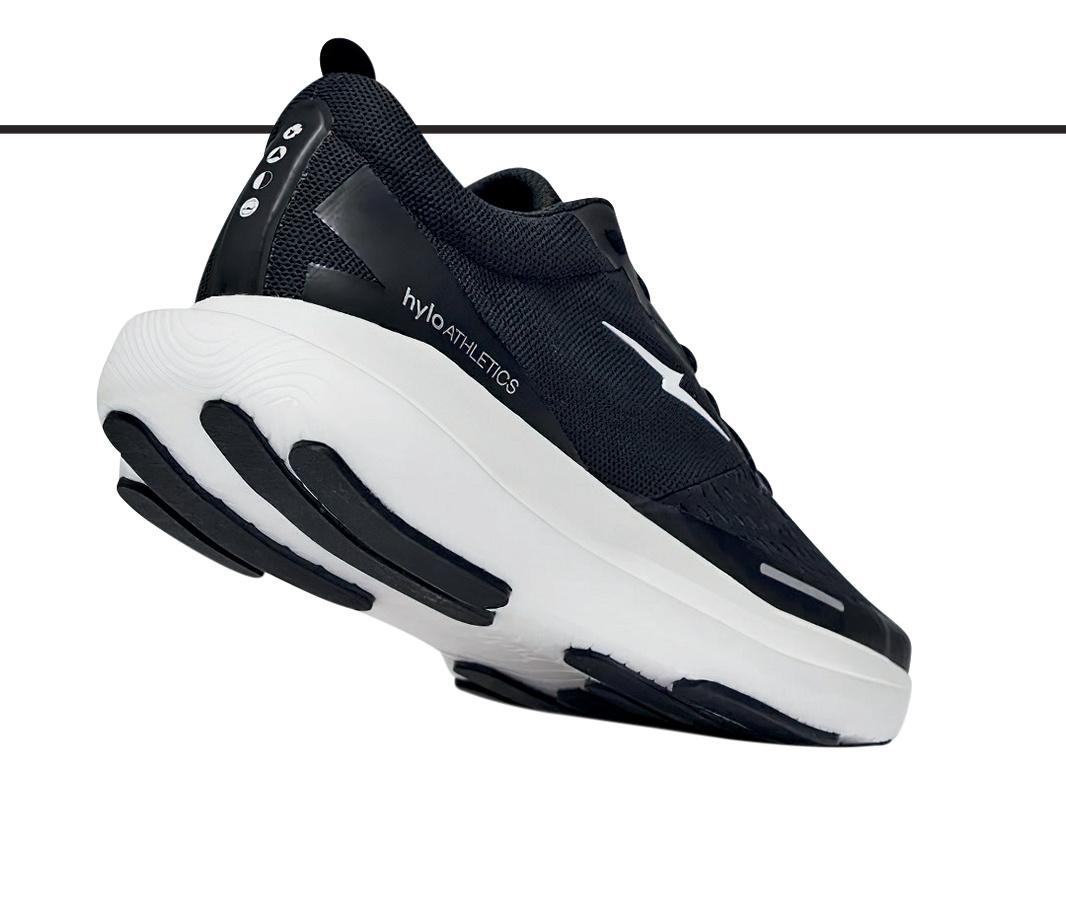

HIf there’s anything that should receive an Impact 150-and-then-some award, it’s an annual impact report entitled “We Aren’t Perfect ” That’s awesome and entirely refreshing. Founded in 2020, the company makes running shoes based on sustainable manufacturing. On the plus side, it’s developed a proprietary midsole, called Hylo Impact, and an aquaplaning-resistant outsole, which it makes using CleanTech™ materials. But it’s tough on itself reporting that it’s still not working with 100% renewable materials and also has to rely on fossil fuels on occasion. But it continues to work towards bettering itself, and if the report’s honesty is any indication, it’ll get there before too long.
Hive is a lifestyle brand founded on sustainable practices. It differentiates itself from its competition by focusing on selling only products its employees have tried and that, preferably, were suggested by its customers. Hive also works on a zero-waste model and prioritizes recycled and recyclable materials. It constantly calculates its carbon footprint and uses offsets to minimize environmental impact. On the management side, diversity and inclusion are also core values, both in products and company culture.
Back in June, Hewlett Packard Enterprise (HPE) released what it calls its ‘2024 Living Progress report,” which goes into some serious depth on how the company is doing on the sustainability goals it set for itself the previous year, Basically, in a world where gadgets multiply like rabbits, HPE is stepping up its eco-game. The report breaks down HPE’s sustainability goals into four basic buckets:
First, there’s carbon emissions. HPE’s got a date with destiny—they’re aiming to be net-zero by 2040. Considering the extent of the company’s manufacturing facilities, that will mean walking a difficult tightrope of change versus capacity.
Next, the company also wants to hit renewable energy. HPE’s already highfived their 2025 goal of sourcing 50% renewable electricity. That covers the same tech that other companies use, like solar panels and wind turbines, but in a much larger volume.
Something you won’t see everyone else committing to is HPE’s third pillar: a focus on cutting down its Scope 3 emissions. Scope 3 is all the indirect emissions caused by just day-to-day business operations—business travel, waste disposal, employee commuting, and even purchased goods and services. HPE’s made reducing Scope 3 a priority for next year, which will take not only work but careful planning.
Last, there’s social responsibility. HPE’s hitting that with a three-pronged approach: its Tech for Good program, which makes IT tech greener; inclusion and diversity across its entire workforce; and, a bump in ethical business standards especially around supporting startups with social impact missions. It’s a well-rounded approach and we look forward to reading how much further HPE gets by 2025.
IDnet made its sustainability splash when it became the first UK telecommunications company and ISP to earn B Corp certification. It made them a standout in the telecom space, especially in the UK, proving a commitment to balancing purpose and profit. The company’s focus on sustainability, inclusivity, and equality are now quantifiable and held up to scrutiny every year. And so far, IDNet’s delivering with their most recent impact move being the switch to using 100% renewable energy.
If you check out Intel’s annual Corporate Responsibility Report, you’ll see it’s something of a standout. Intel has been working on corporate responsibility for 30 years, which makes them the second most senior sustainability player on this list behind Eileen Fisher Inc. The report highlights Intel’s dedication to its RISE strategy, which stands for Responsible, Inclusive, Sustainable, and Enabling.
On the Responsible front, Intel is currently working on its AI and supply chain practices. In 2023, they updated their AI strategy with that in mind and verified that 25% of their high-risk suppliers met human rights standards.
As you’d expect, Inclusive is Intel working keeping its workforce happy and diverse. A good progress point is that 2023 saw the company’s female workers account for 25% of its technical roles.
Intel wants to tackle climate change through sustainability, or at least do something about it. They have achieved 100% renewable electricity in several regions and made significant reductions in greenhouse gas emissions. They have also conserved billions of gallons of water and implemented waste reduction strategies.
Enabling is a bit softer and more locally minded. It accounts for the technology the company donates to local communities as well as the hours its employees have spent volunteering for various causes—spoiler alert: that’s over 1 million hours in 2023.
Overall, Intel’s report showcases decades of commitment to creating a positive impact on society and the environment; that’s something few other companies can say.
Imagin is another newcomer to the financial services space that was founded with sustainability as part of its core mission. The company demonstrates that with its imaginPlanet initiative. Via imaginPlanet, imagin has managed to remove over 100 tons of plastic from the oceans. And whenever a customer brings in another customer, imagin plants a tree, which means that more than 440,000 new friends became imagin customers in recent years. The company also supports monthly digital volunteering and donation goals through its mobile app where it also makes it easy to support other social projects. They even sponsor a program to help sustainability-minded young entrepreneurs meet the right people in Silicon Valley.

Misfits Market, formerly known as Imperfect Foods, is an innovative grocery delivery service that’s taken steps to combat climate change since its inception. The company has pledged to achieve net-zero carbon emissions by 2030—ten years ahead of major retailers and two decades before the Paris Climate Agreement deadline. Misfits Market has already saved an impressive 139 million pounds of food by rethinking grocery shopping and minimizing waste. In the future, Misfits Market wants to deliver even more impact by changing how food is sourced, packaged, and delivered.


Jaden Smith—yes, that Jaden Smith— became a full partner in Just Water when he was only 12 years old. He was smart to do so because the company doesn’t just sell mountain-sourced spring water; it uses only recyclable cartons or aluminum bottles. However, its sustainability goals go beyond ecofriendly packaging. It’s also working on a low-cost water filtration system to help people get clean water in poorer and underserved geographies. Basically, it’s a bottled water company keeping plastic bottles out of the oceans by not using plastic at all. Nice.
K9 Ballistics makes dog beds. Really good dog beds. It has a straightforward chain of events in mind when it comes to sustainability: Make a great product so customers don’t have to buy them as often means producing less waste because of unnecessary manufacturing. K9 makes those products by sourcing raw materials, repurposing waste, and using 100% CertiPUR-US Americanmade foam. It also uses some of the over 5 million plastic bottles it recycled into soft polyester fill. It even makes sure to source its energy from a company pledged to be a carbon-free power source by 2045.
J.P. Morgan Chase is another marquee financial institution on a mission to create a more sustainable future. It’s starting that mission by supporting an all-out transition to building a low-carbon economy, which means they’re investing in companies and technologies that are working to scale out green solutions, including balancing environmental, social, and economic needs.
The goal here is certainly ambitious: J.P. Morgan intends to scale these investments into the $2.5 trillion range by 2030. Yeah, that’s a trillion. You might say that’s throwing a lot of green at green (ok, I’m sorry). The company is also working to go 100% renewable on its internal electricity usage and reduce its Scope 1 and Scope 2 emissions by 40% by 2030. Scope 1 and 2 cover the company’s fuel consumption emissions as well as those caused by company vehicles. Scope 2 covers any directly purchased electricity, heat or steam.
When it comes to innovating for sustainability, J.P. Morgan is again looking to make future-forward investments, like helping clients in carbon-intensive industries reduce their carbon footprints and also investing in younger companies pursuing newer options such as factory-built homes designed to be affordable, energy-efficient, and climate-resilient. Given global weather patterns over the last year, that last one is going to become very important very quickly.
So, while its internal sustainability practices are fairly standard, what brings J.P. Morgan into this list is a careful investment pattern that focuses on some interesting green innovators rather than just risk management.
Have a dream and no way to fund it? That’s where Kickstarter shines, but it’s also been a Public Benefit Corporation since 2015, which means it prioritizes the planet. It’s been Climate Neutral certified, uses 100% renewable energy, and is always working to reduce its cloud computing carbon footprint. Partnering with EcoVadis, it even helps the creators who use its services get sustainability ratings. It regularly donates unused or redundant tech equipment to nonprofits via the Revivn project, helping organizations like Digital Girl, Inc., Refugee Transitions, and Women’s Prison Association.
Kindhumans is a digital marketplace with an important quirk: It only sells products that are made sure to be friendly to both humans and the planet. That choosing process takes the form of very rigorous testing and seriously high standards—then again, if you want just anything, there’s always Amazon. It’s a B Corp, certified Climate Neutral, and a 1% For the Planet company, too, although it goes above 1% in many cases. To help you join in the sustainability impact, it lets you choose a cause or charitable organization at purchase time and then donates 3% of the sale to that organization.
Klean Kanteen makes sustainable water bottles—or ‘drinkware’—and it’s not fooling around. It’s been a B Corporation, a Climate Neutral Certified company, and a 1% for the Planet member for years. But it’s always working on increasing its sustainability, which recently took the form of its new 36oz Rise Tumbler. It’s some slick-looking drinkware made from 90% recycled stainless steel while also being lead- and BPA-free. Hunter Shoop, Klean Kanteen’s Head of Product, says it’s just the latest example of Klean’s environmental commitments and that there’ll undoubtedly be more.
KraveBeauty launched the “Slow Down Skincare” campaign to combat the overproduction and overconsumption trends in the beauty industry, encouraging both consumers and brands to adopt more sustainable practices. KraveBeauty’s products are designed with minimal environmental impact in mind, using sustainable packaging materials sourced from postconsumer recycled materials and ensuring that their products are recyclable. The company is also Plastic Neutral Certified through its partnership with RePurpose Global, offsetting the plastic used in its packaging by funding the removal of plastic waste from the environment,
KraveBeauty has committed to transparency and accountability by publishing an annual sustainability report that outlines its environmental impact and future goals. As a member of 1% for the Planet, it has pledged 1% of its annual sales to environmental causes, supporting initiatives like the Great Barrier Reef Foundation.
Read Le Labo Fragrances’ web copy, and you can almost hear a jaded Frenchman snorting in your ear. The company adheres to values set forth in a stringent Manifesto of one-line rules. The one I like best is ‘celebrities should pay full price,’ but the one that addresses sustainability the most is ‘there are too many perfume bottles.’ To solve that dilemma, Le Labo has a refill program that you can access either online or at one of the retail locations it calls Labs. Overall, Le Labo represents a collection of perfume artists doing things their way, which has the benefit of helping the planet.
Koala makes furniture, but it’s furniture with a conscience. The company uses only sustainable materials, including FSC-certified timber and fabrics made from recycled and plant-derived materials. It even touts its focus on easy assembly as being eco-friendly since it doesn’t have to manufacture those little specialty tools you get with other boxed furniture, so you can put everything together while cussing the whole time. And like many Impact 150ers, it’s a B Corp Certified company as well as a 1% for the Planet member But unlike most of the Worthy 150, it directly supports koala bears via the WWF

Lemonade isn’t about drinks or lemons It’s about insurance And it’s also about giving back Since 2017, the company has donated over $10 million to the causes its customers care about. When you get a policy, Lemonade takes a flat fee, pays claims, and donates the leftovers to nonprofits. That impact has been significant, from building homes to providing clean water and supporting animal rights. It’s a certified B Corp that helps you protect your stuff and make a sustainability impact at the same time.
LinkedIn may be a Microsoft subsidiary these days, but it’s still got goals of its own, particularly around sustainability. They’re ambitious, too. The company intends to achieve carbon negativity by 2030 and (this is an interesting one) remove all historical emissions by 2050.
That last part means that LinkedIn and Microsoft want to remove the effects of all the emissions they’ve made since each company was founded. If you’re wondering how they’re going to do that, we expect they’ll mostly do it via carbon trading but also through ecological restoration efforts like reforestation.
On a more standard front, LinkedIn is committed to using 100% renewable electricity by 2025 and reducing Scope 3 emissions by over 50% from a 2020 baseline. This is good but not a standout, so it’s good that things don’t stop there.
LinkedIn is greening up its campuses. By 2030, it plans to operate with zero waste, which will be a serious challenge, particularly around the waste generated by its construction and demolition activities. Its food and beverage program is focusing on reducing single-use items and packaging. It also aims to decrease water intensity and replenish more water than it consumes.
Jessica Rolph CEO & Cofounder, Lovevery

Lovevery was already socially conscious right out of the gate. After all, it makes educational toys for children. But it’s also trying to help the environment. It partnered with 3Degrees and Flexport to offset carbon emissions and support projects that reduce deforestation in Uganda and Brazil. Lovevery’s Idaho office runs on 100% green power, and it is part of the Climate Collaborative, aiming for net-zero emissions. It’s an excellent example to other toy makers and a classic Impact 150 member.
Lululemon’s is investing in more sustainable materials across the board. For example, by 2025, the company aims to make at least 75% of its materials sustainable. First, they’re diving headfirst into recycled, renewable, and responsibly sourced fibers. So someday, you’ll wear a shirt made from old plastic bottles or jeans spun from regenerated cotton. Lululemon is also targeting polyester, which didn’t disappear with 70s leisure suits. It’s still a ubiquitous fabric found in everything from hoodies to hiking gear, and Lululemon wants to give it a makeover. It’s working to produce polyester from used plastics, which not only reduces waste but also slashes energy use and CO2 emissions. Nylon, another textile heavyweight, is also on the radar. By 2030, Lululemon plans to switch entirely to renewable or recycled nylon. Finally, the company is focusing on better farming practices for cotton. Leather, wool, and other animal-derived materials are also getting an ethical upgrade. By 2025, everything Lululemon uses will be traceable or certified, ensuring strong animal welfare practices.
MegaFood, a vitamin and minerals maker, is a certified B Corporation, like many Impact 150 members. It’s also 50 years old and just released its first-ever Impact Report. The report quantifies MegaFood’s commitment to sustainability, focusing on its workers, community, and environment, as well as maintaining a regenerative supply chain. That includes taking measures such as giving employees paid time off for volunteering and handing out over $1 million annually in product donations, sponsorships, and small grants. It also means eliminating 13,500 pounds of plastic to landfills by shipping with Hexcel instead of plastic bubble wrap and reducing carbon emissions by 157,000 pounds by sharing its trucking load.
A significant portion of Marine Layer’s products are now made with sustainable materials, but one of the company’s cooler ideas is the Re-Spun program, which keeps clothes out of landfills by recycling old tees. Marine Layer has diverted thousands of pounds of textiles from landfills and saved gallons of water through ReSpun. The company also makes sure that its product manufacturing partners are reputable, using third-party audits like WRAP, Intertec, SMETA, or BSCI. Since 2022, it’s been in the top 0.01% of U.S. apparel brands that meet B Corp’s standards of legal accountability and public transparency. That’s a lot of effort on a lot of fronts.

In its 2023 ESG Report, Mastercard outlines its plan to positively impact the world. The report breaks that promise down into three key areas: empowering people, fostering prosperity, and preserving the planet.
It’s a bank, so job one is leveraging its brains, tech, and partnerships to maximize shareholder value—not so socially minded. However, Mastercard has instituted some strong governance principles to align its business strategy and social impact goals.
It’s made notable progress, too, including reducing its Scope 1, 2, and 3 emissions and cutting out first-use PVC plastics in all the credit cards it puts into the world. That’s a standout idea and a big part of why it’s on this list.
Ellen Jackowski, Mastercard’s Chief Sustainability Office, sums it up, “At Mastercard, we are delivering progress against the UN Sustainable Development Goals by ensuring everyone can access, use, and transact equitably and consume sustainably in today’s digital economy.”
Love him or hate him, Mark Zuckerberg is a socially conscious CEO. In Meta’s 2023 Responsible Business Practices Report, the company outlines its dedication to positively impacting the world aside from building the best platform for Farmville.
To start, the report emphasizes sustainability, ethics, and transparency. The company says it strives to be a good steward of the planet while maintaining trust with stakeholders—so making money without leaving a scorched earth. To ensure that happens, it operates transparently, which means everyone can see whether its actions align with all the values and commitments it outlines in its report.
Meta also wants to empower its workforce and partners to do good. Up and down its corporate halls and supply chain, the company wants to maintain a safe and inclusive environment. That means ensuring equitable opportunities and fostering an environment where everyone can thrive.
Responsible innovation is another vital part of Meta’s overall sustainability strategy, probably because it’s on everyone’s mind as AI is sucking up electricity like a kid with a milkshake. To balance against this, Meta says it’s investing in early mitigation. Yes, that’s vague, but the report explains that it means Meta’s technology work and investments are analyzed for future benefits and consequences before the company pursues them.
Finally, Meta aims to empower people worldwide. It encourages sharing ideas, offering support, and making a difference—any way it can. Through connecting communities or enabling social change locally, Meta wants its platforms to play a role in the world’s social changes. And if you want to see how it’s doing, you can via its—you guessed it— sustainability Facebook page.
No, it’s not Elon’s cat, it’s a health and beauty products maker that cares about sustainability. To prove it, all the stuff it makes is 100% backyard compostable. For packaging, it uses aluminum bottles and glass to reduce its carbon footprint. And if what you purchased does happen to have a plastic cap, the company will refill it so you won’t add to the planet’s plastic problem. It extends its sustainability beliefs beyond its own walls, too, by supporting regenerative farming practices and avoiding wildcrafting. Making its products in small batches helps control waste, and its energy use is offset with wind power. That’s a lot of sustainable initiatives for a small company, so you should probably check them out right meow.

MetLife may be a behemoth as a global financial services company, but it also wants to be deeply committed to creating a sustainable future. It even has a slogan: “Always with you, building a more confident future.” Great, but what does it mean? Fortunately, MetLife explains that in its 2023 Sustainability Report.
In a nice switch, the report emphasizes social change rather than tacking it on after all the environmental numbers. Summed up, it says the company is focused on helping underserved communities and fostering diversity not just for itself but for its customers and partners, too.
Internally, they’re very big on employee well-being. As you might expect, a big part of that revolves around insurance. Still, it also includes education programs, a digital talent marketplace, and a program that rewards employees who volunteer, especially for biodiversity causes like reforestation.
As far as the environment is concerned, MetLife says it’ll hit the net zero mark by 2050 or sooner, including its entire operation—offices, vehicle fleets, and technology investments. It’s made $58.5 billion worth of assets that combine excellent returns with a sustainable conscience. A good example is the $44 million it put into solar photovoltaic projects in Chile.
MetLife has a sustainability strategy that hits all the right marks with enough transparency to make them stick.
MiiR makes all kinds of stuff, from kitchenware to clothing (though not Russian satellites). It’s doing so while focusing on sustainability from sourcing to design. It aims to achieve net zero emissions by 2030 and intends to hit that goal by building products for durability and recyclability. The company uses recyclable materials and partners with factories prioritizing environmental responsibility and fair labor practices. It’s even reduced its carbon emissions by opening a logistics hub in Asia to ratchet down freight.
Nécessaire Inc., known for pioneering Skincare for the Body™, integrates sustainability into its core operations and product development. As a Certified B Corporation, Nécessaire meets high standards of social and environmental performance, accountability, and transparency (Cosmetic Executive Women).
Nécessaire is also Climate Neutral Certified, measuring and offsetting its carbon footprint, and Plastic Neutral Certified, ensuring that its plastic usage is fully offset. The company contributes 1% of its sales to environmental nonprofits as a member of 1% for the Planet. Nécessaire also uses FSC-certified paper for its packaging and has partnered with How2Recycle to provide transparent recycling information.
Nimble’s tagline is ‘Tech for Good,’ it’s apropos. You probably never considered your USB cable as ecologically relevant, but Nimble has. That’s why it’s one of few electronics makers that creates products using only eco-friendly materials. Its Replay program goes a step further by reusing waste materials like plastic and aluminum, hemp, PET plastics, glass, and even discarded paper products. It’s making grade-A electronics out of what’s in the dumpster behind your building.
In a small Greek village, a family makes big bubbles in the soap industry. Their mission? To ensure everyone has access to pure and clean skincare and beauty products. Certified as a B Corporation and Leaping Bunny Certified, Manos loudly advocates safer ingredients. It sources only ingredients that are responsibly made and uses recyclable packaging. It even has an online list of ingredients and products it doesn’t like, called the Banned List. Keep your hands soapy, and they’ll stay clean and sustainable. That’s pretty much the Manos gameplan.

Microsoft’s 2024 Environmental Sustainability Report is a mixed bag of achievements and hurdles. It’s made big moves in things like carbon-free electricity and water access. In 2023, it ramped up its renewable energy game, contracting over 19.8 gigawatts of renewable energy projects across 21 countries. They also made significant progress in carbon removal, contracting over 5 million metric tons to be retired in the next 15 years.
Then there’s water, something you don’t much associate with Microsoft. Nevertheless, the company provided clean water access to over 1.5 million people and launched innovative and non-profit projects to reduce water loss. It also hit a reuse and recycle rate of 89.4% for cloud hardware, diverting tons of waste from landfills.
Microsoft remains optimistic while being transparent about its challenges and areas for improvement. This sets them apart from many other companies on this list, showcasing a commitment to progress. Microsoft’s messaging is a blend of hope and candor, offering a realistic yet hopeful vision for the future.
New Chapter makes a wide variety of dietary supplements, but it’s highly committed to sustainability. It looks at its suppliers closely to ensure their ethics and use of sustainable sourcing. An impressive move is the zero-wasteto-landfill facility it built, which recycles or reuses over 80% of its manufacturing waste. It also prioritizes sustainable packaging, opting for glass over plastic and incorporating recycled materials. By 2030, it wants to eliminate virgin plastic from its primary packaging entirely and reduce greenhouse gas emissions simultaneously.
Based in Oregon, New Seasons says it was the first grocer to get B Corp certified. Its mission is to impact sustainability through local sourcing and ensure it knows the origins of everything it sells. If it’s on the shelves, it’s regional, organic, and probably comes from another B Corp. They’ve never offered plastic shopping bags and have always worked on a compostable model. It’s working to reduce the GHG emissions caused by refrigerant leaks by 10% in 2023, then get it down 45% by 2026 and eliminate it entirely by 2030.
Nisolo is a shoemaker that touts its holistic approach to sustainability. Its sustainability goals highlight how broken the industry is and it’s pushing for change through its Sustainability Framework. This framework focuses on five pillars: People, Planet, Transparency, Accountability, and Collaboration. The framework also mandates a circular approach to fashion, ensuring every stage considers environmental impact. By working together, Nisolo envisions the fashion industry as a force for good, capable of epic change, including eradicating poverty and reversing climate change.
NOVICA’s unique Novixa is an online listing and fulfillment platform tailored to the needs of small artisans across the globe. It cuts middlemen, so craftspeople can earn more for their work, and customers can pay less. With artisans that sell more than 70,000 different products off its platform, Novica has a history of working towards social betterment. Just one example from this past year is when it Nest to help make its fair trade and monitoring protocols even stronger. Nest built training materials that Novica can use in different countries to educate artisans on better practices and standards. It now awards a “Novica Ethically Made” badge to artisans that meet its new verification protocol.
Occushield makes eye protection from glasses to computer screen covers, helps people with vision loss and improves the environment. It’s a B Corp and meets that certification’s environmental protection requirements. For those with eye problems, it donates $1 or £ 1 from every order outside the UK to Orbis, an international eye care charity. Plus, all orders from inside the UL generate an equal contribution to Guide Dogs, a UK charity for the blind and partially blind.

Numi Organic Tea has been around for 18 years and, in that time, has shown an exemplary commitment to sustainability and social responsibility, not the least of which is the teas it sells, which are made from only organic ingredients the company can trace back all the way to where they were grown. It promotes ethical treatment and fair wages for tea farmers, and it’s invested over $1.8 million towards that goal. Its Together for H2OPE initiative has brought clean water to 4,000 people in Madagascar. It takes its environmental commitment further by using only eco-friendly packaging materials like delivering biodegradable tea bags that reduce waste and environmental impact.
NVIDIA has an annual report devoted to energy and the environment, but as you’d expect, this year, that’s mostly about AI. A better measure of the company’s sustainability progress is its latest corporate responsibility report, which showcases NVIDIA’s environmental contributions and goes deep into how it’s working to help communities and its employees.
The company touts that it’s risen to the number 2 spot on Glassdoor’s Best Places to Work list for large U.S. companies. It’s more impressive that 95% of its employees would recommend working there to a friend. NVIDIA lists the steps it’s taken to get its high rank including prioritizing employee health, a generous family leave policy, surrogacy benefits, and gender affirmation resources. Their Ignite program prepares students from underrepresented communities for internships, and partnerships with organizations like Black Women in AI aim to increase access to AI education.
Many AI companies talk about reducing the energy use of their data centers, but NVIDIA leans into its technology.
According to the company, its GPUs enable faster weather forecasting and climate modeling. It also plans to build the not-at-all-disturbingly named Earth-2, an AI supercomputer for ultra-high-resolution climate simulations. Finally, there’s NVIDIA’s energy-efficient technology, which it says could save nearly 12 trillion watt-hours of energy annually if adopted globally.
Every other company on this list has some part of its workforce and business efforts focused on sustainability and social impact. But Patagonia is a different animal. It’s all about sustainability and ecological reform, and it’s been that way for 50 years. The fact that it makes nice clothes and outdoor gear is almost an afterthought.
As such, there is no neat, piechart-laden annual report that highlights all of Patagonia’s sustainability progress over the last year. You need to dig in and pick what you like best from a long list.
My personal favorite, hands down, is the Shitthropocene. It’s a 45-minute movie Patagonia developed and released on its site this past April. It’s about humanity’s consumption habits. It pulls no punches and it’s funny, too. Big ups in my book and a listworthy effort all on its own.
But there’s more, like the Home Planet Fund, also launched in April. It’s an independent nonprofit that started with $20 million in seed money provided by Patagonia back in 2021. It works on a local scale with communities and indigenous peoples, helping them work together to save their natural environments and stop climate breakdown.
Patagonia also worked with the Bureau of Land Management and the U.S. Forest Service to ensure that Alternative E became the final resource management plan for the Bears Ears National Monument. If you’re wondering why, it’s because Alternative E not only incorporates sustainable land management but also upholds the sovereignty of the local Tribes while still protecting the wildlife habitat and the region’s biodiversity. And it keeps it a way gnarly place to rock climb, too.
You don’t have to list all the ways Patagonia has earned a place on this list of sustainable companies. It just wouldn’t be a viable list without it.
PayActiv is a financial services provider on the social impact map because it created Earned Wage Access (EWA) in 2012. Before then, if you had a gap between what you needed money and when you got paid, all you could do was take out a pricey payday loan or eat an overdraft fee. PayActiv EWA provides another option that’s easier, safer, and maintains the dignity of people who work very hard but still have bills due before they get paid. And even with inflation rising since the pandemic, more than 75% of PayActiv users say EWA has helped them cope with those pressures. It’s a breakthrough concept—on-demand pay—that may not be one of the traditional social impact measures, but it definitely has a far-reaching, positive effect.
PANGAIA LAB says it’s all about responsible innovation. It makes cool stuff, but always with sustainability in mind. In 2023, it reported that 85% of its products are now recyclable and that it’s made a 40% reduction in its carbon footprint since 2021. It also introduced PANGAIA ReWear, a resale platform to keep products in circulation longer. It’s also demonstrated a commitment to human rights and fair treatment in its supply chain, a problem that plagues many fashion businesses, and one with which we hope they have quick success.
Hawaiian-inspired OluKai mainly makes outdoor footwear, but it does so with an eye towards environmental sustainability. Recycled materials make up 30% of every product and it uses 100% recycled materials for its packaging. It also uses only natural latex and sources its leathers only from tanneries that have been ISO-14001 certified. In the future, it wants to use only water-based glues in its shoes, but that technology apparently isn’t mature enough yet.
PepsiCo has made more than soda this past year. It’s also made some impressive strides in its Environmental, Social, and Governance (ESG) efforts. The company’s latest ESG report highlights several vital achievements that showcase its commitment to sustainability and social responsibility.
PepsiCo makes special mention about its Scope 1 and 2 emissions, which it reduced by 13%, and when you tack on Scope 3, it’s an overall 5% reduction. That’s not earth-shattering, but it’s an important step for a massive company that’s trying to hit net-zero emissions by 2040.
I liked the part about PepsiCo doubling its global regenerative farming footprint to over 1.8 million acres. That’s a big company promoting sustainable agricultural practices, which is great.
On the social front, PepsiCo has made remarkable progress in water conservation, achieving a 25% improvement in water-use efficiency at high water-risk locations compared to a 2015 baseline. They also helped more than 10 million people access safe water in 2023, bringing the total to over 91 million since 2006.
A CBD and supplement company, Plant People Inc. makes and sells its own products, which include not just hemp and marijuana-based products but other plant ingredients, too, like mushrooms and just plain veggies. But it makes all these products with an exceptional focus on environmental impact. A B Corp and a Climate Neutral firm, Plant People only uses ingredients from biodiverse farms that practice ethical and traceable agriculture. It also runs a ‘minimal plastic’ supply chain and contributes to other environmental efforts, particularly planting trees.
Plaine Products is an eco-conscious beauty and cleaner brand on the green trail for years. It’s made its sustainability commitments a three-pronged effort. First, there’s waste reduction, something Plaine has a lot of considering the products it makes. So far, it’s diverted over 122,800 plastic bottles from landfills. Next, there’s climate action. That’s where Plaine customers helped prevent 35,273 kg of CO2e from escaping into the atmosphere by going with Plaine’s plastic alternatives. Plus, they offset 84.83 tCO2e from product transportation. Finally, on the social impact side, Plaine is a 1% for the Planet member, and in 2023, it donated more than $20,000 to local charities.
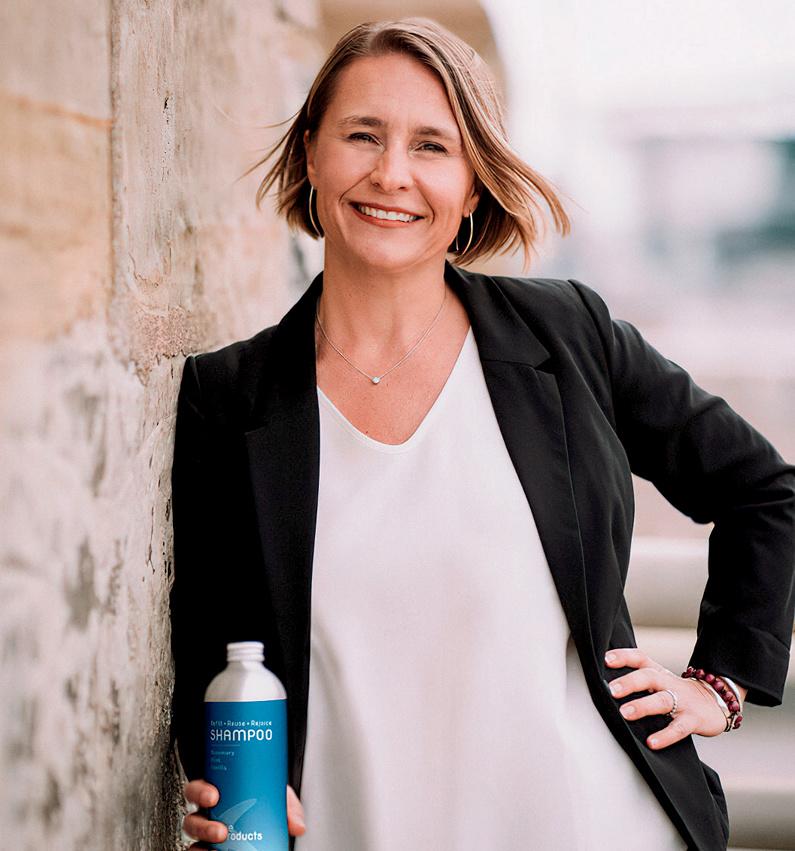
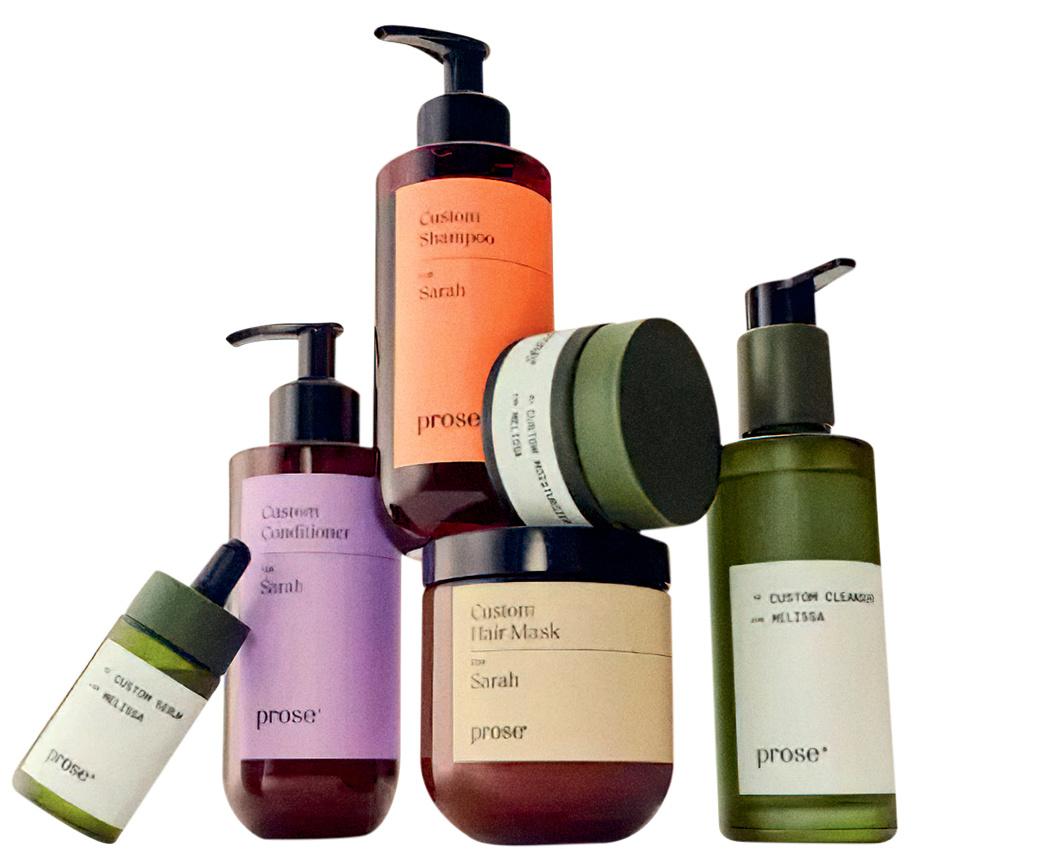
Prose wants to differentiate itself in the beauty industry not only via sustainability, but also customized products. To buy conditioner from Prose, you can first have a hair consultation with a Prose rep, and from that discussion, the conditioner you receive will be custom-made just for you. Prose says this helps reduce waste. Beyond customization, it’s also a carbon-neutral company, offsetting 100% of its carbon footprint. Customers can opt out of pumps, which saves on plastic and packaging. Finally, it’s involved with its Brooklyn community, partnering with local organizations for events and giving.
The company emphasizes ethical production, ensuring that all bracelets are handcrafted by artisans in Costa Rica, El Salvador, India, and other countries. This provides sustainable jobs to over 800 artisans worldwide. Pura Vida adheres to fair trade principles, promoting fair wages, safe working conditions, and sustainable livelihoods for its artisans.
The company also focuses on environmental sustainability by using ecofriendly materials and reducing plastic waste. Pura Vida has implemented minimal and recyclable packaging solutions, contributing to its efforts to reduce its environmental footprint. Furthermore, Pura Vida Bracelets has donated over $3.8 million to various charities through its charity collections, supporting causes such as ocean and marine life conservation, mental health awareness, and cancer research.
Pukka Herbs has been around for over 20 years, selling holistic remedies based on various herbs. It recently stopped selling supplements, however, and is now focused solely on its herbal teas. Part of its sustainability impact is reaching as many people as possible and educating them about the benefits of herbal teas. That sounds like advertising, but the company wants to spread this information regardless of whether you buy its products. On a more standard front, it supports ethical and traceable agriculture, bio-friendly and compostable products and packaging, and it gives back through reforestation while promising to be net zero by 2039.
Paper manufacturing can produce a lot of waste, but Reel is on a mission to change that with an innovative strategy: avoid using trees. Instead of using traditional tree-based paper, it creates its products from sustainable bamboo—one of the fastest-growing plants. Reel went this way because Bamboo regenerates quickly and has a smaller environmental impact. Reel also incorporates recycled fibers from offices and schools. Their packaging is plastic-free and biodegradable. Plus, they offset carbon emissions from shipping.
The big highlight in Salesforce’s annual sustainability news is that it’s achieved 100% net zero residual emissions and that’s across the entire value chain. It’s operating entirely on renewable energy, which puts them on the map when it comes to fighting climate change.
But if you’re in the lead, why not give others a leg up, too? And Salesforce wants to do that by launching its Sustainability Cloud 2.0. As expected, that’d be a software tool to help its corporate customers track and reduce their carbon emissions. It lets users collaborate with a Slack-First Sustainability interface and it incorporates a carbon-credit ecosystem in case you’re into carbon trading. Sure, it’s another software sale for Salesforce, but it’s also a meaningful weapon for climate action.
Salesforce is also making a big impact through partnerships. They’ve funded an additional 30 million trees this year, aiming to reach 100 million trees by 2030. Plus, they’ve donated $1 million to American Forests and One Tree Planted to support reforestation efforts.
Marc Benioff, CEO of Salesforce, didn’t say much of anything new when he emphasized that climate change is a “pressing crisis” and that everyone has a role to play. Then again, it’s always good to hear the CEO of a major corporation say that.
Ritual, a supplement company, looks at sustainability through all the usual lenses but is also clear about its challenges. A big one is traceability. It says even a supplier they like for manufacturing reasons often won’t comply with its traceability requirements, which made it very difficult to get to a 100% traceable supply chain, but despite the challenges, the company succeeded in that goal last year. It shares the carbon footprints for each product it makes online and aims for Net Zero emissions by 2030, with 22% progress already. It’s a solid sustainability plan with detailed descriptions of challenges and areas where it still needs to do some work.
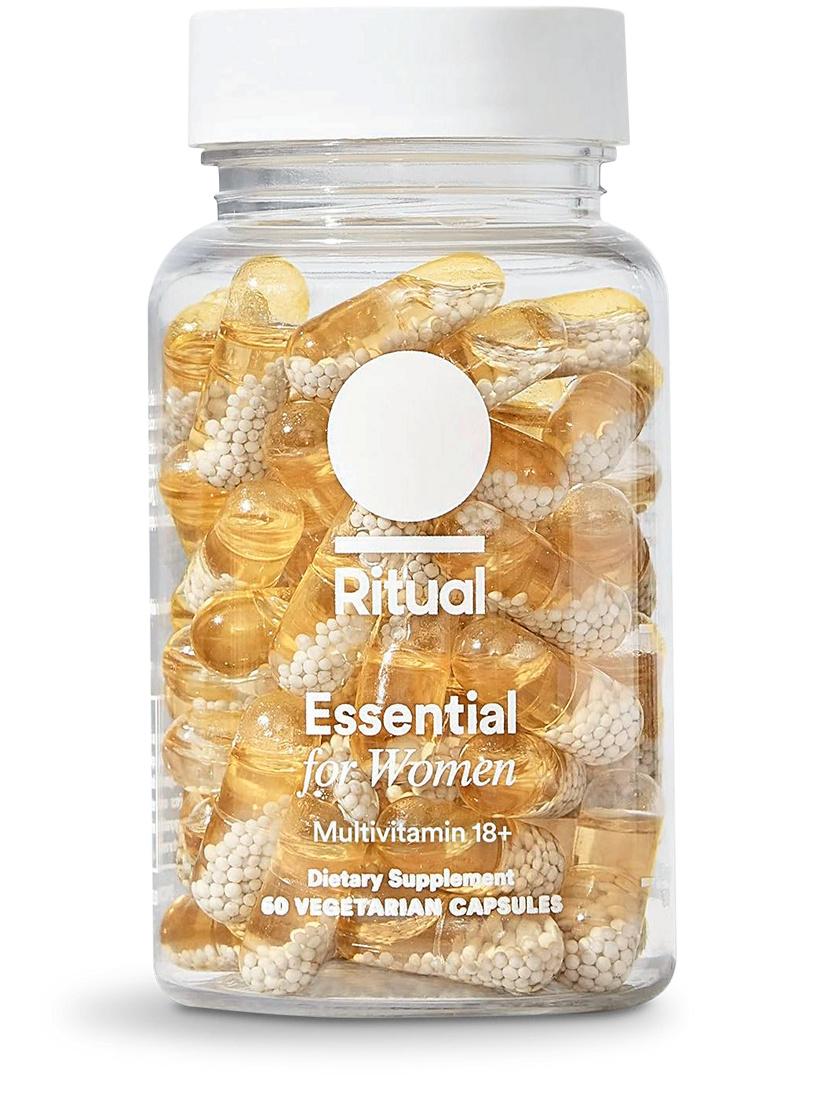
Rituals bases its products on the “traditions of ancient cultures,” particularly fragrance items. That strategy seems to work well with its significant strides in sustainability over the past year, notably saving over 802,587 kg of materials and 19.3 million liters of water through its refill programs. According to its most recent Impact Report, its commitment to Net-Zero by 2050 is on track and it’s still aiming to reduce greenhouse gas emissions by 50% by 2030. Additionally, its planted 5 million trees in India, Kenya, and Colombia. Finally, it’s constantly looking to use more natural ingredients, and it currently has 80% of its personal care formulas meeting that mandate.
This French fashion label does more than make classically fashionable duds. It works hard at making an Impact; efforts that it divides in two basic directions: sustainability and philanthropy. On the former, it’s committed to using eco-friendly materials like organic cotton and recycled polyester in over 80% of its products. Sézane also tries to set an example on the giving side through its philanthropic program, Demain. It’s partnered with global charities to raise over €7 million, benefiting 45,000 people across 300 projects, from school kits to healthcare.

Charlie Youakim Executive Chairman & CEO, Sezzle
Sezzle, a public benefit company and a certified B Corporation makes an impact across the spectrum of sustainability and social issues. That includes diversity and inclusion, employee security and wellness, and environmental sustainability. On the last front, it’s not only a remote-first organization. It’s also doing what it can to help keep global temperatures from rising beyond 1.5°C. It also polls its workers monthly to make sure it’s on track for diversity and pay equity and has a robust community outreach program that includes scholarships, supporting local charities, and giving employers paid time off to volunteer for causes they believe in.
Soapbox operates on a “buy one, give one” model, donating a bar of soap for every product sold. This approach has resulted in over 38 million soap bars donated to communities in need globally, addressing hygienew and sanitation challenges
Soapbox is a Certified B Corporation that meets rigorous standards of social and environmental performance, accountability, and transparency. The company emphasizes sustainable practices, including using naturally derived ingredients, cruelty-free and vegan formulations, and eco-friendly packaging
Working with Delta Hotels by Marriott, Soapbox is expanding its reach, donating more than 1.5 million bars of soap annually to those in need. This initiative not only provides essential hygiene products but also supports local communities through hygiene education and sustainable development projects.
SoLo is a finance platform focusing on underserved communities. Members borrow on their own terms, which is great. But they can also lend to make competitive industry leading returns or a support social impact. It’s the only Black-owned fintech Certified B Corp in the U.S. and it’s on track to put more than $1 billion into underserved communities in 2024. SoLo looks at its model not as a financial business, but as a financial community where members can participate on both sides of a transaction. For people struggling to get service from traditional finance companies, SoLo makes its Impact 150 mark by helping them get the services they need without jumping through hoops or paying overly expensive fees.
Perhaps you bought a Prius but you didn’t realize how much you’d hate all the charging paraphernalia you need to install at home to keep the thing juiced. That’s where Simple Switch would have come in. It’s furthering the cause and environmental impact of EVs by selling a simple-to-install switch that diverts your home electricity to charging your new, eco-sensitive wheels. The switch is smart enough to constantly measure the electricity being used in your home. When it’s 80% or above, the switch stops charging the car and then automatically resumes as soon as usage drops below that threshold again. You can even use it to power new appliances that previously would have needed expensive upgrades to your electrical system. Simple Switch may not have a comprehensive Impact Plan like many other Impact 150 members, but its product goes a long way toward making up for that.
Sunrise Banks pioneers the concept of net zero banking. As you’d expect, that’s all about investing to track and reduce carbon emissions. It offers customers both net zero depositing as well as lending and backs both personal banking accounts. Sunrise invests its net zero deposit funds only towards loan projects that are proven to reduce or avoid carbon emissions. The bank is publicly committed to help the planet reach net zero emissions by 2050, basing that goal on the Paris Climate Agreement. And it’s making that stick using the Green Bond Principles and the Green Loan Principles as guidelines.
Starbucks is committed to achieving carbon neutrality by 2050 and has set ambitious goals to reduce its carbon, water, and waste footprints by 50% by 2030. Starbucks has been actively investing in renewable energy, with 100% of its company-operated stores in the U.S. and Canada powered by renewable energy since 2015.
Starbucks emphasizes ethical sourcing, with 99% of its coffee sourced through Coffee and Farmer Equity (C.A.F.E.) Practices, which ensure responsible growing practices and fair treatment of workers.
Additionally, the company has initiated the Starbucks Greener Stores framework, aiming to design, build, and operate 10,000 Greener Stores globally by 2025, focusing on energy efficiency, water conservation, and waste reduction.

‘Fashion house tentree says its mission is to make clothes and restore the planet. Though it’s been working on this idea for years, it recently formalized its plan into its Restorative Agenda. The agenda outlines a highly comprehensive approach to sustainability since it covers tentree’s commitments to the climate, eco-friendly product manufacturing, transparency and traceability of its suppliers, what it’s going to do to help the environment at large, and, finally, what it does to help people, both its employees and the folks in its community. Hitting every point in its agenda will be a huge effort for Tentree, but it’s a deserved member of the Impact 150 for trying.
The Nue Co. is a supplement maker who wants to benefit people and the planet. To that end, it’s made sustainability part of its core mission. That includes becoming a net zero company soon. But while it’s working on that, it’s implementing other measures, including a refill program that uses pouches to reduce shipping weight by 75%. It also emphasizes avoiding plastic in its packaging in favor of 95% infinitely recyclable materials. Finally, it supports projects like rainforest conservation in Peru and reforestation in Madagascar.
T-Mobile is committed to achieving net-zero carbon emissions across its entire footprint by 2040, covering Scope 1, 2, and 3 emissions. The Science Based Targets Initiative (SBTi) has validated this ambitious goal, making T-Mobile the first U.S. wireless company to set such a comprehensive net-zero target.
T-Mobile has made significant strides in renewable energy, achieving 100% renewable electricity for its operations, a first in the U.S. wireless industry. This milestone was reached through a combination of virtual power purchase agreements, renewable retail agreements, and other green energy initiatives. Additionally, T-Mobile has reduced its energy consumption per petabyte of data by 62% since 2019, reflecting its commitment to improving energy efficiency as data traffic grows.
The company also emphasizes product circularity and waste reduction. In 2023, T-Mobile collected and processed 11.7 million customer devices for reuse, resale, or recycling. This effort is part of a broader strategy to embed sustainability throughout the product lifecycle, from design and manufacturing to distribution and end-of-life management. Moreover, T-Mobile’s packaging guidelines promote the use of certified paper fibers, sustainable printing processes, and the reduction of single-use plastics.
Think of The Spruce as Consumer Reports meets Home & Garden mixed with a dash of social media. If you’re in the market for home-related products, you can check The Spruce to see if the product has been independently tested and, if so, the results. You’ll also find a long list of how-to articles on making your home a better place. The site makes a social impact by focusing on diversity in both its staff and the independent creators who perform its testing and write its articles. It makes sure its contributor companies are at least 25% BIPOC-owned and has even formed an internal review board to make sure that’s enforced.

If you want to be sure of where the ingredients in your cosmetic products come from, then Three Ships is the brand for you. Part of its sustainability strategy is going for complete transparency on how its products are made. It includes Source Maps on every product web page that allows you to trace every ingredient from farm to shelf It also uses glass bottles instead of plastic as well as recycled and discarded materials for packaging Its stated sustainability goal is for all plastic packaging to be reusable, recyclable, or compostable. A good effort and one with which we hope they succeed.
The company has set ambitious goals to become the world’s first climate-positive grocery store by 2025. As part of this commitment, Thrive Market is already Climate Neutral Certified, ensuring that they measure, reduce, and offset 100% of their carbon emissions. Additionally, all Thrive Market warehouses are TRUE Certified for Zero Waste, meaning they recycle or repurpose at least 90% of materials, diverting them from landfills and incineration
Thrive Market is also focused on plastic neutrality. By 2023, they had reduced plastic shipping materials by 70% and achieved Plastic Neutral Certification through their partnership with rePurpose Global. The company continues to work on cutting plastic usage and maintaining their certification
On the social front, Thrive Market has made significant strides in food equality, raising $13.4 million to provide healthy groceries to underserved communities. They also became the first U.S. grocer to become a Public Benefit Corporation, balancing profit with social mission)

sTOMS has committed to using 100% sustainable cotton by 2025 and has already made progress by incorporating recycled cotton into its products. Their Earthwise™ line features products that are 100% plastic-free in packaging and made with eco-friendly materials. Additionally, TOMS has a robust social impact strategy, dedicating one-third of its profits to grassroots organizations focused on mental health, access to opportunities, and ending gun violence. In 2022, TOMS supported various initiatives, including donating $1.7 million to grassroots causes, funding mental health programs, and advocating for gun control legislation
The company is a certified B Corporation, which reflects its adherence to rigorous social and environmental performance standards, accountability, and transparency. Tom’s of Maine focuses on natural and responsibly sourced ingredients, ensuring all products are free from artificial flavors, colors, and preservatives.
The company has implemented several sustainability initiatives, including reaching zero waste by 2025. Tom’s of Maine also emphasizes water conservation, aiming to reduce water usage in manufacturing. The company actively supports renewable energy projects and offsets its carbon emissions, contributing to global efforts to combat climate change.
In addition to its environmental efforts, Tom’s of Maine is dedicated to social impact. The company donates 10% of its profits to charitable organizations, focusing on health, education, and environmental stewardship.
TomboyX makes high-priced underwear but justifies those prices with an all-in commitment to sustainability and ethical practices. It’s B Corp certified, but that’s only the beginning. The company is committed to fair treatment of its workers and very high environmental standards. It uses only organic and recyclable fabrics, like TENCEL Modal from beechwood trees, and delivers everything in biodegradable packaging. It has OEKO-Tex certification for safety, and its factories are also WRAP and Fair Labor Association certified. Finally, its corporate team is diverse, and it pays above-industry-standard wages. That’s an A-Z approach to sustainability and a worthy strategy for an Impact 150 member.
Trove is a resale platform that you may have seen mentioned above since it works with several Impact 150 companies, like Eileen Fisher and Patagonia. If a company wants to institute a resale program for returned or aging products, Trove is the platform to do it. It partners with reselling companies rather than offering a for-pay solution. That allows it to maintain high sustainability metrics throughout the resale cycle, which let it and its partners save more than 2 million kgs of CO2e and keep over 200,000 kgs of waste out of landfills last year.
The company has committed to achieving net-zero greenhouse gas (GHG) emissions by 2050. This ambitious goal involves reducing Scope 1 and Scope 2 emissions by 35% by 2030, with significant progress already made, including a 21% reduction in Scope 1 emissions and a 32% reduction in Scope 2 emissions since 2019 (Truist Investor Relations)
Truist is also deeply involved in sustainable finance, supporting over $22 billion in sustainable finance projects in 2023. Additionally, they made direct capital commitments exceeding $1.7 billion to support renewable energy transactions. The company actively invests in energy efficiency projects across its operations, including LED lighting, energy management systems, and smart irrigation systems (Truist)
Truist has made significant contributions to community development on the social responsibility front, with over $99 million in total giving in 2023 through the Truist Foundation and other philanthropic efforts. This includes supporting affordable housing, small business access to capital, workforce development, and essential community services. Furthermore, Truist’s employees dedicated approximately 72,000 hours to volunteering in their communities
Seemingly an ancestor to Etsy, Uncommon Goods was founded back in 1999 with the business model of connecting people who make unique things with people who want to buy them. It’s rigorous in vetting how those products are made, too, which helps it sustainability impact. But it also works to better the social side, creating a program called Better to Give. Through that, the company donates $1 for every purchase to causes like forest conservation and the International Rescue Committee. So far, it’s donated over $3 million, which qualifies it as an Impact 150 member.
Unilever has been a leader in integrating sustainability into its core operations. Committed to achieving net-zero emissions from all products by 2039, Unilever has achieved 100% renewable energy across its global operations. The company aims to halve its use of virgin plastic by 2025 and ensure all plastic packaging is reusable, recyclable, or compostable Unilever also focuses on improving health and hygiene for over 1 billion people by 2030 and empowering 5 million women through various programs Their responsible sourcing benefits smallholder farmers and workers globally, showcasing their dedication to sustainability and social responsibility


United by Blue makes bags, accessories, clothing, and other household items But a big part of its focus as a business is sustainability, particularly reducing waste. For every item it sells, it removes trash from local communities and even tackles international waste hotspots, like heavily polluted areas in the Philippines and Indonesia. It’s also using only nontoxic, regenerative fibers and recycled fabrics in its products. It’s constantly working against waste and overproduction, so it extends its sustainability commitments beyond itself by holding its manufacturing partners to high social and environmental standards.
Verizon is committed to sustainability and social responsibility, aiming for netzero carbon emissions in its operations by 2035. The company focuses on renewable energy, with over 50% of its electricity consumption coming from renewable sources. Verizon has also launched programs to enhance energy efficiency across its network infrastructure. The company emphasizes e-waste reduction through extensive recycling programs, ensuring responsible disposal and reuse of electronic devices. Verizon’s social initiatives include bridging the digital divide by providing affordable internet access to underserved communities and investing in STEM education programs to empower the next generation. These efforts highlight Verizon’s dedication to sustainability and social impact.
Of all the Impact 150’s sustainability-minded fashion companies, Vestiaire is the only one to attempt quantifying the problems in its industry. After conducting a deep survey on buying preferences with over 13,000 customers, it’s come up with proof that the world can’t afford ‘fast fashion’ quantified by its own cost-per-wear metric, which shows the true cost of an item based on its frequency of use, total lifespan, and resale value. It promotes customers buying ‘pre-loved’ fashion since those have an average 33% lower cost-per-wear than fast fashion stuff. They also help the environment by reducing the landfill waste that fast fashion causes. It’s detailed all its conclusions in a Circularity Report you can download here.
Just in time for this article, Visa’s 2023 Corporate Responsibility & Sustainability Report is out, and it’s impressive. On the social front, it’s digitally enabled nearly 67 million small businesses worldwide, with 23 million led by women, particularly in South America. Switching to green, Visa has cut its greenhouse gas emissions by 24% since 2020 and continued using 100% renewable electricity. Plus, it’s maintained global pay equity (though that should probably be a matter of course) and delivered hundreds of thousands of learning hours to its employees. Quite a lot of effort for 12 months, certainly for a financial services company.
Regarding sustainability, it has been a big year for VMware. It launched the Green Score feature in its VMware Aria Operations Cloud to help customers optimize energy and carbon use Plus, it’s expanded its Zero Carbon Committed initiative, adding 24 new partners focused on renewable energy VMware also joined the European Green Digital Coalition, teaming up with other IT companies to reduce emissions through digital solutions The company intends to be even more ambitious next year


As a spectacles wearer myself, I find it nice to see that Warby Parker is doing more than just letting me drive safely. Its 2023 Impact Report showcases some impressive sustainability and community work. It distributes over 15 million pairs of glasses through its Buy a Pair, Give a Pair program, which is active in more than 80 countries. It also partnered with Eastman Chemical, saving 27,000 pounds of single-use plastic from landfills. The Pupils Project provided over 55,000 pairs of glasses to U.S. schoolchildren in the 2022-23 school year and got expanded to New Jersey and Oregon. Finally, it now works with the Lions Club on a new glasses reuse donation program.
Wellnesse was founded to make personal care products that use nontoxic ingredients, which is more of challenge than you might think. But after years of work, Wellnesse has delivered a full catalog of completely safe beauty and grooming products. Worried it’s not true? You can track and learn about every ingredient in all its products via its Ingredient Index, which is open to the world, not just its customers. The Index delivers indepth information on every ingredient, not only how Wellnesse uses it but what effects it has no matter where you find it. That makes it a valuable sustainability resource for everyone.
Welly Health makes its social impact by focusing on pediatric health. Keeping children healthy, happy, and playing safely. Its core business focus is on children’s health products. But next to that, it supports equitable access to playgrounds and other child facilities in underserved communities by building playgrounds, gathering toy donations and enabling youth sports participation. It works to raise parental awareness about what it takes to encourage children to play safely. Lastly, it runs employee volunteer programs and product donations across all the communities it supports. Most Impact 150 members work towards bettering the planet, which is great, but it’s also important to protect our kids, and it’s good to know someone’s on that.
Worth’s Impact 150 Methodology

West Paw’s Seaflex product line is a notable example of its commitment to sustainability, incorporating ocean-bound plastic into durable, safe dog toys By recycling ocean-bound plastics and integrating them into their products, West Paw helps prevent marine pollution while creating high-quality items for pets Their Zogoflex toy line uses recycled materials and operates on a closed-loop recycling program, where old toys can be returned, cleaned, and remanufactured into new products. West Paw’s dog beds are stuffed with IntelliLoft, made from 100% recycled plastic bottles, and their leashes are also made from recycled material. Furthermore, West Paw has launched regenerative beef sticks sourced from local Montana ranches practicing regenerative agriculture. This initiative supports sustainable farming practices and promotes the health of local ecosystems

Workday’s 2024 Global Impact Report says it is working to “protect the planet, put people first, and act with integrity.” Fortunately, that seems to be right. Workday outlines a program that uses AI to help train its employees. It’s also hit its 100% renewable electricity goal and is working to reduce emissions even further. Like many other worthy companies on this list, it’s also pursuing partnership projects so it can hit and share its goal of reducing carbon emissions significantly by 2030. Not bad.
Who doesn’t love used bookshops. Well, World of Books is a massive version of a used bookshop based in the UK. Now 20 years old, it’s a certified B Corp employing over 700 people with sales exceeding £100 million. Selling that many used books is the equivalent of saving over 26,000 tons of paper that’d be used in new books. But it doesn’t stop at paper conservation. World of Books reduced its carbon footprint by 50% since 2020. On the social end of things, it’s pledged to donate a million books to book charities by 2025 and raised over £100,000 for various causes via a partnership with Virgin Money Giving. That’s a lot of sustainability for a bookstore, even one as large as World of Books.
To build the Impact 150, Worth partnered with Karma Wallet. Karma Wallet’s rating system stands out for its comprehensive approach, meticulously aggregating data from over 40 credible third-party sources, including certifications, audits, and non-profit ratings. This extensive data collection is supplemented with proprietary research and direct company engagements, ensuring a robust and accurate assessment. Each piece of data is mapped to the United Nations Sustainable Development Goals (SDGs), aligning evaluations with global sustainability standards.
Karma Wallet’s evaluation criteria are divided into two main categories: People and Planet. The People dimension examines community welfare, diversity, and inclusion, focusing on a company’s contributions to local economies, charitable activities, and workplace fairness. The Planet dimension assesses sustainability practices such as resource management, waste reduction, and energy efficiency, alongside climate action initiatives. Companies are scored on a scale from -16 to 16, allowing for detailed comparisons within and across industries. With rigorous monthly verification by a dedicated data science team, Karma Wallet ensures that ratings reflect the most current practices, empowering consumers to support businesses that prioritize social and environmental responsibility and driving broader industry improvements.
Where can budgets, ambitions, memories, and families settle in for the unpredictable years ahead? We found 10 that offer the right mix of economic growth and quality of life.
BY ALEC APPLEBAUM
Cities. Ranking the best can feel like plucking the tastiest dessert recipe from every kitchen worldwide. Each one takes its flavor from different ingredients, conditions in the kitchen, and traditions, so there’s value in sampling a great many. However, choosing a city requires a more serious process a subjective dessert preference. So, we pored through some data this spring hoping to help Worth readers think about the places where your personal, home, and business values, can flourish in the turbulent years ahead. We invite you to sample what we found.
The Worth Top 10 measures cities’ home affordability and job growth over the past year. It checks how clean the air tends to be and how safe the public realm tends to feel. It starts to ask how likely someone is to thrive over time from studying in that city and how likely someone is to face weather disasters in a year of living there. Like every map or guide, the list cuts a path through complex places and doesn’t pretend to be a substitute for visiting or talking to residents. We offer it to plot points on a map for further exploration, and we daresay you won’t feel bored as you explore.
Our cities include three old cities that anchor the Northeast corridor, two Midwestern towns with huge, storied universities, the capital of what we still call Silicon Valley, and a booming world capital of American music. We’ve also got three midsize southern cities with vigorous economies. They all offer a mix of risks and promises, from high-tech manufacturing investments to rejuvenated parks to investments that can temper the danger of climaterelated events. Get to know our cities below and our methodology in the following notes. Ready? Let’s go.
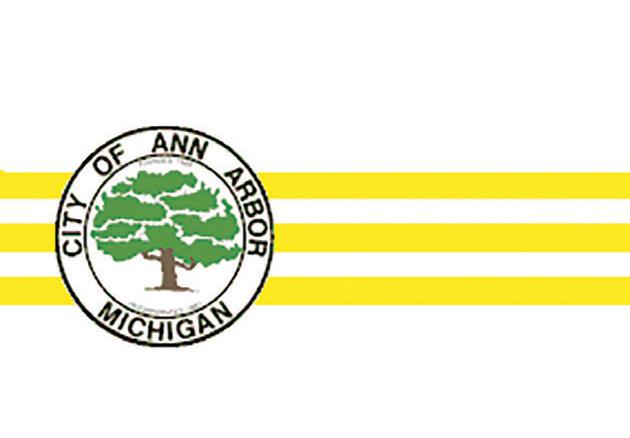
POPULATION: 123,851
NICKNAME: Tree Town
According to a Michigander we once knew, residents in that state often said: “I don’t need to go to Europe: I’ve been to Ann Arbor.” The city houses the University of Michigan with its nearly 42,000 students. Nearly half the undergrads come from other states. It also contains over 150 parks and offers paddling, canoeing, and tubing along its Huron River. Its management has moved to implement pedestrian-protective “Vision Zero” projects by, among other things, installing new sidewalk enhancements and launching a citywide e-bike program in 2023. So, while you might not confuse the city with Prague or Paris, you will find vibrant street life and lively debate there.
You’ll also find a serious reckoning with new energy supplies. Ann Arbor adopted a plan four years ago to reach net-zero carbon output by 2030 and reports annually on its progress. Steps so far include an inventory of the city’s greenhouse gas emissions, the electrification of a fifth of its light-duty trucks, and serious consideration of buying out its investor-owned utility to develop a cleaner local grid.
All this comes at a relatively sane price, too, with brainy neighbors. The city’s housing affordability scores looked gentler than our average, and it’s reckoning with turning publicly owned property into more affordable housing. It ranked highest on our list for residents’ educational attainment and above-average for median income, with strong scores for air quality. And, should you find the wanderlust and the budget to actually visit Europe, Detroit’s airport is a 30-minute drive away.



POPULATION: 675,647
NICKNAME: Beantown
Another riverside town with a huge student population, Boston (with its neighboring smaller cities) has loomed large in American urbanity since Colonial times. These days, the place residents unironically call “the Hub of the Universe” shows lower unemployment numbers than many of our cities, along with a progressive-minded mayor and a diverse City Council.
Those elected face a range of challenges, including some racial tensions and high prices, as well as the long-term infrastructure riddles of life on a harbor as sea levels rise and both storms and heat grow scarier. However, Boston’s highly educated population now has new chances to help guide the city’s future. These include a Community Engagement Cabinet in the mayor’s office that makes special outreach to residents under 35. People starting the homebuying journey can take classes through the city, and a mix of public and nonprofit providers offer programs to make housing attainable at lower incomes. Plus, the Hub’s strong links to cities around it make housing choices with short commutes more feasible than elsewhere.
For the long term, Boston has expanded its public transit network in recent years and taken its placement near the coast between the Charles and Mystic Rivers seriously. Like many cities, it commissioned a Climate Action Plan and updates it regularly. It also tracks the progress of protection projects along its 47-mile coastline on a public website. One of the nation’s oldest cities looks directly into the future.

POPULATION: 215,006
NICKNAME: Rocket City
What city gained nearly 90,000 residents since 1980? What city is home to more people than anywhere else in Alabama? Oh, it’s also a city where the median travel time to work clocks in under 20 minutes, and owner-occupancy of houses runs north of 57 %. The answer is Huntsville, a city best known for hosting NASA’s Marshall Space Flight Center, which also houses offices of global firms like Aecom and Accenture. These firms serve the technology, space, and defense industries.
We admit we were ignorant about Huntsville before we ran our numbers. However, it showed the lowest proportion of residents unable to afford a home on our 25-city longlist, along with positive job growth. Mayor Tommy Battle, on the city’s website, positions himself as a centrist with proven success in splitting infrastructure costs with the state and in recruiting software, biotech, and energy concerns to the city. Indeed, Cummings Research Park contains over 300 companies, a community college, and a 240-unit upscale apartment complex with an outdoor pool.
In our data, Huntsville scored higher than Atlanta in year-on-year job growth, with cleaner air and half the crime rate. Of course, the measures we chose begin to tell a more complex story—and Hunstville faces its own challenges, including a 14% poverty rate. An average household size of 2.2 (according to Census data) also hints at uphill times for the city’s schools. Still, this city seems proud of its business climate and attention to public space. There’s likely more about it we can learn.

POPULATION: 269,840
NICKNAME: Madtown
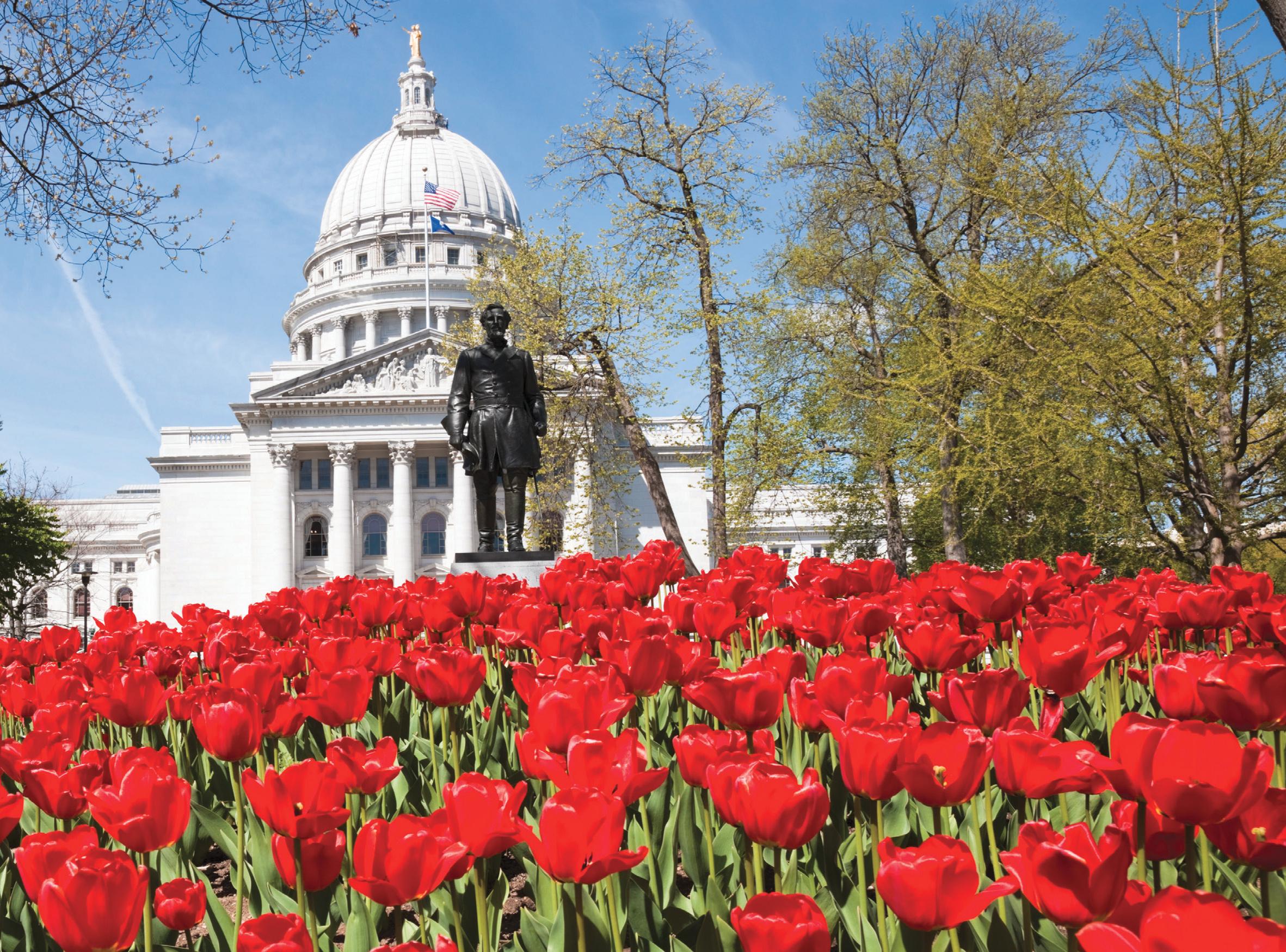
Say this for the capital of Wisconsin and the flagship of that state’s university system: its leaders want you to know what they’re up to. A deputy mayor and communications staff answered our email questionnaire with paragraphs and photos. We learned that the city created a system to deploy a contracted mental health expert with a paramedic to some nonviolent 911 calls in 2021 and that this system has answered over 5,300 calls. We learned about transit-oriented bonus overlays in new zoning covering the territory where it offers tax-increment financing and other supports to affordable housing.
And we learned that Tenney Park, on the shores of Lake Mendota, is getting a new “beachside shelter” for recreators who want a dip—perhaps after sampling some of the city’s 240 miles of trails.
If Madison’s swimming scene is new to you, maybe so is its risk of flooding as the climate crisis intensifies. The city is running at least seven projects to mitigate flooding, as well as updating residents on maintenance to keep culverts and basins clear. It’s working with the global research university within its borders to map and address places where 90-degree temperatures, currently rare in Wisconsin, will become more frequent by mid-century. And it’s announced work with partners to get air quality monitors up in several neighborhoods, for clearer signs of and faster responses to pollution overload.
Our methods showed a city with low crime, unemployment, and a highly educated population. We admit that our email correspondence sticks with us, as it shows an engaged government.


POPULATION: 689,447
NICKNAME: Music City
In 2021, before sometimes-resident Taylor Swift conquered the universe and had to relinquish parts of Nashville, the city’s boosters touted some number-crunching, setting it out as the city with more economic ascension than any other in the United States. A popular destination for bachelorette parties and home to not one but two massive music museums (three if you count the Johnny Cash Museum), Tennessee’s capital ranked among the lowest of the cities we explored for crime and unemployment.
As of early 2024, according to data from Realtor.com, the median number of days a house stays on the market is around a month, and the median listing price hovers near $575,000. That’s $200,000 more than five years ago. It includes leafy neighborhoods with trendy restaurants, trails that take you into the wilderness, leading universities, and a buzzy community of professional musicians. Something’s happening in Music City. With this growth, of course, Nashville needs to face down some Champagne problems. Yearon-year job growth has cooled, and home affordability poses a challenge. Fittingly, new mayor Freddie O’Connell emphasized pedestrian and bike improvements, transportation upgrades that include transit, and a major master-planned development process in the East Bank neighborhood. His budget proposal also seeks $18 million for public school textbooks and a 3.5% pay hike to meet living costs for government workers. Investors know all too well that an urban boom can go bust: Nashville’s focus on transit, affordability, and planned development comes in light of that risk.
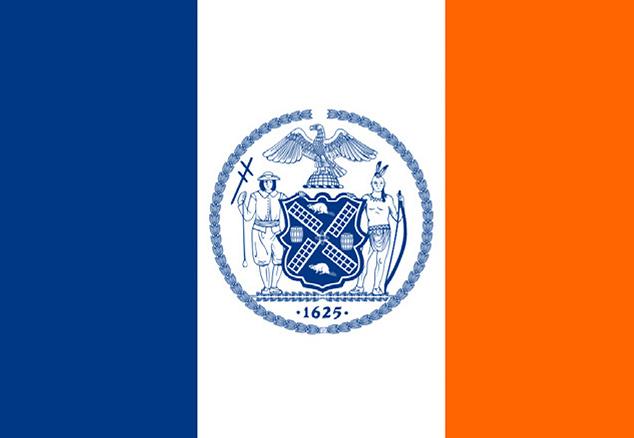
POPULATION: 8,804,190
NICKNAME: The Big Apple
Readers of Gen-X vintage will remember Blues Traveler describing the United States’ biggest city as “the best and the worst/it’s life out loud,” but on our ranking, the Big Apple comes out just as the best. New Yorkers dodge meteor-sized challenges of steep house prices, aging public works, a spot in the eye of climate chaos, and fears about crime daily. And yet.
On our rankings, New York shows lower crime rates than Denver or Myrtle Beach, better yearon-year job growth than Atlanta or Nashville, and an arguably more educated workforce than boomtowns like Boise or Charlotte. New York’s atmospherics have always involved sweaty summers and lashing storms that will worsen over time. Still, the city and state are investing billions in clean energy and long-term fortifications of the waterfront. It’s also investing in a citywide (ex-Staten Island) bike-share network with a growing share of solar-powered e-bikes.
Today, the city’s population has regained many of the residents it lost to presumptive oases during the Covid crisis, and its job growth picture has improved, according to a May release from the New York Fed. The Fed also notes that tech, education, leisure, and hospitality jobs have grown in importance. With a municipal investment in biotech and a burgeoning manufacturing scene along the East River, the notion of the city as a place for trust-fund poets and finance bros is becoming as stale as yesterday’s bagel. The price of living in New York runs steeply, with average home prices hitting $65,0000, but so does the range of possibilities.

POPULATION: 467,665
NICKNAME: City of Oaks
Raleigh dove into financing 1,875 affordable homes over the past eight years, with another 2,400 in the pipeline. It also has a policy to locate these homes in a “frequent transit area,” to encourage car-free living. A burg once known for tobacco now punches above its weight in the quality of public life. With a population of just under 500,000, Raleigh contains a comparable number of humans to San Francisco. But of those two, Raleigh includes an art gallery in a municipal building. It also offers eight pools (and supports an intra-city swim team). In an attitudinal example, it won a small but competitive grant in 2023 from the Trust for Public Land to host public sessions that aim to nurture civic action by brainstorming around parks. The city is revving the program again this year.
Public challenges include a crime rate that, on our index, looks similar to San Francisco’s, a high FEMA risk rating and an unemployment rate above what we saw in other Southeastern destinations. However, the pressure to produce new housing reflects a robust housing market where home prices look less overheated than Nashville’s or Knoxville’s. New residents will find lots to discuss— the city’s inviting residents to discuss expanding bike share downtown this summer. Raleigh seems really invested in growing.

POPULATION: 1,013,240
NICKNAME: The Capital of Silicon Valley

San Jose stands out in our methodology for a high median income, decent air quality, and strong metrics on educational attainment. But compared to that older city at the northern end of San Francisco Bay, this one shows a crime rate about half the size with about 100,000 more people. (It’s been decades since anyone back east could say that Silicon Valley had no cities.) It aims to diversify its economy, branding itself in a promotional video as “a city on the rise” that showcases urban flourishes like coffee shops and historic landmarks along with more predictable tech signifiers.
Can a newcomer easily “make a mark” in San Jose, as that video promises? It’s not cheap: per the city’s data, a homeowner must earn
over $400,000 annually to afford a “medianpriced single-family home.” If you can meet that threshold or tap into available funds and resources from nonprofits, or if you can rent, you’ll see the lifestyle the city boasts. This includes access to a bike-share network that runs the length of the Bay, and the city has started over a dozen street-improvement efforts, including a “Complete Street” to make walking and biking more pleasant.
San Jose understands the assignment when facing hot summers and rising seas. The respected nonprofit CDP ranks it on the “A-list” for inventorying and disclosing carbon emissions, and it offers rebates for home electrification. Like a startup, the city tries to balance risk with high upside.

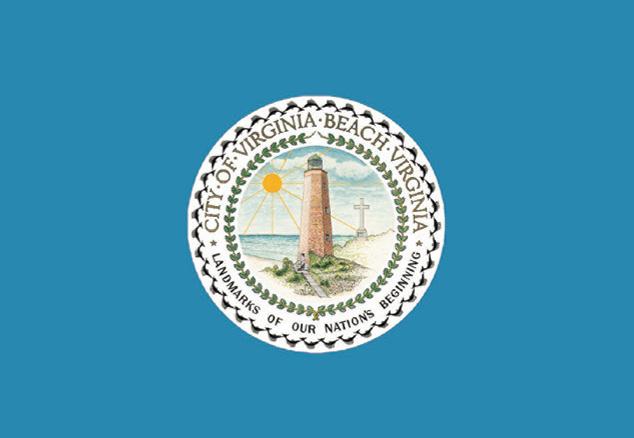
POPULATION: 459,470
NICKNAME: Neptune City
The city with the most impressive air-quality scores in our sample is Virginia Beach. It’s the largest city in the Old Dominion, reachable in 90 minutes by air from New York, and draws much of its appeal from its location on the oceanfront. and its Grommet Island Park claims to be the first entirely accessible waterfront park and playground in the nation. Tourism matters heavily to its wellbeing, but so do logistics. Analysts at local universities say that farming in the city made a nearly $200 million of local impact in 2022. It also sustains an artists’ zone beyond its boardwalk, dubbed the “ViBe Creative District,” dealing stipends to artists for murals and offering residencies and incentives like partial tax exemptions.
Would artists want to live in Virginia Beach without the beach? It’s hard to say, but the city’s identity surrounds the coast. To address coastal erosion, a “master model” has been developed to anticipate flood events, and has created a map that residents can view to sus out their own exposure. The local utility is also working through construction and financing for offshore wind installation off the city’s coast. Residents are disgruntled about the impact of offshore construction on marine life, but the utility says the project, 27 miles off the city’s coast, will proceed.

POPULATION: 689,545
NICKNAME: Capital City
No longer anything like a one-industry town, the nation’s capital picked up some 90,000 residents between 2010 and 2020. Townhouses around Capitol Hill now ask for prices in the millions. And high-rise apartment complexes, once rare apart from the Watergate, march north from the Capitol and out to the refurbished waterfront. Thanks, in part, to the land-use decisions that made data centers descend on northern Virginia, DC has become a frothy economy. Job growth looked positive from spring 2023 to 2024, with low unemployment. Of cities in our Top 10, only those in the Bay Area show a higher median income.
The District’s charms, of course, include a well-established public transit and bike-share system, theater and music robust enough for visiting diplomats, and all those free museums. Beyond the cherry blossoms, residents can use a network of small, trail-based parks. Public schools and public safety have posed challenges for many years, and some neighborhoods remain underinvested while gentrification strains others.
Still, the District—as the hub of a regional economy locals call “DMV”—shows a high level of educational attainment on the WalletHub scores we used. Its status as the locus for Big Tech’s Internet plumbing and its lobbying means a steady stream of economic activity. However tawdry or technocratic government may be, it’s one industry that seems never likely to downsize. Washington faces scorching summers and complex local politics, but it’s burgeoned so much in the past decade that it would be rash to vote too quickly against it.

Our Methodology
Unlike the cab driver who promises to know where to find killer pierogi, we present our methodology as one of several plausible approaches to looking at cities. We tried to balance reliable data about climate risk, affordability, quality of life (through air quality and crime), and educational attainment. We weighted our scores, making crime and housing affordability heftier than other metrics because they vary more than air quality across municipal borders, and they seem like gating issues for most readers considering a move.
After reviewing dozens of indices, we settled on the Federal Emergency Management Agency’s County Risk Index, the National Association of Homebuilders’ measure of housing affordability, annual job-growth data from the federal Labor Department, the Census Bureau’s area median income, an educational-attainment score from the analysts at WalletHub, ozone-alert data from the Environmental Protection Agency, and crime statistics from the FBI and local police records. We then “normalized” data to make the best record equal to one so that we could use like numbers to come up with scores. If you want to look at our data or share your own, email us at editorial@worth.com.

From test flight to final check ride, learn how to transform your dream of flying into a reality.
BY EVA CROUSE
Two thousand five hundred feet above the lush landscape of the Adirondack Mountain range in northern Massachusetts, alarms blare in the small aircraft’s cockpit as I go nose-up and stall. But there is nothing to worry about. This is just a part of basic emergency flight maneuver training. Following my instructor Rick’s, direction, I prepare to execute the important part: the recovery.
“Let the nose down, there you go, now bring the power back. Get ready to trim,” he said. “Wait, that’s it?” I ask, surprised at how easily the nose corrects, and we resume the climb. “That’s it, kid.” A giddy laugh bursts from me as the tension, induced ten minutes earlier by Rick asking if I was ready for my first stall, leaves my body. The rest of the lesson involves a verbal run-down of an emergency field landing, practicing spiral descents to said field, and other standard maneuvers, like gliding (no power) descents.
“The biggest misconception about flying is that you have to be a big strong man to do it,” Peggy Loeffler, a flight instructor at the Great Barrington Airport and seasoned pilot, told me. “A lot of
flying actually requires a very light touch,” she said, “so really, between that and the fact there is only so much room in the plane, women are quite well-suited to it.” As a child, Loeffler was desperate to fly—just like her dad—but at the time, she had no female role models in the industry and was told that the highest a woman could rise was to become a stewardess. It turns out, the glass ceiling once rose as high as 5,000 ft. So, Loeffler tabled her dream. That didn’t stick though, and she went on to earn her license in her 40s. She has been flying ever since. Today, she hopes to instill a belief in her students that anyone with the desire to fly can excel as a pilot.
Two years before my first stall, Loeffler walked me to the Piper Ar-
cher, parked on the tarmac outside the tiny airport for my intro to flight lesson. Her enthusiasm was apparent and infectious. After a very thorough pre-flight check of the plane’s external and mechanical functions, we took our seats. I was relieved to see that it looked a lot like driver’s ed—two steering wheels, two sets of pedals. I was less relieved when I realized everything was backward. Those steering wheels? Utterly useless on the ground. You steer with your feet. After some clumsy maneuvering down the runway, we lined up and got ready for takeoff. At this point, I knew exactly as much about flying a plane as Loeffler had told me in the last 30 minutes. “Okay, you’re going to do takeoff,” she said. My heart leaped into my throat as I followed her instructions through our headsets. Parking brake on, flaps lowered three notches, throttle to full power, final system checks—I nervously confirmed each instrument’s position as she read them off—a radio confirmation that sounded like another language, parking brake off, and we were moving. “Time to pull,” she said calmly into her headset over the roar of the propeller. “Pull now!” I do, and the world falls out from under us.
For some, a test flight might be a thrilling bucket list adventure that begins and ends with takeoff and landing. But for others, it can ignite a passion that leads to a lifelong hobby or even a new career. If you or someone you know is curious about learning to fly, here’s what you need to know to get started.
This introductory lesson is designed to give you a taste of flying. You’ll sit in the cockpit, follow the instructor’s commands, and get a chance to handle the controls. This experience will help you decide if flying is just a fun idea or a consistent craving you want to satisfy.

STEP
Selecting the right flight school is crucial. You can check for FAA-approved pilot school locations online, or contact your local FSDO for training providers in your area. Once you you’re your options, visit the airports, meet the instructors, and talk to current students to get a feel for the environment. Consider factors like convenience, cost, and the aircraft types they use for training. Proximity is important, as a more convenient commute will help you stay consistent with training.
Before you can take your final exam, you need to pass a medical examination to ensure you meet the health and fitness requirements set by the Federal Aviation Administration
(FAA). This exam includes vision and hearing tests and a review of your medical history. Once you pass, you’ll receive a medical certificate necessary to obtain your pilot license.
A list of AMEs in your area can be found at https://www.faa.gov/pilots/ medical_certification/.
Before you can fly solo, you will need your student pilot’s license. Your flight school will help you apply for a student pilot license—they often take care of the entire application and mail you the license. You must be at least 16 years old and fluent in English to qualify.
STEP
Flight training is divided into ground school and in-flight lessons. Ground
school covers the theoretical aspects of flying, including navigation, weather, aerodynamics, and aviation regulations. In-flight lessons focus on practical skills. You’ll need to complete at least 40 hours of flight time, though most students log around 70-80 hours before they feel ready for the exam.
STEP
You must pass the FAA knowledge test once you’ve completed your ground school training. This written exam covers all the theoretical knowledge you’ve learned, and passing it is a prerequisite for taking the practical flight test.
STEP
The final hurdle is the check ride, a practical flight test with an FAA


examiner. During this test, you’ll demonstrate your ability to handle the aircraft, perform maneuvers, and respond to emergencies. Passing this test earns you your private pilot license.
Once you have your standard pilot’s license, you can do all sorts of fun things—like getting additional certifications that reduce restrictions on your current license or allow you to fly different aircraft types. For example, earning a Multi-engine or Single-engine Sea (MES or SES) class rating enables you to fly seaplanes and perform takeoffs and landings on water. If you already hold a private pilot’s license, obtaining a seaplane rating is relatively straightforward and involves formal instruction with an authorized seaplane instructor.
The FAA doesn’t mandate a minimum number of instructional hours so that the training can be completed in as few as four hours of dual flight instruction, depending on your skill level. During this training, you’ll expand your aviation knowledge to include hydrodynamics, and you’ll learn to navigate the unique challenges of flying a seaplane—such as managing wind and water conditions,
“A lot of flying requires a very light touch,” according to Peggy Loeffler, a flight instructor at the Great Barrington Airport in Massachusetts.
mastering various water taxiing techniques, and performing takeoffs and landings on different types of water surfaces. While no written test is required, you must pass a practical test, which includes an oral exam and a check ride administered by an FAA examiner or a designated pilot examiner.
Ask any pilot why they went into aviation, and they will tell you, in essence, the same thing—flying spoke to more than their scientific, mechanical, or geographic curiosity, it spoke to their soul. Flying is more than a skill—it’s a profound exploration of freedom, independence, self-confidence, and self-discovery. Whether you’re drawn to aviation by curiosity, a bucket list goal, or a deepseated passion, a test flight is a great place to start.
A year after opening, Raffles Boston has quickly become a cultural landmark, embodying the city’s unique character.
As Raffles Boston celebrates its one-year anniversary, the hotel stands as a testament to the harmonious blend of Boston’s rich history and contemporary energy. Located in the heart of Back Bay, Raffles Boston has swiftly become a cultural landmark, offering guests an unparalleled experience deeply connected to the city’s character.
The success of Raffles Boston is not merely measured by its luxurious offerings but by the heartfelt feedback from its guests. Simon Rodrigues, the hotel’s head of sales and marketing, commented on this connection, saying, “Reflecting on our first year, the moments that have most affirmed our success in capturing the essence of Boston have come directly from our guests’ heartfelt feedback.” He continued, “Many have shared how our unique blend of timeless elegance and modern flair feels like a true reflection of Boston’s character—rich in history yet alive with contemporary energy.”
Surrounded by cultural institutions, chic boutiques, and bustling cafes, the hotel offers breathtaking views of the Charles River and the city skyline. This setting honors Boston’s traditions while embracing local creativity. “From the warm, personalized service that makes them feel at home to the local touches in our restaurants’ cuisine and design, our guests have shared that staying at Raffles Boston feels like truly being a part of the city,” Rodrigues notes.
The design of Raffles Boston reflects the hotel’s commitment to authenticity and attention to detail. The inspiration for the brownstone-style rooms, for example, emerged from walks through Boston’s historic neighborhoods. The design team was captivated by the elegance and charm of these iconic buildings. “We knew we wanted to bring that same warmth and character into our guest rooms, creating spaces that felt both refined and connected to the city’s soul,” Rodrigues shares. This thoughtful approach extends to the public spaces of the hotel as well. “Incorporating the Emerald Necklace into the design was another deeply considered decision,” Rodrigues explains. These choices were made not only to enhance the hotel’s aesthetic appeal but also to ensure that every aspect of Raffles Boston reflects the city’s essence.

Raffles Boston also distinguishes itself with its exceptional culinary offerings, bringing together some of the most talented and charismatic individuals in modern gastronomy under one roof. Overseen by Michelin-starred Chef George Mendes, the hotel’s three restaurants and bars, along with a European-style café, offer a diverse and exquisite dining experience. A highlight is La Padrona, where James Beard award-winning Chef Jody Adams crafts traditional Italian cuisine with a modern twist. Rodrigues emphasizes, “Our goal is to continue being a place where locals and visitors alike can experience the essence of Boston in a truly unique setting.”
Looking ahead, Raffles Boston is committed to deepening its relationship with the local community. The hotel plans to celebrate Boston’s rich culture and vibrant spirit through curated events and partnerships that bring more of the city’s creative energy into its spaces. Rodrigues outlines this vision: “We plan to deepen this connection by continuing to celebrate the city’s rich culture and vibrant spirit through thoughtfully curated events and partnerships.”
Beyond its cultural and culinary contributions, Raffles Boston offers a sanctuary of wellness with the Guerlain Spa, which provides a comprehensive range of treatments and amenities designed to elevate the well-being of its guests. The spa, along with the hotel’s luxurious accommodations and attentive service, ensures that guests can fully immerse themselves in an experience that is both rejuvenating and deeply connected to the city.
As Raffles Boston marks its first year, it remains a shining example of how luxury and authenticity can coexist, offering a unique and memorable experience that is both timeless and unmistakably Bostonian.



























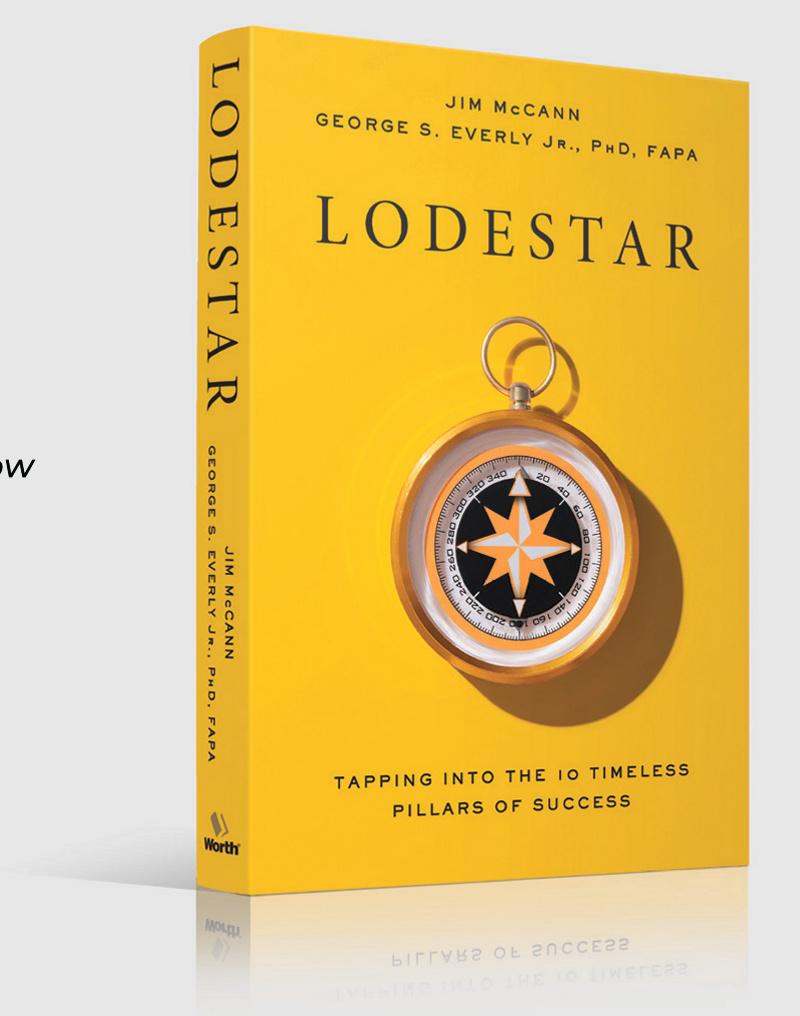





Forecast offers in-depth analyses of your most pressing financial questions, providing the latest in our economic and personal finance coverage. Bob Diamond and Larry Kantor tackle the Fed (78), predicting rate cuts before yearend. Mark Alexander dives deep into personal wealth management (82) discussing how AI will be used by your advisor. And Max Isaacson stresses the importance of understanding the structural diferences between large-cap and small-cap ETFs (84). For a look at the best advisors, check out Worth’s Leading Advisors of 2024 list (89).
U.S. economic growth has slowed while prices barely rose in May and June.
BY BOB DIAMOND AND LARRY KANTOR
The U.S. economy has normalized after four years during which the effects COVID-19, and the policy stimulus that it generated produced an extraordinary business cycle that caught most analysts off guard. The Fed is likely to keep interest rates where they are at least through the summer, but there is now a good chance for rate cuts before yearend. While underlying inflation increased around 4% through April, prices barely rose in May and June. If inflation data remain benign for another month, the first Fed rate cut in more than four years will probably arrive in September.
The drop in inflation to the Fed’s target of 2% in the second half of last year was primarily due to a sharp decline in goods prices, which came down to earth after the Covid-induced surge. Goods prices have been stable this year. Still, they are likely to start climbing in the coming months as global manufacturing is picking up and transportation costs have risen, especially in shipping. Prices in services have exhibited a very different pattern. While goods prices were falling, services prices were rising at a 4-5% pace as people made up for lost time by reengaging in previously off-limit activities such as travel and going out to restaurants and entertainment venues in large numbers. Now that goods prices have bottomed and look as if they will begin to increase in the coming months, there are signs over the past two months that service inflation is settling down. This is especially apparent in housing services such as rent—the
largest component of services inflation—as high interest rates have hammered the housing sector.
While the behavior of inflation this year has been volatile, U.S. economic growth has slowed down following the rapid 4% pace of the second half of 2023. This reflects a much less overheated labor market and the dwindling of the excess savings produced by the various Covid stimulus policies, which have been mostly drawn down. Job openings have fallen from a record 12 million to around 8 million, close to pre-pandemic levels. The ratio of job openings to the number of unemployed—a key measure of labor market tightness that had ratcheted up to 2 at one point - is now down to 1.2, within the range that prevailed before Covid. As a
result, job growth has slowed this year, the unemployment rate has increased, and unemployment insurance claims have begun to rise. Meanwhile, still-high interest rates are keeping a lid on housing and manufacturing activity. All of this has produced a slower pace of consumer and business spending.
The U.S. business cycle has normalized following the sharp swings caused by COVID-19 and the policies enacted in response. There are currently no signs of an imminent recession. While growth in payrolls has slowed from an overheated pace, it is still very solid and worker income is running at a 5% pace, more than enough to maintain consumer spending. The unemployment rate has risen by more than a half percentage point, but
at 4.1% remains historically low. Meanwhile, there has been an enormous increase in household wealth, reflecting rising prices of both stocks and homes.
Taking all of this into account, U.S. GDP will probably grow at a pace of around 2% this year. That’s well below last year’s 3.2% but consistent with what most economists consider the long-run trend. The combination of slower economic growth and recent signs of a sharp drop in inflation should allow the Fed to begin lowering its policy rate from the current range of 5 ¼-5 ½%, widely considered to be a restrictive level that puts downward pressure on the economy. The important question now is where inflation will settle. The 4%-plus pace of the first quarter and the almost total lack of price increases in May and June are both almost surely exaggerations of the underlying trend. The Fed has a target of 2%, and that objective was regularly achieved between the financial crisis and the onset of Covid. However, several of the factors that kept inflation below 2%—such as increasingly free trade and justin-time inventories—are now moving in the opposite direction. Tariffs and trade restrictions are the order of the day, and firms are maintaining higher levels of inventories in the wake of the Covid-induced shortages. Businesses are also diversifying their supply chains and considering geopolitical risk instead of only cost in deciding where to produce
$24,000
$20,000
$16,000
Source: FRED
and source inputs. There’s also a push to produce at home. All of this suggests a somewhat higher rate of inflation—and thus interest rates—than we experienced in the decade or so before Covid.
Inflation is unlikely to spin out of control, as it did during the 70s and early 80s. Global trade volumes are still much higher than they were then and improvements in technology—with investment now focused on AI—should continue to enhance productivity and provide an offset. But inflation and interest rates should average higher levels than they did following the financial crisis, when the Fed’s policy rate averaged around 1%. The U.S. economy has demonstrated that it can handle policy rates much higher than that.
While it is difficult to forecast inflation with any degree of precision, a rate between 3 and 4% seems like a reasonable range for it to settle. While that is above the Fed’s 2% target it will cut rates if inflation is relatively stable and the economy grows at only a modest pace. As long as the economy doesn’t rebound once the Fed begins to cut rates—which is a possibility—the Fed will likely bring its policy rate down to 4% or less over the next year and a half. With somewhat higher inflation and significantly more outstanding federal debt, 10-year U.S. Treasury yields are likely to range from 4 to 5%, considerably higher than the 1 ½-3% that prevailed for a decade before Covid.
“Inflation and interest rates should average higher levels than they did following the financial crisis, when the Fed’s policy rate averaged around 1%.

AI is finding its place in private wealth management but won’t replace the human connection.
BY MARK ALEXANDER
The era of generative AI is just beginning, with palpable excitement and promising early pilots—but challenges as well. As AI evolves, rapid developments in natural language processing, data analytics, and machine learning pose likely disruptions for financial services but also great opportunities for firms and advisors able to adjust to radical change. Likely winners will be firms with strategic foresight, modern technology stacks, and strong execution capabilities.
According to Norton Rose Fulbright, 76% of leading financial services firms are already using AI or planning to do so within the next few years. They recognize it as a powerful new ingredient in success. But like any ingredient, AI must be used responsibly, as an additive rather than a substitute.
Among potential benefits are improved productivity, superpersonalized client experiences, rapid identification of patterns and trends, enhanced decisionmaking, reduced variability in service levels, and improved risk management. Another will be time savings; an Accenture study estimated that AI could automate 30% of advisor tasks, which can give them more time to focus on client service and satisfaction, as well as practice development.
Some predict clients will increasingly opt to self-serve, relying solely on automated messages spit out by faceless AI chatbots. Questions arise: Will machines replace humans? Will it be considered “oldfashioned” to have a real person offering guidance? How will the client experience change?
In my view as head of technology & operations at Rockefeller Capital Management, AI will augment, not replace, the advisor-client relationship, and human touch will continue to play a central role in serving wealthier clients. They will be best served by a private advisor as the hub in a larger wheel of expertise, planning resources, and technological support. Built on algorithms, AI can never fully represent the human emotions— empathy, instinct, and creativity— that are part of making decisions.
One consequence of technological advancement is that clients are already “drinking from a firehose,” with massive amounts of information at their fingertips. In today’s fast-moving world, a combination of AI-generated insights and guidance from a professional financial advisor will help those with complex lives and investment portfolios to narrow the stream.
There are abundant opportunities to equip all advisors, regardless of their individual areas of expertise, with access to a broad range of consistent, high-quality
insights. Private advisors will be able to leverage AI and deliver customized financial solutions, whiteglove service, and uncompromising objectivity and integrity.
Certain AI use cases like portfolio optimization and risk management are nothing new for advisors. The technology already exists in some form, but deep learning and generative AI models will catalyze analytics and reporting. AI algorithms and large language models can analyze huge sets of historical market data, risk factors, and economic indicators to optimize investment portfolios far more efficiently and accurately than classical machine learning and more traditional models—making a new level of hyperpersonalization possible. Advisors can use AI models to analyze each client’s financial goals, risk tolerance, and investment preferences combined with market data and the available suite of advisor and firm services to provide tailored financial plans, recommendations, and actionable insights.
“AI can assist in managing investment risks and ensuring supervisory and regulatory compliance by automating portfolio risk assessments, supervision routines, and compliance monitoring. This enables advisors to make more informed decisions in implementing riskmitigation strategies. ”
AI can assist in managing investment risks and ensuring supervisory and regulatory compliance by automating portfolio risk assessments, supervision routines, and compliance monitoring. This enables advisors to make more informed decisions in implementing risk-mitigation strategies. AI-powered systems can also help financial institutions stay up to date with evolving regulatory requirements and streamline manual oversight tasks.
While there is much AI can accomplish, the human element is the bedrock of successful relationships with high-net-worth and ultra-highnet-worth clients. Private advisors play an invaluable role in helping clients comprehend what they are seeing, consider alternatives, and make rational decisions. No “robo advisor” can truly know a client’s unique wants, needs, and circumstances. No robo advisor can “read” the excitement and optimism or fear and anxiety in a client’s face, voice, or body language. It’s hard to imagine what the response would be to, “Hey Siri, make me feel better about this investment.”
Relationships matter. Consider the birth of a new child into a client’s family. An algorithm can calculate how a portfolio should be altered to prepare for college and estate planning, but can it send a handwritten note that will resonate with the client? It’s difficult, in our view, to “replicate” sincerity.
The emotional elements of trust, openness, and the human touch will remain essential to the forming and building of long-term client relationships. What we can expect is the exciting opportunity to augment those elements with AI technology, with the promise of an even brighter future in wealth management. We will be able to serve our clients more effectively and holistically than ever. The key will be to hold firmly to our place in the client equation.
Even in the same sector, exposure in small cap can vary from big cap.
BY MAX ISAACSON
When it comes to investing in the financial sector, not all exchangetraded funds (ETFs) are created equal. In a landscape where interest rates and economic forecasts can shift in an instant, the differences between a large-cap fund and its small-cap counterpart could mean the difference between a thriving portfolio and a missed opportunity. As savvy investors know, the devil is in the details, and understanding the nuances of your chosen ETF could be the key to navigating today’s turbulent financial waters. So, what’s really in your funds? And more importantly, are they set to deliver the returns you expect? Let’s dive in and uncover the crucial distinctions that could shape your financial future.
The financial sector generally profits from higher rates. One of the ways that companies in the sector benefit is by increasing their price for lending money; this helps banks, by enabling them to charge higher interest rates on the loans they make. Higher rates enable insurance companies to receive more money on their investments; they sell insurance policies and buy bonds and other securities from their premiums. Many institutions also think rates will stay high. At the International Monetary Fund’s (IMF) outlook update in April, Pierre-Olivier Gourinchas, an IMF Director, said that advanced economies may find a disinflation path bumpy. He reported, “This could force central banks, including the Federal Reserve, to keep borrowing costs higher for even longer that would put overall growth at risk, with increased upward pressure on the dollar and harmful spillovers to emerging and developing economies.”
Higher for longer could help the financial sector perform. In assessing choices, an investor could also consider cap size because different sizes will produce different results.
An actively traded security in the bigcap financial sector is The Financial Select Sector SPDR Fund ETF (symbol:
XLF); it can be compared with the small-cap Invesco S&P SmallCap Financials ETF (symbol: PSCF).
Yahoo! Finance charts show that over the 5-year period ending July 26, 2024, XLF is up 51.20% while PSCF is up only 0.68%. XLF is up 28.60% over the last 2 years, and PSCF is up 4.29%. Over the last year, XLF has risen 22.65% while PSCF has risen 19.52%. Why the vast differences?
One reason probably concerns PSCF containing regional banks, which have been underperforming for about two years. Currently, 51% of PSCF’s holdings are in banks, insurance, and financial services companies. Fifty-eight percent of XLF’s portfolio is in banks and financial services companies, which is a similar profile but different in specific ways.
For instance, the bank holdings in XLF include JP Morgan Chase, Visa, Mastercard, Bank of America, Wells Fargo, and other major companies whose operations are conducted worldwide. A partial list of the banks in PSCF includes Comerica, Bank United, Bank of Hawaii, First Financial Bancorp, and Pacific Premier Bancorp, which are hardly household names; also, they operate only in the U.S.
Over the last 3 months (as of August 6, 2024), regional banks have performed much better, helping the SPDR S&P
Regional Banking ETF (Symbol: KRE) and PSCF to outperform XLF. Will this outperformance continue? A lot of that depends on interest rates. And a drop in interest rates could help the regional banks and boost other parts of the small-cap financial sector.
An article written by Susan A. Curry and Ryan P. Lentell at Manulife Investment Management points out that regional banks have a promising future as the rate outlook changes and that the important aspect of future interest rates is that the “Fed is unlikely to return to a near-zero rate policy again in the near term.”
XLF and PSCF are reasonably valued. According to State Street Global Advisors, the estimated earnings per share growth over the next 3-5 years for XLF is 14.34%; its price/earnings ratio is 16.62%, translating into price/ earnings to growth ratio (PEG) of 1.15, which is reasonable. Using the longterm earnings estimates of PSCF on Morningstar, PSCF is selling at a PEG ratio of 1.39, quite reasonable also.
The ETFs are unlike each other in other ways. XLF’s portfolio is comprised of 16.34% of companies involved in the insurance industry, while PSCF’s portfolio has 8.94% of insurance companies. This could help make XLF more sensitive to interest rate changes than PSCF. Insurance companies could increase sales with higher-interestpaying products and receive higher interest on the income securities in their portfolios.
As Jennifer Johnson and Michele Wong wrote in their report for NAIC, “Corporate bond yields have increased significantly since the beginning of 2022 with rising interest rates; at current levels, this should generally allow U.S. insurers to reinvest proceeds of maturing corporate bond investments at greater yields than those rolling off.”
Another variation between the two ETFs that could affect market prices is that 31% of PSCF’s portfolio is made up of Real Estate Investment Trusts (REIT) and real estate companies. XLF contains no REITs. REITs have been under pressure from the collapse in commercial property values due to the
Covid 2022 and 2023 shutdowns, the subsequent spike in higher interest rates, and the higher for longer Fed action and outlook.
Nick Kalivas, head of factor and core products at Invesco, said that PSCFs’ biggest exposure is to regional banks. The portfolio also has about a 30% exposure to REITs.
He told Worth that generalizing about PSCF REITs is difficult because the ones in their portfolio are in so many different industries. “In there are some health care REITs, some retail REITs, some mortgage REITs, some office REITs, hotel companies.”
He said basically PSCF holds “a diverse portfolio of small-cap financials with regional banks being your biggest proportion.”
Kalivas said PSCF’s performance will be mostly influenced by the economy’s credit trends. Performance will be stronger when credit conditions are favorable, meaning when credit spreads are narrow.
“The Fed is doing the Taylor Rule, which looks at where inflation is, what the target inflation rate is that the Fed is looking for, and where the unemployment rate is.” The Taylor Rule advocates that the Federal Reserve System (the Fed) should raise interest rates in high inflation periods and lower rates when the gross domestic product declines.
Each stock market and bond market index uses its unique way of calculating inclusion into its index. The specifics of the size range for inclusion and exclusion can be found in its index informational material.
According to Investopedia, companies are put into small-cap ETFs when their capitalizations are about $250 million to $2 billion. To determine market capitalization, multiply the number of a company’s outstanding shares by its stock market price. As a company grows, it may increase its outstanding shares, and its stock price could go up, resulting in a larger
$0.44 $0.24
$5.74
$3.97
$0.04
$0.04
$1.11
$0.07
$0.03
$1.07
$0.2 $0.09
Source:
market capitalization. Companies are removed from small-cap indexes and ETFs when their capitalization grows to about $ 2 billion. A small-cap company might then go into a mid-cap index fund or ETF. Mid-cap size is generally recognized as between $2 billion to $10 billion, and large-cap companies are about $10 billion and bigger.
Concentration does not happen in the small-cap or mid-cap indexes. Concentration occurs when one company or sector accounts for a percentage of the total index that is too large. For example, in the big-cap S&P 500 Index there is a concentration situation: according to Yahoo! Finance, the top 10 companies comprise 34.65 % of the portfolio. This is not the case in the S&P small-cap IJR ETF, which has the top 10 companies comprising only 7.32% of the portfolio.
So, when a company or sector grows into the big-cap space, there can be concentration. But many investors want concentration, want momentum in stocks and sectors.
Howard Silverblatt, senior analyst at Standard & Poor’s, says that concentration is a big deal when strategizing and that “Whenever you’re dealing with small cap, mid-cap indexes, passive, non-passive, you have to realize that the concentration is technically different. Look at the S&P 500, the top ten companies are over 30% of the index. You don’t get that concentration on several issues, especially in the small caps.”
ETFs make investing easier, but understanding their unique structural differences improves your chances of success.

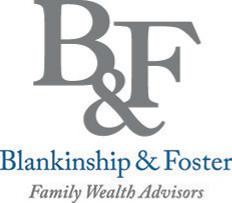
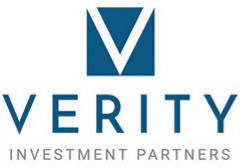

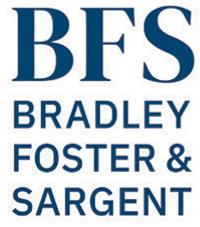


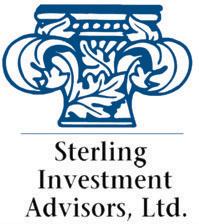
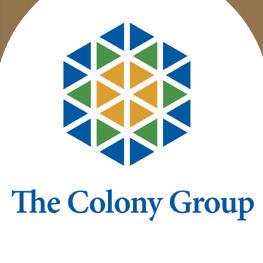




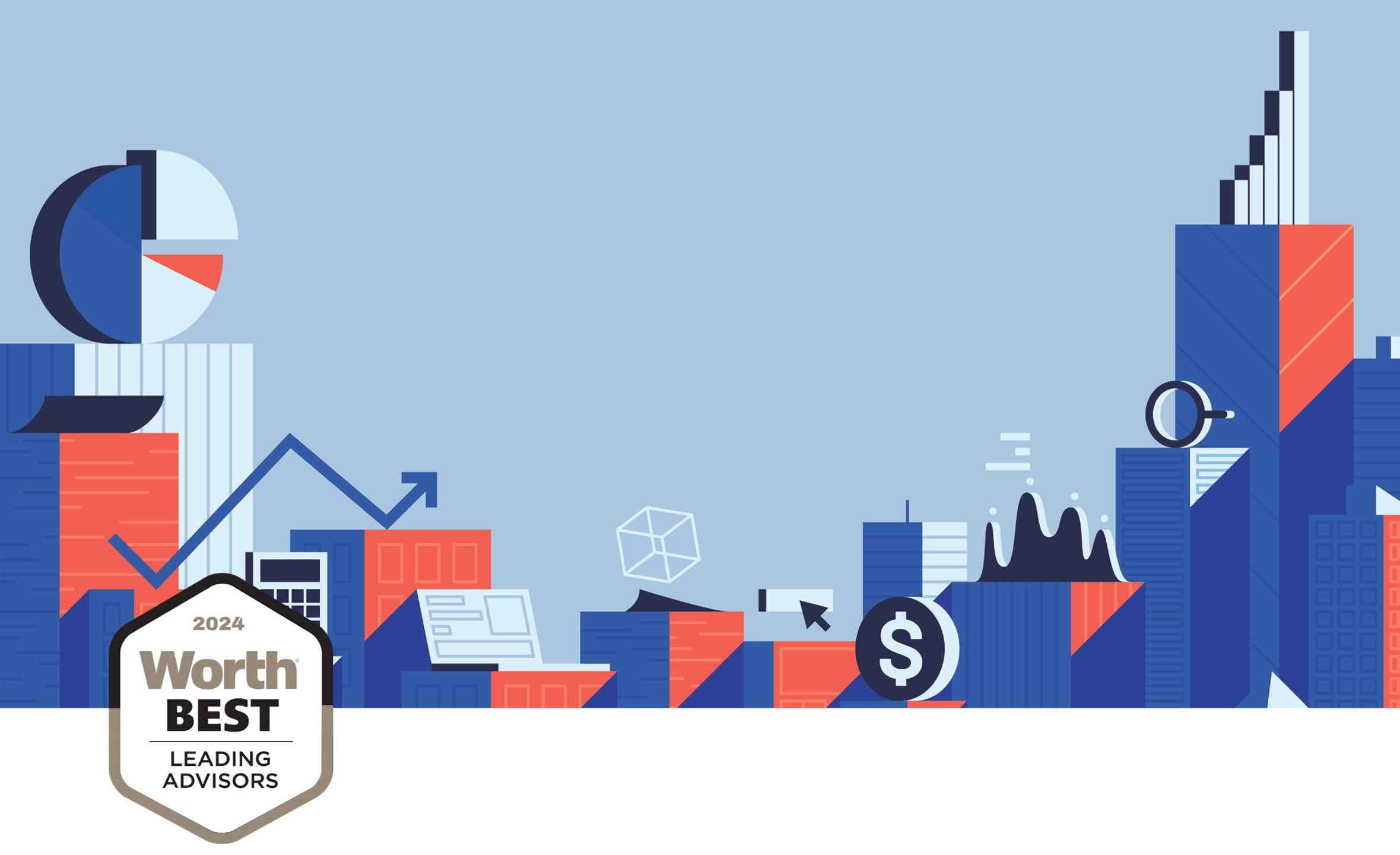
In an era of dynamic shifts in financial landscapes and the increasing intricacy of personal wealth management, Worth magazine understands the necessity for guidance that anticipates the needs of the affluent. The Leading Advisors program, which has been recognizing top-tier wealth management firms since its establishment in 2002, relaunched in 2024 with a fresh, data-driven focus. This reinvigoration is more than just a renewal of commitment; it’s a direct response to the evolving demands of our readers searching for reliable and insightful financial stewardship.
The genesis of the Leading Advisor program was to spotlight the prowess and integrity of independent Registered Investment Advisor (RIA) firms that stand out in a crowded marketplace. However, as the financial world has grown in complexity, so too have the concerns of our readers. High-net-worth individuals face various challenges, from navigating volatile markets to planning for intergenerational wealth transfer, requiring sophisticated and personalized advice.
The program aims to address today’s turbulent financial environment by providing a curated list of advisors who are leaders in their field and pioneers in adapting to market changes and the evolving needs of affluent clients. Working with our partners at ISS Market Intelligence, Worth’s editorial staff evaluated more than 41,000 RIAs and financial advisors in the United States and identified the top 300 firms.
The core value of the Leading Advisor program lies in its rigorous selection process and the credibility it bestows upon listed advisors. Each firm featured has successfully cleared stringent benchmarks:
n Assets Under Management (AUM) of Over $500 Million: Demonstrates substantial experience and trust in handling significant wealth.
n Predominantly High-Net-Worth Clients: Shows specialized expertise in managing the complex financial situations typical of wealthier clients.
n Substantial Planning Clientele: Indicates a focus on comprehensive financial planning rather than simple asset management.
n Independence from Broker-Dealers: Ensures advice is unbiased and purely client-centric.
These criteria spotlight firms that manage wealth and craft tailored strategies considering the broader financial picture. Thus, they enhance our readers’ ability to make informed choices about who manages their wealth.
At Worth, our commitment extends far beyond the mere presentation of data. The Leading Advisor program is constructed on a bedrock of editorial integrity and independence, devoid of any influence from the firms we evaluate. This independence is pivotal in upholding our readers’ trust and ensures that our listings genuinely reflect merit and excellence in wealth management.
Our methodology is transparent and comprehensive, ensuring that the advisors we feature are among the industry’s best. We believe in the importance of not just
Abacus Planning Group, Inc. Columbia, SC
Abbrea Capital, LLC Greenbrae, CA
Aberdeen Wealth Management, LLC Lake Bluff, IL
Accredited Investors Wealth Management Minneapolis, MN
Acropolis Investment Management, LLC Chesterfield, MO
Adero Partners, LLC Pleasanton, CA
Agili, PC Richmond, VA
Alesco Advisors, LLC Pittsford, NY
Align Impact, LLC Santa Monica, CA
Allworth Financial, LP Folsom, CA
AlphaCore Capital, LLC La Jolla, CA
Altfest Personal Wealth Management New York, NY
Andersen McLean, VA
Argos Capital Partners, LLC Saint Louis, MO
Arlington Partners, LLC Birmingham, AL
Armstrong, Fleming & Moore, Inc. Washington, DC
Aspen Capital Management Boise, ID
Asset Management Group, Inc. Stamford, CT
Atlas Capital Advisors, Inc. San Francisco, CA
Atwood & Palmer, Inc. Kansas City, MO
Austin Asset Austin, TX
Autumn Lane Advisors, LLC Houston, TX
Avidian Wealth Solutions, LLC Houston, TX
Avion Wealth Spring, TX
Bahl & Gaynor Inc Cincinnati, OH
growth but growth by design. This means that our featured firms are actively enhancing their capabilities and offerings to serve their clients better, not merely growing their assets under management by riding market trends.
The of the Leading Advisor program affirms Worth’s dedication to excellence in financial journalism and our commitment to serving as a vital resource for the high-networth community. Worth is more than a magazine; it’s a platform where the best in the business converge to discuss, innovate, and shape the future of wealth management.
We will update The Leading Advisor list annually as new company data is released.
To learn more about the list or license the Leading Advisor logo email Kevin Haniffy at Kevin.Haniffy@Worth.com.
Bailard, Inc. San Mateo, CA
Baker Street Advisors, LLC San Francisco, CA
Balentine Atlanta, GA
Ballentine Partners Waltham, MA
Bartlett & Co. Wealth Management, LLC Cincinnati, OH
Bason Asset Management Denver, CO
BBR Partners, LLC New York, NY
Beacon Pointe Advisors, LLC Newport Beach, CA
Beaird Harris Dallas, TX
Bedel Financial Consulting, Inc. Indianapolis, IN
Biltmore Family Office, LLC Charlotte, NC
BIP Wealth, LLC Atlanta, GA
Black Coral Financial Advisors, LLC Budd Lake, NJ

Blankinship & Foster, LLC Solana Beach, CA www bfadvisors com (858) 755-5166
Bleakley Financial Group, LLC Fairfield, NJ
BlueSky Wealth Advisors, LLC New Bern, NC
Bordeaux Wealth Advisors Menlo Park, CA
Boston Financial Management, LLC Boston, MA
Boston Research and Management, Inc. Manchester, MA

Bradley, Foster & Sargent, Inc. Hartford, CT www bfsinvest com (860) 527-8050
Brandywine Oak Private Wealth, LLC Kennett Square, PA
Breeds Hill Capital LLC Charlestown, MA
Bridgewater Advisors, Inc. New York, NY
Brighton Jones, LLC Seattle, WA
Brown Advisory Norfolk, VA
Bryn Mawr Capital Management, LLC Philadelphia, PA
BSW Wealth Partners Boulder, CO
Burton Enright Welch, Walnut Creek, CA
Cabot Wealth Management Salem, MA
Callan Capital, LLC La Jolla, CA
Campbell Wealth Management, Inc. Alexandria,VA
Canal Capital Management, LLC Richmond, VA
Capital Counsel, LLC New York, NY
Capstone Financial Advisors, Inc. Downers Grove, IL
Carret Asset Management, LLC
New York, NY
Cerity Partners, LLC New York, NY
Certuity, LLC North Palm Beach, FL
Chatham Wealth Management Chatham, NJ
Chequers Financial Management, LLC San Francisco, CA
Chevy Chase Trust Company Bethesda, MD
Choreo, LLC Minneapolis, MN
Circle Advisers, Inc. New York, NY
Circle Wealth Management, LLC Summit, NJ
Clayton Financial Group, LLC Saint Louis, MO
Clearstead, Hartland & Co., LLC Cleveland, OH
CMH Wealth Management, LLC Portsmouth, NH
Coastal Bridge Advisors Westport, CT
CoastEdge Partners, LLC La Jolla, CA
Colony Family Offices, LLC Charlotte, NC
Conservest Capital Advisors, Inc. Wynnewood, PA
Constellation Wealth Advisors Cincinnati, OH
Coons Advisors Columbus, OH
Corda Investment Management, LLC Houston, TX
Corient Newport Beach, CA
Covenant Partners, LLC Nashville, TN
Creative Capital Management Investments, LLC San Diego, CA
Creative Planning Leawood, KS
Crescent Grove Advisors Lake Forest, IL
Crestone Asset Management LLC Boulder, CO
Crestwood Advisors Boston, MA
Crewe Advisors Salt Lake City, UT
Dearborn Partners, LLC Chicago, IL
Diversified Management, Inc. Milwaukee, WI
Douglas C. Lane & Associates New York, NY
Maslow Wealth Advisors Austin, TX
Edelman Financial Engines Santa Clara, CA
Edge Capital Group, LLC Atlanta, GA
Ehrenkranz Partners, LP New York, NY
Embree Financial Group Chicago, IL
Empirical Wealth Management Seattle, WA
Ensemble Capital Management, LLC San Francisco, CA
Envoi, LLC Minneapolis, MN
Evensky & Katz, LLC Miami, FL
Evergreen Capital Management, LLC Bellevue, WA
Evermay Wealth Management, LLC Arlington, VA
Exchange Capital Management, Inc. Ann Arbor, MI
F L Putnam Investment Management Co Wellesley Hills, MA
FBB Capital Partners Bethesda, MD

Ferguson Wellman Capital Management, Inc. Portland, OR fergusonwellman.com (800) 327-5765
Fi3 Financial Advisors, LLC Indianapolis, IN
Fiduciary Wealth Partners, LLC Boston, MA

Fielder Capital Group Nashville, TN fieldercapital.com 212-918-4844
Financial Advisory Corporation Grand Rapids, MI
Financial Solutions Advisory Group Chicago, IL
Firestone Capital Management, Inc. Miami, FL
Fort Point Capital Partners, LLC San Francisco, CA
Foster & Motley, Inc. Cincinnati, OH
Frank, Rimerman Advisors, LLC Palo Alto, CA
Franklin, Parlapiano, Turner & Welch, LLC Houston, TX
Freestone Capital Management, LLC Seattle, WA
FRG Family Wealth Advisors Bellevue, WA
Fulcrum Capital, LLC Seattle, WA
Full Sail Capital, LLC Oklahoma City, OK
Garde Capital, Inc. Seattle, WA
Geller Advisors, LLC New York, NY
Geometric Wealth Advisors, LLC Washington, DC
GHP Investment Advisors, Inc. Denver, CO
Gilman Hill Asset Management, LLC New Canaan, CT
Glassman Wealth Services, LLC Vienna, VA
Godsey & Gibb Wealth Management Richmond, VA
Goodman Financial Corporation Houston, TX
Grand Wealth Management, LLC Grand Rapids, MI
Granite Group Advisors, LLC Stanford, CT
Gratus Capital, LLC Atlanta, GA
Graypoint, LLC Albany, NY
Greenwich Wealth Management, LLC Greenwich, CT
Gresham Partners, LLC Chicago, IL
Grey Street Capital, LLC Chicago, IL
GSG Advisors, LLC Mount Laurel, NJ
Guyasuta Investment Advisors, Inc. Pittsburgh, PA
Hall Capital Partners, LLC San Francisco, CA
Hamilton Point Investment Advisors, LLC Chapel Hill, NC
Haymarket Wealth Management, LLC Madison, NJ
HeadInvest Portland, ME
Heritage Financial Services Westwood, MA
Heritage Wealth Advisors Richmond, VA
HighTower Advisors, LLC Chicago, IL
Hollow Brook Wealth Management, LLC Katonah, NY
Householder Group Estate & Retirement Specialists Scottsdale, AZ
Howard Financial Services, Ltd. Dallas, TX
HTG Investment Advisors, Inc. New Canaan, CT
Innovia Wealth, LLC Grand Rapids, MI
ISTO Advisors, LLC Troy, MI
IWP Wealth Management, LLC Denver, CO
Jackson, Grant Investment Advisers, Inc. Stamford, CT
JFG Wealth Management, LLC Denver, CO
JMG Financial Group, Ltd.
Downers Grove, IL
Joel Isaacson & Co., LLC New York, NY
Johnson Financial Group, LLC Denver, CO
Johnson Wealth, Inc. Milwaukee, WI
Jordan Park Group, LLC San Francisco, CA
Klingenstein Fields Advisors New York, NY
Klingman and Associates, LLC New York, NY
Kovitz Investment Group Partners, LLC Chicago, IL
Legacy Advisors, LLC Plymouth Meeting, PA
Lido Los Angeles, CA
Lifecycle Financial Planners, Inc. Bloomfield Hills, MI
Lindbrook Capital, LLC Calabasas, CA
Linscomb & Williams Houston, TX
LNW Seattle, WA
Lodestar Private Asset Management, LLC Alamo, CA
Loring, Wolcott & Coolidge Fiduciary Advisors, LLP Boston, MA
LVM Capital Management, Ltd. Portage, MI
Lyell Wealth Management, LP Menlo Park, CA
Main Street Research, LLC Sausalito, CA
Maple Capital Management, Inc. Montpelier, VT
McRae Capital Management, Inc. Morristown, NJ
McShane Partners Charlotte, NC
Meridian Wealth Advisors, LLC Austin, TX
Meritas Wealth Management, LLC Larkspur, CA
Mill Creek Capital Advisors, LLC Conshohocken, PA
MIO Partners, Inc. New York, NY
Modera Wealth Management, LLC Westwood, NJ
Moneta Group Investment Advisors, LLC Saint Louis, MO
Monograph Wealth Advisors, LLC El Segundo, CA
Morton Wealth Agoura Hills, CA
Moss Adams Wealth Advisors, LLC Seattle, WA
Mount Yale Investment Advisors, LLC Denver, CO
Mozaic, LLC Beverly Hills, CA
myCIO Wealth Partners, LLC Philadelphia, PA
NavPoint Financial, Inc. Prior Lake, MN
New England Private Wealth Advisors, LLC Wellesley Hills, MA
NorthRock Partners, LLC Minneapolis, MN
NorthStar Asset Management, Inc. Boston, MA
NPF Investment Advisors Grand Rapids, MI
O’Brien Wealth Partners, LLC Waltham, MA
Oxford Financial Group, Ltd. Carmel, IN
Paragon Advisors, Inc. Beachwood, OH
Parkside Advisors, LLC Berkeley, CA
Pathstone Englewood, NJ
Paul Comstock Partners Houston, TX
PDS Planning, Inc. Dublin, OH
Peak Asset Management, LLC Louisville, CO
Pennington Partners & Co., LLC Bethesda, MD
Perennial New York, NY
Personal CFO Solutions, LLC Chester, NJ
Pin Oak Investment Advisors, Inc. Houston, TX
Pine Valley Investments Marlton, NJ
PrairieView Partners, LLC Saint Paul, MN
Private Advisor Group, LLC Morristown, NJ
Private Capital Management, LLC Denver, CO
Proffitt & Goodson, Inc. Knoxville, TN
Prowell Financial Management, LLC Exton, PA
Punch & Associates Investment Management, Inc. Minneapolis, MN
QuadCap Wealth Management, LLC Frisco, TX
Rappaport Reiches Capital Management Skokie, IL
Relative Value Partners, LLC Northbrook, IL
Reynders, McVeigh Capital Management, LLC Boston, MA
Riverview Capital Advisers Boston, MA
Roble, Belko and Company, Inc. Sewickley, PA
Roffman Miller Associates, Inc. Philadelphia, PA
Rossmore Private Capital, LLC Glastonbury, CT
Roundview Capital, LLC Princeton, NJ
RTD Financial Advisors, Inc. Philadelphia, PA
RZH Advisors, LLC Stamford, CT
Sage Financial Group, Inc. Conshohocken, PA
Sand Hill Global Advisors, LLC Palo Alto, CA
Sargent Investment Group Bethesda, MD
Satovsky Asset Management, LLC New York, NY
SBK Financial, Inc. Richmond, VA
Schaper Benz & Wise Investment Counsel, Inc. Neenah, WI
Schechter Investment Advisors, LLC Birmingham, MI
Sensible Financial Planning and Management, LLC Waltham, MA
Sequent Asset Management, LLC Houston, TX
Seven Bridges Advisors, LLC New York, NY
Seven Post Investment Office, LP San Francisco, CA
Shade Tree Advisors, LLC Saratoga Springs, NY
Sigma Investment Counselors Northville, MI
Signature Estate & Investment Advisors
Los Angeles, CA seia com (310) 712-2323

SignatureFD, LLC Atlanta, GA
Silicon Valley Capital Partners, LP San Jose,CA
Silvercrest Asset Management Group, LLC New York, NY
SilverOak Wealth Management, LLC Minneapolis, MN
Simon Quick Advisors, LLC Morristown, NJ
Single Point Partners Boston, MA
SlateStone Wealth, LLC Jupiter, FL
Socius Family Office, LLC Fort Lauderdale, FL
Southeast Asset Advisors, LLC Thomasville, GA
St. Clair Advisors, LLC Cleveland, OH
Stack Financial Management, Inc. Whitefish, MT
Stage Harbor Financial Needham Heights, MA
Stansberry Asset Management, LLC New York, NY
Disclaimer
Steigerwald, Gordon & Koch - Wealth Advisors Leesburg, VA

Sterling Investment Advisors, Ltd. Berwyn, PA sterling-advisors com (610) 560-0400

Stone Point Wealth, LLC Miami, FL stonepointwealth com (786) 540-0323
Strata Wealth Advisors, LLC Dallas, TX
Strategic Wealth Partners Deerfield, IL
Strategic Wealth Partners, Ltd. Independence ,OH
Summit Financial Strategies, Inc. Columbus, OH
Summit Rock Advisors, LP New York, NY
Syverson Strege West Des Moines, IA

Tanglewood Total Wealth Management, Inc. Houston, TX tanglewoodwealth.com (713) 840-8880
The Arkansas Financial Group, Inc. Little Rock, AR
The Clarius Group, LLC Seattle, WA

The Colony Group, LLC Boston, MA thecolonygroup.com (617) 723-8200
The Fairman Group, LLC Wayne, PA
The Financial Advisory Group, LLC Houston, TX
The Investment Counsel Company Las Vegas, NV
The Mather Group, LLC Chicago, IL
Three Bell Capital, LLC San Francisco, CA
Tiller Private Wealth, Inc. Bethlehem, PA
Tobias Financial Advisors Fort Lauderdale, FL
Tolleson Private Wealth Management Dallas, TX
Tortoise Investment Management, LLC West Harrison, NY
Total Wealth Planning, LLC Cincinnati, OH
Tower Bridge Advisors Conshohocken, PA
True North Advisors, LLC Dallas, TX
Valeo Financial Advisors, LLC Carmel, IN
Venturi Private Wealth Austin, TX
Veratis Advisors, Inc. Cary, NC
Veris Wealth Partners, LLC San Francisco, CA

Verity Investment Partners Beaufort, SC verityvip.com 843-379-6661
Wade Financial Advisory, Inc. Campbell, CA
Waldron Private Wealth Bridgeville, PA
Wallington Asset Management Indianapolis, IN
Warner Financial, Inc. Bethesda, MD
Warwick Partners Bryan, TX
Waters, Parkerson & Co., LLC New Orleans, LA
Waypoint Capital Advisors, LLC Minneapolis, MN
Waypoint Wealth Counsel, LLC Atlanta, GA
Waypoint Wealth Partners Mill Valley, CA
Wealth Architects, LLC Mountain View, CA

Wealthspire Advisors Westport, CT wealthspire.com 212-973-1200
Wealthstream Advisors, Inc. New York, NY
Welch & Forbes, LLC Boston, MA
Wellspring Financial Advisors, LLC Cleveland, OH
Wescott Financial Advisory Group, LLC Philadelphia, PA
West Financial Advisors, LLC Des Moines, IA
Westmount Asset Management, LLC Los Angeles, CA
Wharton Business Group, LLC Malvern, PA
Whitney & Company Rochester, NY
Windsor Advisory Group, LLC Columbus, OH
Woodmont Investment Counsel, LLC Nashville, TN
Zuckerman Investment Group Chicago, IL
ZWJ Investment Counsel, Inc. Atlanta, GA
Worth magazine is a publisher and does not recommend or endorse investment, legal, insurance, or tax advisors. The listing of any firm in the 2024 Worth Leading Advisors Program is conducted by our editorial team (at times in partnership with certain research organizations) and does not constitute a recommendation or endorsement by Worth magazine of any such firm and is not based upon Worth magazine’s experience with, or prior dealings with, any advisor. The information presented for each firm and/or advisor, including but not limited to any related profile, statistical data, presentation, report, commentary, recommendation, or strategy, has been provided by such advisor and/or third party data sources without independent verification by Worth magazine. Any such information is the sole responsibility of the advisor and/or third party data sources. Worth magazine makes no representation or warranty as to the accuracy or completeness of such information, assumes no liability for any inaccuracies or omissions therein, and disclaims responsibility for the suitability of any particular investment recommendation or strategy for any person. Nothing contained in Worth magazine constitutes or should be construed as any form of investment, legal, insurance, or tax advice or as a recommendation to buy, sell, hold, or trade any securities, financial instruments, or assets. Readers are advised to consult their legal, financial, insurance, and tax advisors prior to making any investment or pursuing any investment strategy. Past, model, or hypothetical performance is not indicative of future results.
BY BRIAN D. HOLMES, MS, CFP ®, AIF ® PRESIDENT, CEO
The Tax Cuts and Jobs Act (TCJA) of 2017 brought significant changes to the tax code, many of which are set to expire after 2025 unless extended by Congress. As this pivotal year approaches, understanding the implications of these expiring provisions is crucial for effective tax planning and maximizing tax savings. The estate tax exemption, which is currently more than $13 million per individual, will be reset in 2026 to $5 million per individual (adjusted for inflation), posing potential tax liabilities for high-net-worth individuals. Along with other tax changes, taxpayers must prepare for a possible increase in income tax rates and changes to deductions and credits.
Potential Strategies to Mitigate Impact:
1. Set Up Trusts:
n Spousal Lifetime Access Trust (SLAT): Allows one spouse to gift assets into an irrevocable trust for the other spouse’s benefit, providing access to income and principal distributions while removing assets from the grantor spouse’s taxable estate.
n Irrevocable Life Insurance Trust (ILIT): Provides life insurance proceeds to beneficiaries outside of the insured’s estate, funded when premium payments are made through the irrevocable trust and considered gifts to the beneficiaries.
THE ADVISOR
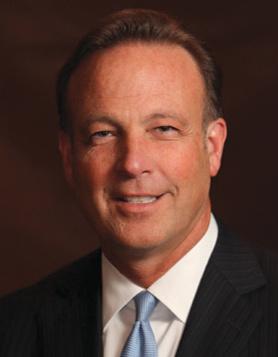
n Irrevocable Trust for Children and Descendants: Allows individuals to gift money outside their estate for someone else’s benefit. This trust generally cannot be modified, amended, or revoked except in specific situations with beneficiaries’ consent or a court order.
2. Review Charitable Giving Strategies:
n Charitable Remainder Trust (CRT): This irrevocable trust provides income for the beneficiary (which may include the grantor or their heirs) for a specific period before assets are distributed to charitable beneficiaries.
n Charitable Lead Trust (CLT): Unlike a CRT, a CLT provides income to charitable beneficiaries first for a set period then the remaining assets to non-charitable beneficiaries.
n Specific Charitable Bequests: Leaves a precise amount or percentage of assets to charity at death, excluding it from the taxable estate.
n Qualified Charitable Distributions (QCD): Allows individuals over 70½ to give up to $100,000/year directly from an IRA to charity, lowering their taxable estate.
n Foundation or Donor-Advised Fund (DAF): Allows ongoing charitable giving with potential tax benefits.
3. Maximize Annual Gifting:
n For 2024, individuals may give up to $18,000 per year to an unlimited number of recipients without tax implications. Married couples can double this amount, allowing significant asset transfers out of their taxable estate.
4. Make Direct Payments for Education and Medical Costs:
n Paying education and medical costs directly to institutions can reduce a taxable estate without affecting the annual gift exclusion. For example, a married couple could cover a grandchild’s tuition and still gift the grandchild $36,000 tax-free.
Beyond these strategies, individuals might also consider delaying deductible expenses until higher tax rates apply in 2026, recognizing more income before 2026 to benefit from lower rates, or gifting assets before 2026 to utilize higher exemption levels.
As the TCJA’s provisions sunset, proactive tax planning before 2026 is essential. Understanding these changes and implementing strategies can mitigate potential tax liabilities and maximize financial benefits.
$22.3 Billion in assets managed by SEIA and its affiliates as of 6/30/2024
Brian D. Holmes, MS, CFP®, AIF® is the President and CEO of SEIA and one of its four founding partners. With over 35 years in the investment management business, he leads a successful independent private practice with his team, serving over 300 clients. Brian is a past member of the Schwab Institutional Advisory Board and served on the UCLA Department of Economics Board of Visitors to enhance the curriculum of the Business Economics major. He has been retained by many notable clients, executive groups, corporations, and universities for lectures, including guest lectures at UCLA’s undergraduate Economics and Investments classes. He is involved with numerous charities in the Southern California area and has lived in Malibu, California since 1987 with his family. Brian holds a Bachelor of Arts in Psychology with a Business Administration emphasis from UCLA and a Master of Science in Financial Planning from the College of Financial Planning. He became a CERTIFIED FINANCIAL PLANNERTM practitioner in 1988 and earned the Accredited Investment Fiduciary® (AIF®) designation in 2011. He is also a licensed insurance agent (CA Insurance License #0657377).
Disclaimer: SEIA is not engaged in rendering legal, accounting, or tax services. We recommend that all investors seek out the services of competent professionals in any of the aforementioned areas. The reported Assets Under Management (AUM) represents the combined total of Signature Estate & Investment Advisors, LLC (SEIA) and its affiliated entities as of 6/30/2024. AUM includes portfolios continuously supervised or managed by SEIA and its affiliates. The AUM encompasses assets like stocks, bonds, ETFs, mutual funds, and cash, among others. For more details on the professional designations listed above, including description, minimum requirements, and ongoing education requirements, please contact (310) 712-2323 or visit seia.com/disclosures. SEIA is an SEC-registered investment adviser; however, such registration does not imply a certain level of skill or training and no inference to the contrary should be made. Securities offered through Signature Estate Securities, LLC, member FINRA/SIPC. Investment advisory services offered through SEIA, 2121 Avenue of the Stars, Suite 1600, Los Angeles, CA 90067, (310) 712-2323.

Mark Shrier examines the transformative potential of AI in refining investment strategies (96). Meanwhile, Sophie Purdom of CTVC stresses the urgent need for increased investment in climate tech, cautioning against the dire consequences of insufficient funding (98).
Dr. Deepak Chopra and CEO Poonacha Machaiah explain the Chopra Foundation’s mission to achieve global peace, justice, and sustainability.
BY JOSH KAMPEL
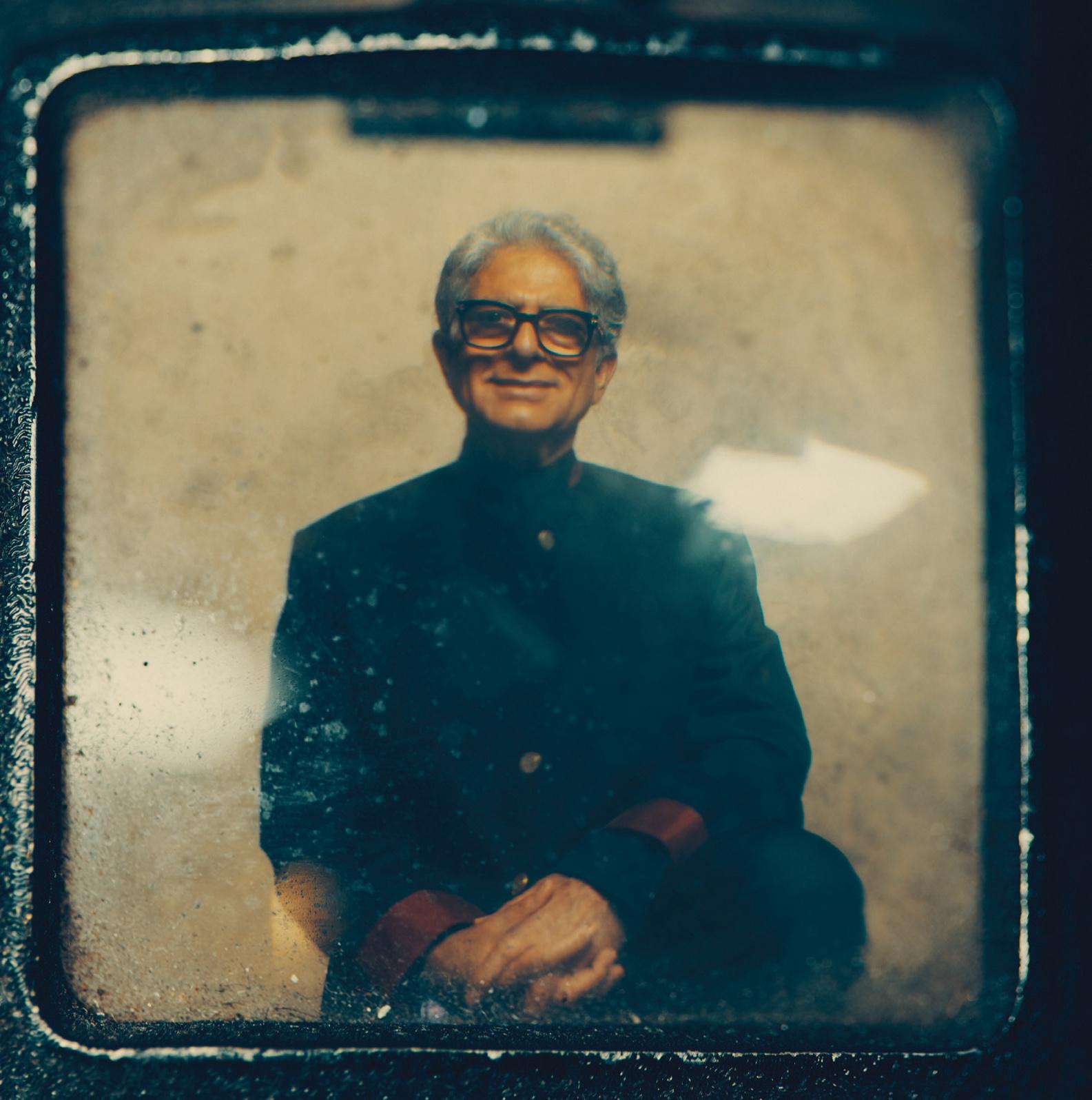
In an age where rapid technological advancements are both a boon and a challenge, the Chopra Foundation is a beacon of hope and wisdom. The Foundation, founded by Dr. Deepak Chopra, a globally recognized physician and author, fosters a more peaceful, just, sustainable, and joyful world. Its mission resonates deeply in today’s complex global landscape, where leaders grapple with unprecedented challenges.
Dr. Deepak Chopra’s journey to establish the Chopra Foundation began with a vision that has evolved over the years. Initially, he founded the Alliance for a New Humanity, which brought together influential figures from various sectors, including the United Nations and Nobel Prize laureates, to reach a critical mass of consciousness. However, due to the international nature of the organization and the challenges of fundraising for such a broad vision, the Alliance did not survive. Undeterred, Dr. Chopra took the core mission of the Alliance and embedded it into the Chopra Foundation.
“The vision was to reach a critical mass of consciousness for a more peaceful, just, sustainable, healthier, and joyful world,” Dr. Chopra explains. “These words were chosen very carefully because right now, that’s the crisis in the world—peace, justice, sustainability, health, and joy. They’re all interconnected, and there are solutions to everything.”
The Foundation’s goals are ambitious but crucial. Dr. Chopra emphasizes that the world is facing a convergence of crises, from social and economic injustice to climate change and mental health pandemics. Yet, he remains optimistic, asserting that science offers solutions to these problems—solutions the Foundation is determined to pursue and promote.
One of the Chopra Foundation’s core initiatives is the Soul of Leadership program. Initially taught by Dr. Chopra at prestigious institutions such as the Kellogg School of Management and Columbia Business School, this program is vital to the Foundation’s efforts to cultivate the next generation of leaders.
“We’re training young people, particularly Gen Z, for the future of leadership globally,” Dr. Chopra notes. “Leadership became a very important part of our mission, as did mental well-being and conflict resolution.”
The Soul of Leadership program emphasizes traditional leadership skills and the integration of emotional and spiritual intelligence. Dr. Chopra believes true leadership involves looking beyond short-term gains and focusing on long-term sustainability and human well-being. In today’s rapidly evolving world, where artificial intelligence (AI) and other technological innovations are transforming industries, this holistic approach to leadership is more important than ever.
Another cornerstone of the Chopra Foundation’s work is the Sages and Scientists symposium, which brings together thought leaders from diverse fields to discuss the future of wellbeing. The symposium is a unique platform where the worlds of science, technology, and spirituality intersect, fostering conversations critical for addressing our time’s challenges. This approach ensures that the insights gained at the symposium translate into real-world impact, furthering the Foundation’s mission to create a more sustainable and just global society.
Poonacha Machaiah, CEO of the Chopra Foundation, explains the significance of this event: “Post-pandemic, everything has gone online, but there’s a need for us to connect in person. We’re super connected but
very lonely. The goal is to create epicenters where people can come together and then take it online.”
The upcoming Sages and Scientists Symposium, set to take place at Harvard’s iconic Sanders Theatre, will focus on a range of topics from mental health and longevity to the ethical implications of AI and the future of humanity in the cosmos. Machaiah highlights the importance of creating a community where attendees can connect and engage in meaningful dialogue.
“We want to create intimacy and community with the right knowledge, education, and awareness,” he says. “Our goal is not just to have a one-off event but to create ongoing engagement to track participants’ journey throughout the year.”
As AI continues revolutionizing various aspects of life, its integration into the Foundation’s work is inevitable. Dr. Chopra’s forthcoming book, “Digital Dharma: How to Use AI to Enhance Personal Well-being and Elevate Spiritual Intelligence,” explores the potential of AI to impact human consciousness and well-being positively.
“I use AI for four things: as a personal confidant for reflection, as a health coach, as a research assistant, and as a spiritual guide,” Dr. Chopra explains. “AI gives me access to all the luminaries from Plato to Socrates to the sages of Buddha. This is going to leapfrog our evolution as a human species into territory that is unimaginable.”
While AI can potentially be a force for good, Dr. Chopra acknowledges the risks associated with its misuse. He stresses the need for ethical considerations in AI development and the importance of balancing technological intelligence with emotional and spiritual intelligence.
“Today, every engineer, every programmer who touches a line of code has a responsibility.”
“Any technology can be misused. But if we evolve our emotional and spiritual intelligence to keep up with our technological intelligence, we have the wherewithal to create that vision of peace, justice, sustainability, health, and joy for the whole world.”
The ethical use of technology is a recurring theme in the Foundation’s work. Both Dr. Chopra and Machaiah emphasize the responsibility that comes with technological innovation, particularly in fields like AI, where the implications for society are profound.
Machaiah reflects on his early days as an AI programmer and the importance of ethical considerations in technology. “When a physician becomes a doctor, they take an oath, the Hippocratic Oath. But how come software engineers don’t take an oath? Today, every engineer, every programmer who touches a line of code has a responsibility.”
This sense of responsibility extends to the Foundation’s vision for the future. Through initiatives like Sages and Scientists and the Soul of Leadership, the Chopra Foundation fosters innovation and ensures that ethical principles and a commitment to the greater good guide this innovation.
As the Chopra Foundation continues its work, it focuses on creating a better world through leadership, innovation, and community. The Foundation’s initiatives are designed to inspire and empower individuals to lead with intelligence, harnessing both human and artificial capabilities to drive positive change.
“We want to see centers of excellence where community service and bonding happen to solve the big issues of our time locally, regionally, and globally,” Dr. Chopra concludes. “That’s the vision.”
The author of Welcome to AI: A Human Guide to Artificial Intelligence discusses ethics, leadership, and AI.
BY DAN COSTA
Few voices in technology resonate as clearly and powerfully as David Shrier’s. As AI redefines the boundaries of what’s possible in business, leadership, and society, Shrier is guiding global enterprises and governments through the intricate challenges and unprecedented opportunities this new era presents. His work, steeped in academic rigor and practical application, has made him a leader in AI and innovation.

In his latest book, Shrier, the Managing Director of Visionary Future LLC and a Professor of Practice at Imperial College London offers a compelling exploration of AI’s transformative impact on leadership. As we delve into the themes of his latest research, we’ll discuss the industries poised for disruption, the critical skills needed in an AI-driven world, and the ethical frameworks that must guide this technological revolution. Shrier’s insights are particularly pertinent as we approach Techonomy 24: Leading with Intelligence , where Shrier will speak on November 18th, about the ins-and-outs of navigating an AI-enhanced future. (Tickets are available at https://worth.com/ event/techonomy-24/)
Join us as we explore Shrier’s vision for a world where AI doesn’t just automate tasks but elevates human potential, creating a more equitable and innovative society. His perspective is not just about keeping pace with change—it’s about leading it.
This year’s Techonomy conference theme is “Leading with Intelligence.” Ideally, we have always strived for that, but how will AI change those old leadership models?
The new generations of AI offer us the opportunity to unlock new horizons of capability for human intelligence and
democratize access to technology in ways we’ve never had before. This will create the potential for a fundamental restructuring of the design of organizations, the nature of work, and ultimately the construction of society.
Almost all automation technologies have resulted in job losses. What industries do you think will be hit the hardest?
Visionary Future collaborated extensively with Evercore on this, and the top industries likely to be impacted are high technology, financial services, management, consulting, and law. I discuss this in more detail in my new book.
Your book Welcome to AI: A Human Guide to Artificial Intelligence discusses the necessity of reskilling workers for the AI age. What are the most critical skills that professionals should focus on developing to remain relevant?
Emotional intelligence and creativity are human skills that are difficult to replace with AI. The other critical skills professionals need to develop relate to cognitive flexibility and the ability to learn. The pace of change is accelerating, so we will need to learn new skills and gain knowledge every few months.
This requires retraining our brains to acquire information faster. In the book, I lay out the five principles of cognitive flexibility that you can begin to apply.
What should governments and businesses do to ensure AI leads to job creation rather than destruction?
Job creation, for its own sake, is not necessarily healthy. The question is how we can amplify human prosperity, which may require rethinking how we structure so-
ciety. For example, do we introduce universal basic income or some other kind of social safety net? If we can be massively more productive with AI requiring the work of fewer people, how should we spend that labor dividend?
That said, it is absolutely true that people who know how to use AI will replace people who do not. So, it’s important that we raise overall AI literacy.
You’ve mentioned that China is investing heavily in AI research and education. Is the U.S. trying to deny that country access to the most advanced chip technologies? Is that a wise policy? Is it working?
The US is actively trying to limit China’s access to advanced technologies, and it is working to a degree. However, the US is still heavily dependent on manufacturing in Taiwan, which is a geopolitical risk factor that will become more significant in the coming years. Diversifying the source of advanced AI chips is definitely a smart move.
However China is putting its own limits on artificial intelligence for other reasons. For example, models that have more than 5% of politically objectionable content are prohibited. This creates the risk that China generative AI systems will always be less intelligent than free-market AI, because of this limitation.
Your lectures discuss AI’s potential to transform the business environment positively. How AI can create a more beneficial society, particularly regarding ethical leadership?
We may see the potential to use AI systems to promote greater fairness and better compliance and translate ethics into tactical action. If we harness AI properly, we can
also use it to help people collaborate better and create an overall more positive business environment.
You have also written about the importance of addressing climate change. How can AI help address that? At the moment, it is simply driving up energy usage.
AI is definitely a big problem right now concerning energy consumption and carbon. There’s also a significant amount of water usage in the cooling systems, each query consumes one bottle of water. But new AI systems can help with climate remediation, including taking carbon directly out of industrial emissions. We have the potential to use AI to solve the problems of AI.
What do you think is the biggest misconception about the AI revolution?
The biggest misconception about AI is the belief in perfection: if we replace something a person does, it must be replaced by something perfect. People are not perfect. If an AI is significantly better than a person at something but not perfect, we should embrace that. For example, autonomous cars. We would save 1 million lives annually if we adopted autonomous cars everywhere However, people jump on the errors and accidents in the AI systems and attribute a higher expectation of machine systems than they do other people.
What surprised you most about how this technology has rolled out?
I had expected the adoption to be slower than it has been. I’ve been playing around with artificial intelligence since 1991, and I’ve watched people resist successive waves of improvement for several decades. The speed with which Generative AI took off has been nothing short of stunning.
Despite the slow of overall investments, first of their kind deals continue to see action from major investors.
BY ALEXIS BUNCICH
While climate initiatives take high priority in policy initiatives, climate tech investments are being carefully evaluated before action is taken. Investors remain cautious of how the future will affect present investments, and despite large-scale climate unicorns like Cruise and Goodleap, each with valuations over $10 billion, investors are slow to provide capital for climate tech.
In early July, Sightline Climate’s data-driven platform and newsletter, CTVC, released its report for 1H 2024, providing a comprehensive snapshot into the current state of climate tech investing. The platform tracks investment trends, deal activity, and the performance of climate tech companies, offering detailed reports and analysis to help investors, startups, and other stakeholders understand the landscape of climate technology financing.
Overall, CTVC found that climate tech venture and growth investment, totaling $11.3 billion, was down 20% compared to 1H 2023. Although investment was down from the year prior, 1H 2024 added an 8% increase in funding overall, bringing the total investment to $156 billion despite recent slowdowns..
In the first half of 2024, climate tech attempted to make a return from a challenging 2023. Investors continued their wait-and-see strategy, holding out for more certainty before funding. This caused many investment areas to decline, but it may not be entirely indicative of the future forecast of climate tech.
The wait-and-see trend continued through 1H 24, reaching early-stage ventures. Seed and Series A activity declined, along with the already-
declining later-stage activity. Climate tech venture and growth investment came to $11.3 billion in 1H 24, down 20% from 1H 2023. However, there’s been an overall decline in VC action in 1H, so the trend may not be exclusive to climate tech. Some causes of the slowdown include: sticky inflation, high interest rates, and geopolitical disorder.
Although investment activity declined, investors seem to be taking action carefully, rather than fully pausing it, signifying more cautious and secure investments. At earlier stages (Seed, Series A, and Series B), round sizes were larger than in 2022 and 2023, when the market was finding its footing after the 2021-2022 climate tech mania. But due diligence may not be the only factor contributing to the slowdown—founders are also moving from equity to project finance and debt to fund their work.
Sophie Purdom, co-founder of CTVC, says this shift isn’t entirely unexpected.
“If we’re being honest, we’ve all already felt this coming — but now the data is definitive. The H1’2024 climate tech funding market has fallen back to 2020 levels. Nothing’s particularly new, though. Since the peak of Q3’21 madness, the climate tech market has been consistently constricting,” Purdom said.
Seed and Series A investment was down 11% on average, and deal activity dropped 30% for Seed and 23% for Series A. Although the total deal count declined, deal size went up. Seed and Series A both saw increases of 21% and 16%, respectively.
Purdom emphasized that the broader venture market has seen similar trends, noting, “What’s actually novel is that the downtick in funding & deals has finally reached the early stages, and that former darling companies have officially shuttered. We’re seeing a reversion to healthy levels of venture and growth funding with fewer, larger rounds of financing from equity investors. At the end of the day investing in climate tech should and must be driven by financial returns, not ethics.”
Series B investments saw changes in timing and scale backs. While it’s already challenging to raise a Series B, climate tech companies now take longer to reach the milestone. Compared to 2021, it took about double the amount of time to raise Series B funding in 1H. CTVC reports that many companies are getting stuck at this funding stage. In light of this obstacle, bridge rounds are common—with the new investor expectations, companies are looking to gain time to prove themselves for the next series of funding.
Purdom noted that the 2021-2022 market mania was influenced by a zero interest rate phenomenon (ZIRP) belief.
“[The belief is] many of these climate challenges need to be solved, so therefore these spaces should be big markets and the technologies could be billion dollar businesses,” Purdom said.
Purdom emphasized that this belief is different from the reality of bottoms up pricing and market sizing. Along with a quiet IPO landscape, exits have also become slower and fewer, slowing growth funding. Over time, this shifts to affect earlier and earlier stages.
Each climate tech vertical defined by CTVC (transportation, energy, food & land use, industry, climate management, built environment, and carbon) was down in 1H 24, with an average drop of 24% across all verticals.
Vertical priorities also shifted during the first half of 2024, with energy investments overtaking transportation for the top spot. More specifically, those investments were focused on hydrogen, energy storage, EV charging, and alternative proteins. Overall, both energy and transportation remain major investment areas, with eight out of 10 1H deals coming from the two dominant verticals.
Overall, deal activity decreased, with 26% fewer deals compared to the peak of 1H 23. However, when deals were signed, they were significantly larger than last year’s, averaging 21% bigger.
First of their kind (or FOAK) deals made significant strides in the first half of the year. These deals notably support the first commercial-scale projects of their kind, utilizing new processes or technologies to do so. Some of the companies that raised capital include: H2 Green Steel (a green steelmaking company), Fervo (a heat harnessing energy company), and Ascend Elements (a battery recycling company).
Swedish startup H2 Green Steel reached $5.2 billion in growth funding from investors like the European
Union, Microsoft, and Siemens. They intend to continue construction on the world’s first commercial-scale green street project in Sweden, with debt, equity funding, and grant support from the EU Innovation Fund.
Geothermal company Fervo reached $244 million in corporate strategic funding, led by Devon Energy, a shale oil and gas company. They intend to build a commercial project pipeline to support their first commercial-scale project in southwestern Utah.
Battery recycling company Ascend Elements reached $162m in their Series D funding, with notable investors including IRONGREY and Just Climate. They intend to construct a commercial-scale sustainable cathode precursor (pCAM) manufacturing facility, which will be the first of its kind in North America, allowing for domestic lithium battery recycling. According to Purdom, the popularity of FOAK is due in part to the need to bridge the Valley of Death from innovation to deployment. Additional factors include customer demand and willingness to pay for the output and signing agreements with fixed prices and volumes ahead of time, which puts investors at ease.”
When it comes to late-stage funding and growth investment, deals have declined 21% from 1H 23, but companies aren’t relying on venture funding. They’re varying their capital raises to explore equity, debt, and loan. For example, 2H Green Steel paired a $372 million equity raise with a $4.5 billion debt raise.
In this stage, investors are looking for security, such as concrete proof of commercialization and ARR goals. Growth investment fell 33% and Series C remained stagnant, with deal counts down for both—on average, declining 11% from 2023.
Purdom said, “I’ll be the first to say that the strongest climate tech companies leverage the full climate capital stack—beyond just venture capital. Many of the most notable deals from the last six months came from companies graduating from equity to project finance and debt in the race to deploy, deploy, deploy.”
Rising challenges caused some prolific companies to file for bankruptcy in 1H 2024. Lack of demand presented obstacles for new tech, such as the hydrogenfueled regional plane engineered by Universal Hydrogen. Despite the successful launch of their plane, the company had to shutter doors after failing to drive customers. Instead, the aviation industry has shown interest in sustainable aviation fuels (SAFs), such as those produced by World Energy and Neste.
Purdom noted that in the months to come, we’re likely to see the decline of tourist investors, as well as a slowing of deployment urgency by climate specialist funds. As companies founded during the climate tech renaissance of 2018-2019 approach the Series B Valley of Death, they’ll be waiting on investors to complete lengthy due diligence processes.
Purdom commented, “Growth investment and deals have also dropped precipitously. Late-stage funds are holding on to record levels of dry powder, while holding out for more concrete proof of commercialization and ARR goals.”
“In this stage, investors are looking for security, such as concrete proof of commercialization and ARR goals.”
Although 1H has revealed a decline in investments, it’s typical for 1H to be quieter than 2H. In 2H, it’s possible we’ll see a renewed focus on climate investments. Some determining factors at play include the upcoming U.S. presidential election, the tough current macroeconomic fundraising environment, and potential AI advancements.
In today’s market, watch collecting is becoming a lucrative and competitive business—here’s how to navigate the market and get the best value for your timepieces.
BY CAIT BAZEMORE
For years, building a watch collection was a long-term commitment. Each purchase was approached as an investment that would likely turn into a family heirloom—once you bought a watch, it would usually stay in your collection and be passed on. The notion of selling and trading timepieces within your collection wasn’t as commonplace. Just 25 years ago, the dotcom bubble was bursting, and the options to sell or trade watches safely and securely were few and far between. There was eBay, which lacked any of the authentication processes in place today, and there were brick and mortar retailers who could help you to sell or trade in your watch to a small local audience. However, there was nothing compared to the vast number of reputable online marketplaces available today that allow collectors to take the practice of selling and trading in their own hands.
Watch collecting has changed dramatically in the past decade with the evolution of both online platforms and the secondary market. According to EveryWatch, an AI-powered platform offering comprehensive luxury watch sales data and analytics, preowned watch sales hit $24 billion in 2023. This makes up approximately one-third of the retail value for all luxury watch sales for the year, which clocked in around $75 billion. With the massive growth of the secondary market, particularly in the past five years, selling and trading watches has become a lucrative and competitive business for many collectors. Just like selling and trading within the stock
market, you want to have a grasp on the current supply and demand.
While today’s market offers numerous outlets to sell and trade your watches, it’s still crucial that collectors educate themselves on the latest trends and platforms to get the most value for their timepieces. Watchfinder, one of the premier resources for buying, selling, and trading pre-owned luxury watches, has used its sales data to produce such trend reports, which show some key insights. For instance, materials beyond stainless steel are increasingly in demand, from classic precious metals like gold to more contemporary alternatives like ceramic. Watchfinder also notes the “50-year rule,” marking the rising popularity of watches from the 1970s and even 1980s.
Thankfully, with the evolution of the secondary market, there are more and more resources like EveryWatch and WatchFinder available to collectors to educate themselves and make smarter decisions when selling and trading their watches. Here, we sat down with five experts in the field—including executives at EveryWatch and Watchfinder—to share their thoughts on the most important things for collectors to know when selling and trading their watches and some key trends in the secondhand market.
When it comes to the most imperative element to consider when buying in the secondary market, the consensus is that condition is king. “The rarity, the desirability of a specific configuration, box, and papers, all those things pale in comparison to the condition,” shares Linden Lazarus, founder of the Los Angeles-based vintage and preowned resale site Oliver & Clarke. “If you’re buying the best example, it will always be desirable—there’s always a buyer for a watch in truly exceptional condition, sometimes even above market.” That said, preserving the condition of your watch is key to retaining its value if you plan to sell or trade.
Research is another vital component when selling or trading your timepieces, particularly when choosing the platform where you plan to sell or trade your watch. According to Lazarus, you have to buy the seller.
“It’s important to look at the cohesiveness of a store, whether that be brick and mortar or online,” he explains.
“For instance, if I’m new at selling and trading, I want to find a store with a specialty, so to speak. If someone sells a lot of vintage Rolex, perhaps that’s not the right place to sell a Cartier, even if they’re a very reputable seller. Or, for example, if a platform primarily sells sub $10,000 watches, you probably don’t want to sell a $150,000 watch with them—again, they may be highly respected but not the right outlet for you.”
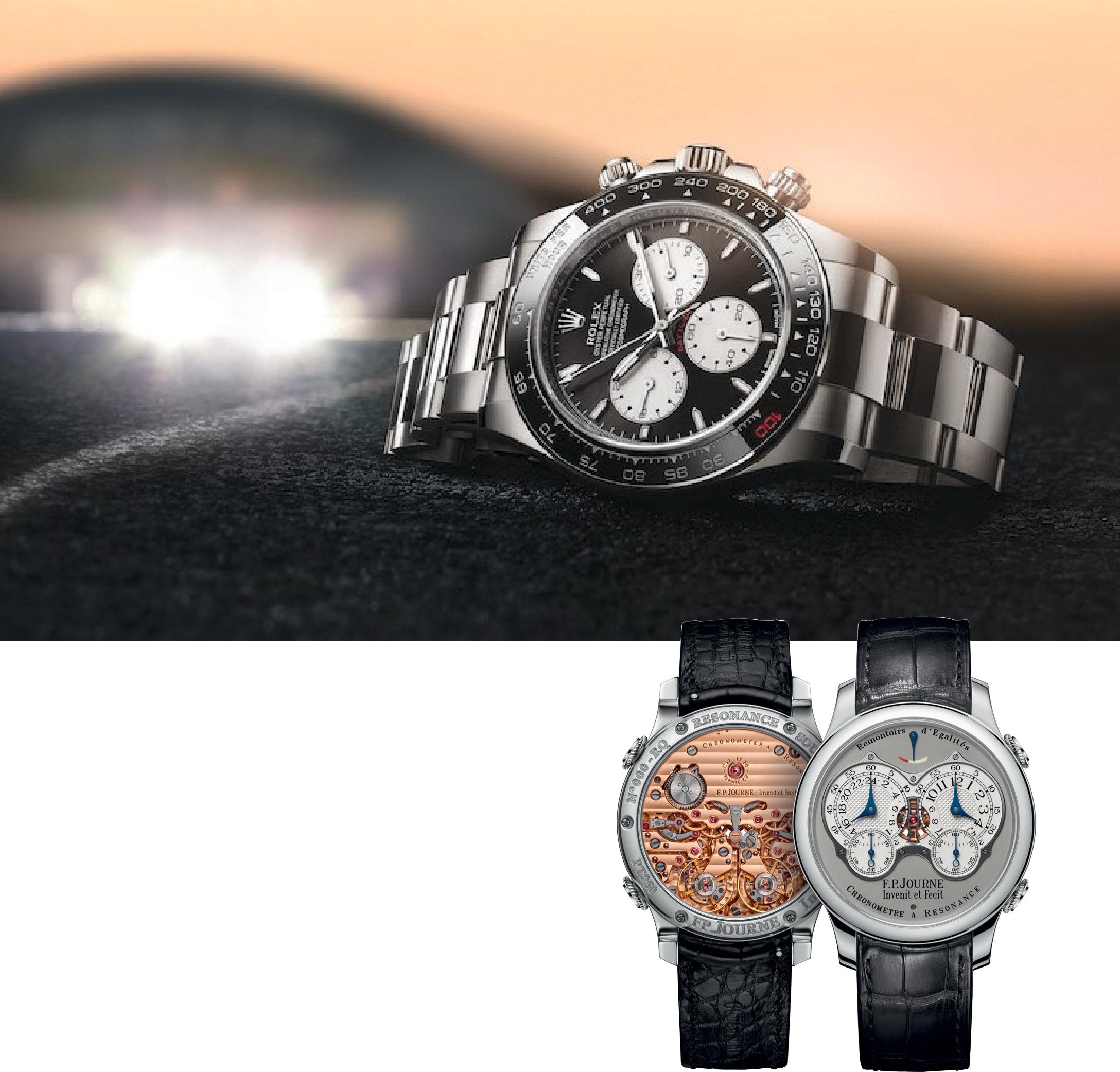
Last but not least, as cliché as it may sound: timing is everything. You can have a watch that’s in excellent condition from a great brand, but if the market is saturated or demand is low, selling or trading your watch might not give you the return on your investment that you hoped for. That said, this begs the question why now? Why is this a good moment to sell or trade in the secondary market? According to Edouard Caumon, Watchfinder’s U.S. Country Manager, there are three main reasons: choice, accessibility, and value.
“In recent years, the primary market has struggled with production and keeping enough inventory whereas when you come to a secondary retailer, you have a very wide selection thanks to growing interest in pre-owned and vintage and the practices of trading and selling,” he shares. This also translates to accessibility, and Eddie Goziker, President of the hybrid—online and brick and
mortar—pre-owned retailer, Wrist Aficionado, agrees. “The days where you can walk into a brand boutique or an authorized retailer and walk out with the watch you want no longer exists,” he says. “But if someone has a birthday, anniversary, holiday, or a gift to give, they don’t want to wait. The secondary market affords buyers instant gratification.” This brings us to Caoumon’s third reason that now is the time to sell and trade: value.
“Models from the big three (Rolex, Patek, and Audemars Piguet) are often selling for 50-60% above retail whereas other big brands like Omega, Breitling, TAG Heuer, and IWC have stabilized, which is good for both buyers and sellers.”
Trends are a loaded topic in any facet of the watch industry. In one respect, watches are inherently timeless. If properly taken care of, they’re meant
to last generations, and brands know the aesthetic needs to transcend passing fads. On the other hand, when it comes to understanding the best time to sell or trade your watch to get the best return on your investment, looking at trends is essential. Here are the top five trends experts are seeing in the market right now.
We know quiet luxury has been a growing trend not just in the watch industry but beyond. Tim Stracke, co-founder of the popular resale site Chrono24, confirms they’ve seen this to be true through their market index tool ChronoPulse based on the retailer’s years of real sales data. In one of the company’s latest reports, it saw models like the Grand Seiko Heritage Collection performing well, and even among bigger brands like Cartier, more discrete models like the Santos are outperforming others. “More and more, we see people wanting super high quality but less visibility of branding and logos,” clarifies Stracke.
Independents only make up a small portion of the secondary market thanks to their low production numbers. However, their popularity in the primary market has started to trickle over, and we’re seeing more and more independents appear in the secondary market. Because of their rarity, they consistently perform well, according to Giovanni Prigigallo, Co-Founder of Everywatch. “With many independents being newer to market and produced in smaller volume, there’s a lot of potential here. With their current performance, we’re only just starting to see their initial stages of growth.”
On the flipside, the big three continue to dominate the secondary market. This is precisely why Wrist Aficionado has chosen to distinguish itself by specializing exclusively in these brands and offering a brick-and-mortar counterpart to its e-commerce site. “When you’re dealing in the top three brands, people are making big purchases—$50,000, $100,000, sometimes millions of

dollars. We found it hard to build trust for these types of transactions online, so we began opening our stores where people could try on the watches before they made an investment. This improved our buyer’s experience as well as the seller’s, reducing the number of returns and exchanges.”
What if a buyer aspires to own one of the highly coveted models from the big three but isn’t there in their collecting journey yet? Enter sleeper hits. “If a customer wants a highly desirable model like a Nautilus, Daytona, or Royal Oak but can’t afford one yet, they will likely look to other alternatives from the brand,” ex-
plains Lazarus. “For instance, they might look at less desirable references from the 80s or 90s or even a more atypical model from the brand altogether.”
Diversity and inclusivity have also become major talking points within the watch industry in recent years. This growing desire for more unisex sizing and styling has directly contributed to growth in the secondary market. “One of the things I love most in today’s market is both men and women seeking so-called unisex watches,” says Caumon. “For example, my wife and I love sharing watches, and we see this more and more with our customers.”
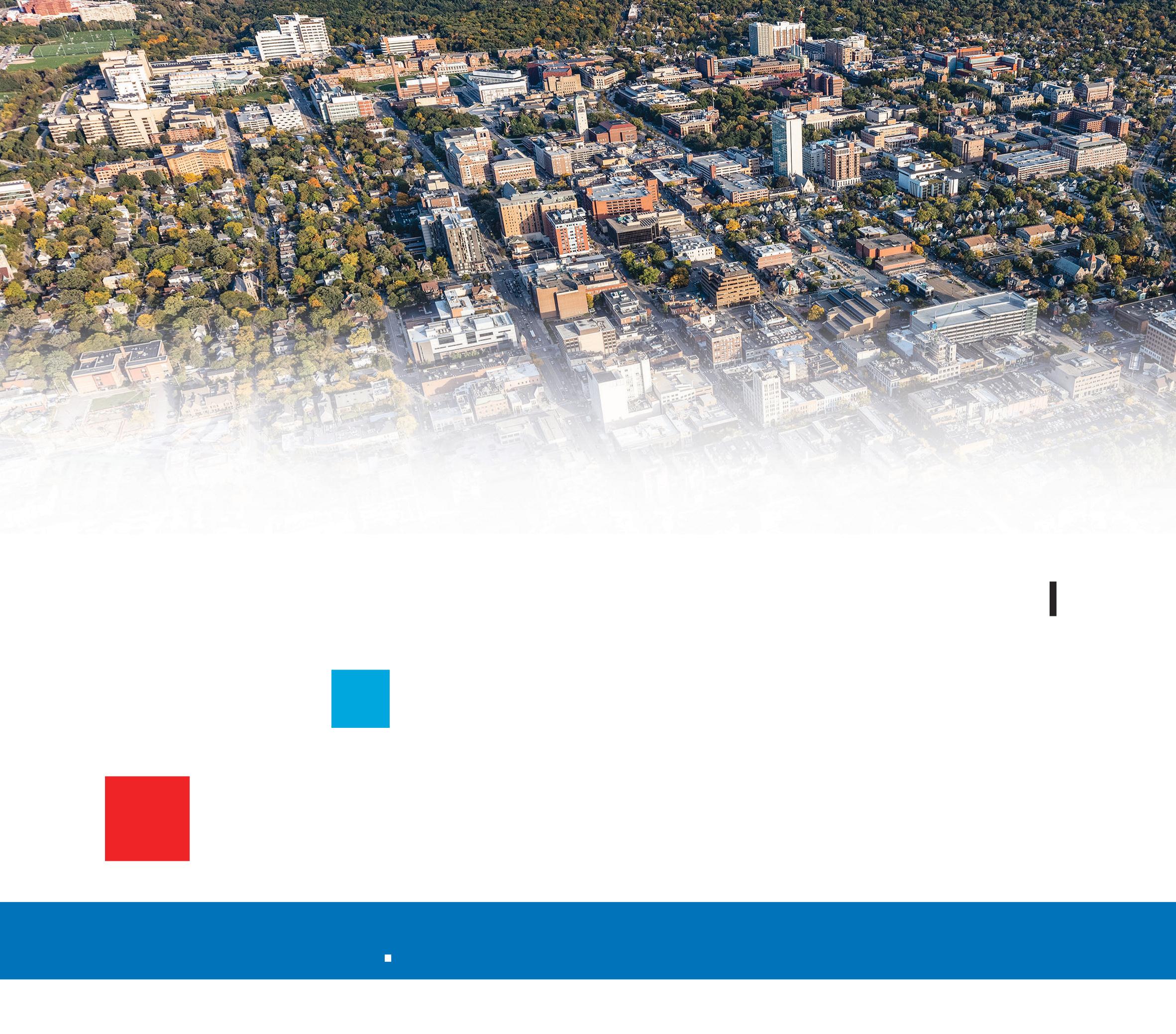
Immerse yourself in Chicago’s vibrant culinary scene, architectural wonders, and legendary music venues with our curated guide to the city’s must-do experiences.
BY KIRSTEN CLUTHE
Exploring Chicago is an ambitious endeavor. From the bustling streets of the Loop to the historic echoes of the Gold Coast, every corner offers a slice of the city that you’ll undoubtedly want to explore further. Regardless of the time of year, the Windy City’s dynamic energy never wanes, continually beckoning us to experience its allure. Chicago’s enduring charm and diverse offerings consistently place it among America’s most popular destinations.
The culinary scene is particularly vibrant right now, thanks partly to The Bear, which has reminded us of Chicago’s gastronomic richness. This resurgence has highlighted local culinary stars such as Grant Achatz, Anna Posey, and Erick Williams, among others, who continue to push the boundaries of flavor and innovation in the city’s bustling kitchens.
We’ve distilled the essence of Chicago into a collection of must-do experiences, but be warned: you’ll be so captivated by the city’s charms that you’ll be planning your return trip as soon as you board the plane home.
Jeanne Gang’s architectural brilliance shines through in the stunning design of the St. Regis, Chicago’s newest luxury hotel. It is also the tallest building in the world, designed by a female architect. The hotel’s silhouette adds a dynamic to the Chicago skyline, seamlessly blending modern aesthetics with classic luxury. The thoughtful use of glass and steel enhances the building’s visual appeal and allows for spectacular views from virtually every room.
The guest rooms are elegantly simple, in grays, white marble, and earth tones with blue accents that enhance the panoramic views of the city, lake, or river. Of course, flattering lighting enhances the soaking tubs and spacious, clean layouts, and a butler is available for every room. Pets are also welcome.
Signature Rituals are central to the St. Regis experience, and each hotel in the collection celebrates distinct daily rituals. In Chicago, The Bloody Mary Ritual pays homage to the classic cocktail with the 1871 Bloody Mary. An homage to the Great Chicago Fire, this version features a locally sourced rye whiskey served in a tall vessel that mirrors the hotel’s stature, presented in a smoking glass and finished with a rim of smoked salt. The Evening Ritual transitions between day and evening with a champagne sabrage. In this ceremonial technique, a bottle of champagne is opened with a saber, slicing off the top of the bottle with the blade. This dramatic method involves sliding the saber along the seam of the bottle to break the neck cleanly at the lip, a practice that dates to the time of Napoleon Bonaparte, who popularized it among his cavalry officers as a celebratory act after victories. Think of it as their way of saying you’ve won the day.
Located in the West Loop, Smyth is a three-Michelin-starred restaurant led by chefs John Shields and Karen Urie Shields. The restaurant emphasizes a farm-to-table philosophy, sourcing ingredients from a nearby sustainable farm. Smyth offers a tasting menu showcasing the chefs’ dedication to quality and innovation, with dishes highlighting the ingredients’ natural flavors. The intimate, rusticchic setting adds to the charm of this culinary gem. They earned their 3rd Michelin Star in 2023.
A hidden gem in the Fulton Market District, Oriole is a two-Michelinstarred restaurant helmed by chef Noah Sandoval. The restaurant offers a 15-course tasting menu that blends global influences with modern techniques. Sandoval’s culinary artistry is evident in every dish, focusing on balance, texture, and flavor. The warm, inviting atmosphere and impeccable service make Oriole a top choice for an unforgettable dining experience.
Located in Chicago’s Logan Square, Lula Cafe is helmed by Chef Jason Hammel. Lula has become a beloved staple in the Chicago culinary scene, with specialties like the roasted beet bruschetta and the seasonal vegetable-focused “Farm Dinner” series. Lula Cafe’s cozy, eclectic atmosphere and dedication to sustainable, locally sourced ingredients make it a standout local spot to enjoy any time of day.
If you have already been to Grant Achatz’s Michelin-starred restaurant Alinea, or if you’re still trying to score a reservation, allow The Aviary to provide you with similar satisfaction, delivered in a cocktail glass. Indeed, a cocktail bar like no other,

Achatz founded The Aviary with Nick Kokonas. Known for its avant-garde approach to mixology, The Aviary offers a sensory experience where each drink is a meticulously crafted work of art. Under the leadership of esteemed bartender Micah Melton, the bar presents innovative cocktails that push the boundaries of traditional mixology.
Who doesn’t love a mid-century-inspired bar that pays homage to the Martini? This intimate spot blends Parisian elegance with modern flair, featuring a menu crafted by skilled mixologists who excel in both classic and contemporary cocktails, like the L’Jardine—a freezer martini that blends Aqua Perfecta Basil Brandy, Vodka, and Cocchi Americano and is served—as the menu states—VERY COLD.
One of the best ways to experience Chicago’s architectural marvels is through a boat tour on the Chicago River. These tours provide an informative and visually stunning journey through the city’s iconic skyline. While gliding along the river, you’ll learn about the history and significance of buildings like the Willis Tower, Tri-

bune Tower, and the Wrigley Building. The experience is especially gorgeous in the fall when the city’s foliage adds color to the skyline. If you prefer to go at your own pace, you can rent a kayak from Urban Kayaks.
Once a gritty meatpacking district, Fulton Market has transformed into one of Chicago’s most dynamic neighborhoods. The area’s evolution began in the 19th century when it served as a hub for food distribution, surrounded by warehouses and wholesalers. The historical essence is still palpable today, as the district merges its industrial roots with a modern twist. Fulton Market is now a vibrant culinary destination, boasting some of the city’s top dining spots and chic cafes that attract foodies from around the globe. The area also boasts specialty cafes with house-roasted coffee, and unique boutiques selling indie fashion and furnishings, adding to its chic, urban charm.
Chicago’s music scene is deeply entrenched in the rich, emotional depth of the blues, a genre that has shaped the city’s cultural identity. Legendary musicians like Muddy Waters, Howlin’ Wolf, and Buddy Guy helped pioneer Chicago blues, creating a distinct sound that thrives in the city today. These artists laid the groundwork at
historic venues like the Checkerboard Lounge and Kingston Mines, where the soulful strains of the blues continue to resonate. Today, these clubs and newer spots like Buddy Guy’s Legends serve as stages for a wide array of blues performances and as living museums of musical heritage, drawing in locals and tourists alike to experience the authentic sounds of Chicago blues.
Legendary music venues to visit include Blue Chicago, a staple of the Chicago blues scene for over 30 years, providing a platform for both seasoned and emerging blues artists. Decorated with colorful murals depicting blues legends, Blue Chicago immerses visitors in a visual and auditory feast. It’s particularly noted for spotlighting female blues vocalists, as well as Kingston Mines, a club that is the city’s oldest continuously operating blues club. Since opening its doors in 1968, it has hosted a who’s who of blues greats, from Magic Slim to Koko Taylor, making it a true landmark for die-hard blues fans and newcomers alike. Located in the heart of Lincoln Park, Kingston Mines offers a lively, down-home atmosphere that promises an authentic blues experience seven nights a week. The club features two stages, allowing it to host live performances simultaneously and keep the music going well into the early morning.

Mathieu Roland-Billecart expertly combines heritage and modernity at Billecart-Salmon, ensuring the champagne house’s legacy continues to thrive.
BY DEBORAH GRAYSON AND JONATHAN RUSSO
If a casting agent sent Mathieu Roland-Billecart to audition for the role of a seventh-generation, globally successful, luxury champagne house director, he would be hired immediately. At least, that’s what we thought during a recent lunch with him at NYC’s Michelin-starred Le Coucou.
The 43-year-old is multilingual and business-oriented. He was made a partner in a British branch of the global accounting powerhouse, EY, and practically sparkles with infectious enthusiasm.
Descending from a family of vignerons and shipping merchants, Roland-Billecart’s visionary forebearers came to the Champagne region northeast of Paris centuries ago to try their hand at a new kind of wine, one with bubbles in it. The family’s proprietorship in Mareuil-sur-Aÿ vineyards dates back to 1545.
When we sat down with him, Roland-Billecart was in NYC to publicize the release of the 2012 Elisabeth Salmon and 2012 Louis Salmon 2012, and also to promote his limited bottling of his 2007 Clos Saint Hilaire.
Connoisseurs will appreciate the rarity of a champagne that is harvested exclusively from a onehectare (2.5 acres) plot and then matures for almost two decades before release. Roland-Billecart told us, “If you want to create greatness, you must have time.” Billecart-Salmon are proud members of Henokiens, an association of family businesses that have been in continuous operation for over 200 years. Put in perspective, this represents a brief moment in time, as vines have flourished in the area since the Romans cultivated them in the 5th century. By the 1850s, the region was still important, Paris being an easy river ride away. These wines quenched the thirst a burgeoning city demanded.
Today, at almost $600 per bottle, the house is barely breaking even on production from Clos Saint Hilaire, especially with a percentage of proceeds going to support the local food bank and environmental causes across the region. Because Billecart-Salmon is not a division

of a luxury-brand conglomerate, Roland-Billecart and his family can operate on a different model, making champagne without quarterly earnings being the sole focus. This doesn’t mean it’s not a balancing act; Roland-Billecart knows he must run a successful business for the extended family that are shareholders, but he also has the ability to focus on quality, and, as we will explain soon, the environment.
This allows him to invest in projects that sustain and enhance the family and company legacy.
Current customers are among the most impressive in the world of luxury. If you go to Van Cleef & Arpels for a bauble, you will be served a glass of their Brut Réserve while you shop. And, if you work up an appetite while shopping, his champagne is also available at Per Se, The French Laundry, Jean Georges, Daniel, Little Nell in Aspen, and London’s Connaught Hotel. Many of the super-star chefs who run these restaurants are


on record raving about the different cuvees, each of which, in its own way, compliments their food. All told, the wines are available in 120 countries, the U.S. representing their largest foreign market.
Roland-Billecart’s journey on the ethical road began when he banned all weed killers and chemical fertilizers in 2018. His predecessors started the process eight years earlier when they began experimenting with permaculture. In 2019, Roland-Billecart officially started the conversion to organic practices. It’s one thing to do this in the arid South of France, like Languedoc-Roussillon. It’s another in the wet, cold region where Champagne is located, and mildew is a constant threat. But he was undeterred.
“This is something I had to do for my family, the earth, and all future generations.”
Another avenue Roland-Billecart is exploring is whether certain tree species will adapt to climate change while aiding vineyard growth. So
far, he has planted 15 varieties but will have to wait years before he has an answer. “The short-term solution may not be the long-term solution.”
As European temperatures rise, the southern regions of Italy, France, and Spain are already in crisis. Olives and grapes are stressed, and production has plummeted. Vineyards are being ripped out, and hot-weather crops are replacing them.
Further north, where BillecartSalmon is located, climate change is less dire, but the Champagne region is affected. “Our growing and harvesting calendars are not the same as they were 25 years ago. We have to acknowledge this.”
Our lunch over, Roland-Billecart headed out to a private party at Daniel’s new restaurant Maison Barnes, where culinary glitterati gathered to celebrate the release of the 2012 Elisabeth Salmon and 2012 Louis Salmon, having set the stage for the 8th generation of champagne makers.
Bianca Bosker embarks on a captivating journey, exposing the elitist barriers of the art world.
BY JASON ASHLOCK
BOOK
BY BIANCA BOSKER
Fred McDarrah had a 30-year love affair with a street. The clumsy, cluttered charm of Manhattan’s ever-changing 14th Street won the affection of the original photo editor of The Village Voice. In a “It’ll be a great place if they ever finish it” kind of project, McDarrah photographed every building on every block once every ten or so years from the 1950s to the mid1980s. Amidst a city in dramatic flux, McDarrah’s images captured the art galleries of 14th as a generational red thread, a permanent Manhattan-henge of creativity and community.
These days, such artist’s nooks are long gone, their storefronts surrendered to chain pharmacies, Chipotles, and tchotchke shops. The galleries are elsewhere. And you’re unlikely to find them. Storefronts are passe (as one gallery attendant said, “public stuff is so corny”). Nowadays the galleries are hidden from the hoi polloi as one of the art world’s purposeful ploys to preserve its mystique.
In her rollicking expose Get the Picture, Bianca Bosker discovers
real estate is only part of “the machine,” a system designed by the art world elite to keep “Joe Schmo” away from the goods. Language, accessibility, institution, ritual, and capital are deployed with extraordinary and disturbing discipline. The goal: ensure anyone not baptized into the cult won’t get within an Anish Kapoor-sized bean of a gallery’s collection, and if they do, they will soon find themselves humiliated by their lack of initiation and show themselves the nondescript door. Bosker, both triggered and intrigued by such cultural gatekeeping, goes about a multi-year undercover project to understand the game’s rules. She finds both a self-serious world badly in need of a send-up and her renewed sense of adoration for the power of art.
This particular form of immersion journalism reveals and enacts Bosker’s values: cultural doors should be open to all, so she opens hers. As in A.J. Jacobs’ A Year of Living Biblically, or more seriously, David Shields’ Black Planet, the work is as much about the pilgrim as the holy land she’s traveling. And that sacred land is a social minefield, booby-trapped to break spirits and bend individual will to the requirements of “the Heads,” those individuals who play an outsized role in determining which artworks go from obscurity to the pantheon of illustrious cultural artifacts. However much an artist creates from their exceptionally gifted interior, they’re tied to the market “by an umbilical cord of gold” to use Clement Greenberg’s distressing visual. In Get the Picture, we witness what happens when art brings a paintbrush to a commercial firing range. The results are bruising for the players,
maddening for the witnesses, and damning of the establishment’s self-importance. Bosker’s not as earnest as Nellie Bly, but halfway through her immersion, it’s clear she may, in fact, have embedded herself in the asylum.
Bosker’s funny (“Until now, I would have ranked color way down on my list of interests, right near the football and your decision to go gluten-free”). Her intellectual range is admirable. And her gumption is riveting and rare. But the more I read her clever prose, the retelling of her misadventures became less entertaining and more demoralizing. At a certain nadir of the narrative, Bosker sums up the plight of artists caught up in frigid waters of art fairs and auctions, who are “not emerging but submerging,” while in parallel lamenting what’s lost for the rest of us. Kept at a remove from beautiful and symbolic objects and bludgeoned by the belief we aren’t fit to interpret such work, we are separated from what the biologist J.Z. Young describes it as “a characteristic feature of the human way of life, as necessary to us as food or sex.”
Bosker’s book tilts more toward indictment than illumination despite her managing to surface an aphorism from the anomie. “Art is practice for appreciating life but also practice for creating a life worth appreciating.” A noble insight backed up by a requisite series of practical recommendations for experiencing art directly, unmediated by the forced context of wall plagues and obtuse commentary. Art enables a more beautiful life, Bosker claims, but the production, distribution, and
access to such art are all owned by complex and cynical machinery that possesses so much less interest in beauty than commerce that its energies are predominantly spent in the dedemocratizing of artistic experience.
It wasn’t just McDarrah’s ghost that haunted me while I followed Bosker’s misadventures. I mainly thought of Peter Schjeldahl and kept wishing that, on any page now, Bosker would bring him into conversation. Schjeldahl’s view of the art world was that of a community of unflappable, undaunted creators, networked through wild energies and dependent on the collective exchange of experiments and discoveries (and yes, even lovers) The work Schjeldahl confronts over decades of observations brings out such exuberant and vulnerable prose: he once described being “beaten to a pulp of joy” by a de Kooning show and claimed “Matisse stimulates the mind to analysis and then slaps it silly with audacities ” Schjeldahl’s roaming through a gallery is pure, unmediated pleasure and interpretation through the lens of marvel It’s close to something McDarrah once told me: you’re standing in a studio, watching Norman Bluhm balance on a ladder, and only an hour later, remember you have a camera in your hands The art world described in Get the Picture has no room for such honest, human frisson.
But Bosker’s a craftswoman herself: no narrative satisfies entirely if it leaves you in the desert Part of the joy of Get the Picture is watching a human find
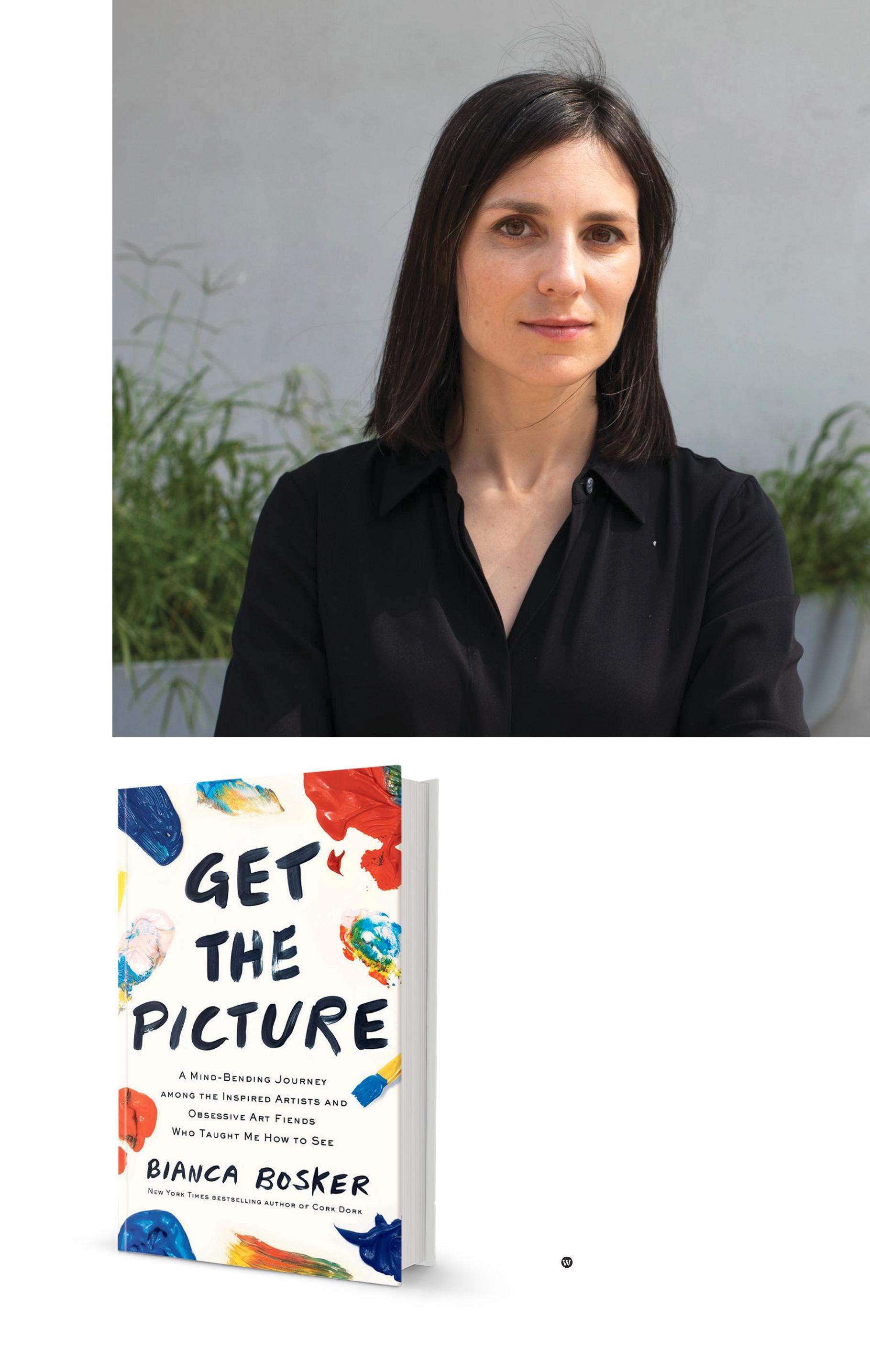
her way back to the mystery and magic of art – ancient and modern, and even contemporary The apostate pilgrim learns how to worship By the book’s end, Bosker has shed the accouterment of those hidden galleries and exchanged the disinterested aloofness for genuine confrontation and even conversation with the art that had for too long been quarantined by codewords and context In this freedom is the seeing Bosker had gone search for. Her discovery of it is ours as well Schjeldahl would have been proud “Looking at art,” he once told Jarrett Earnest, “is like, ‘Here are the answers What were the questions? I think of it as espionage or ‘walking the cat back’ – why did that happen? And that? Until eventually you come to a point of irreducible mystery.”
AS THE FALL AND WINTER MONTHS APPROACH, HERE’S HOW YOU CAN FILL THOSE SHORTER DAYS AND LONGER NIGHTS.
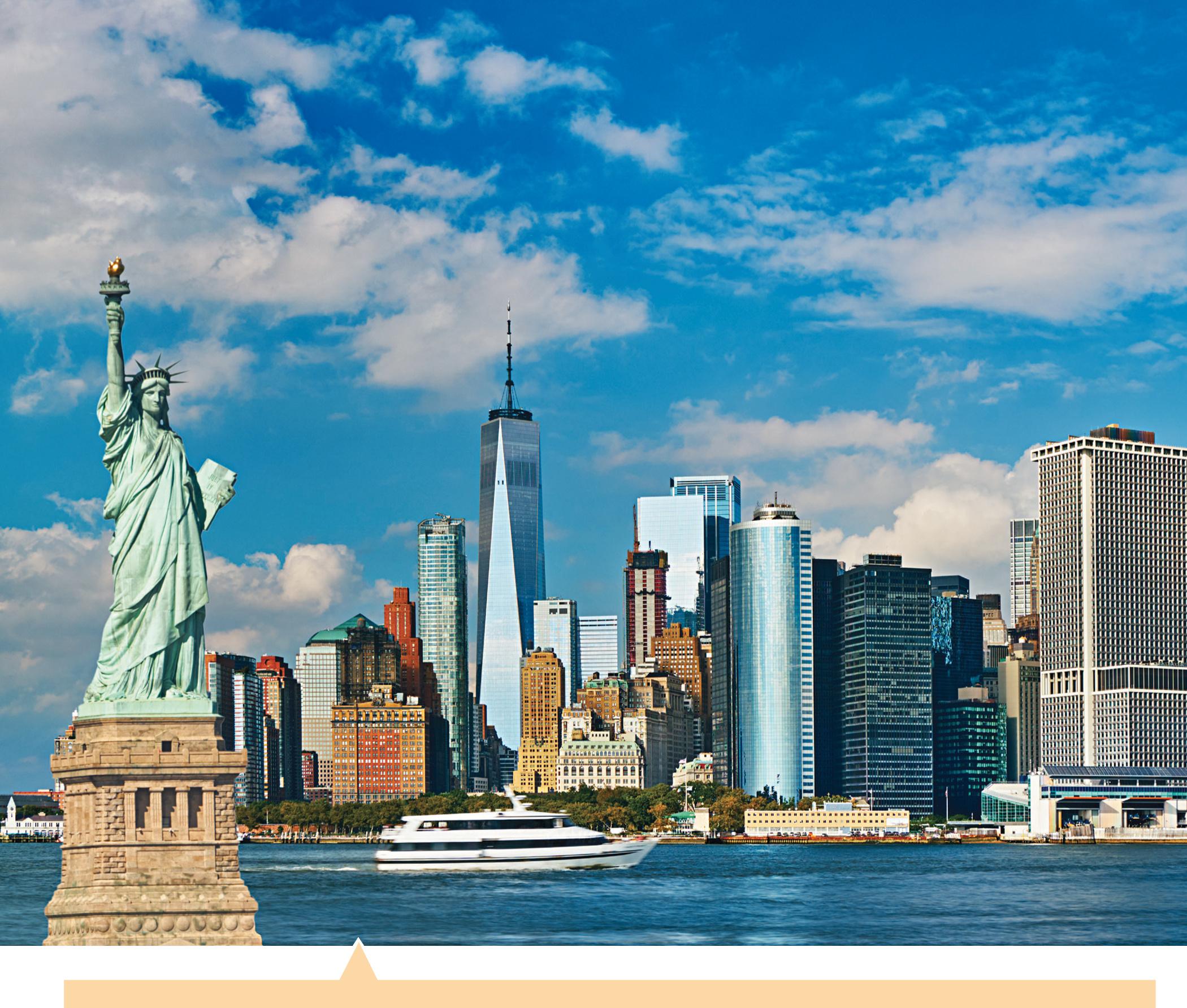
SEPTEMBER
SEPTEMBER 25, 2024
NEW YORK, NY
Leaders, innovators, and influencers from diverse sectors will come together to explore and amplify sustainable practices that drive significant environmental changes. Attendees will engage in a day filled with panel discussions, workshops, and networking opportunities.
OCTOBER
OCTOBER 7-9, 2024
MARINA DEL RAY, CA
The event is designed exclusively for RIA executives. Don’t miss the opportunity to learn from executives running the most successful and fastest growing RIA firms in the country.
OCTOBER 30-NOVEMBER 3, 2024
FORT LAUDERDALE, FL
The Fort Lauderdale International Boat Show is the best boat show across the seven seas. Over five days, over 100,000 attendees, 1,000 exhibitors, 52 countries, and 1,300 boats will be on display.
SEPTEMBER 14–15, 2024
CAMBRIDGE, MA
At Harvard University this September, Deepak Chopra will host an unparalleled assembly of visionaries, including world-renowned entrepreneurs, philosophers, and influential artists at the forefront of their fields to unite in conscious collaboration. The Chopra Foundation invites you to join this transformative movement to help unlock innovative pathways to the most pressing global challenges related to well-being, humanity, and the cosmos.
NOVEMBER DECEMBER
NOVEMBER 17-19, 2024
ORLANDO, FL
Our featured annual retreat includes business and tech executives, thought leaders, entrepreneurs, investors, and top academics for deep and provocative dives into the most consequential issues of our time.
DECEMBER 6-8, 2024
MIAMI BEACH, FL
Art Basel at Miami Beach ranks as North America’s most comprehensive international contemporary art fair. Returning for its 21st edition, renowned artists, and galleries from around the world come together to bring their highest quality work to the United States.

